RINGS HAMMER AUCTION 17 JUNE
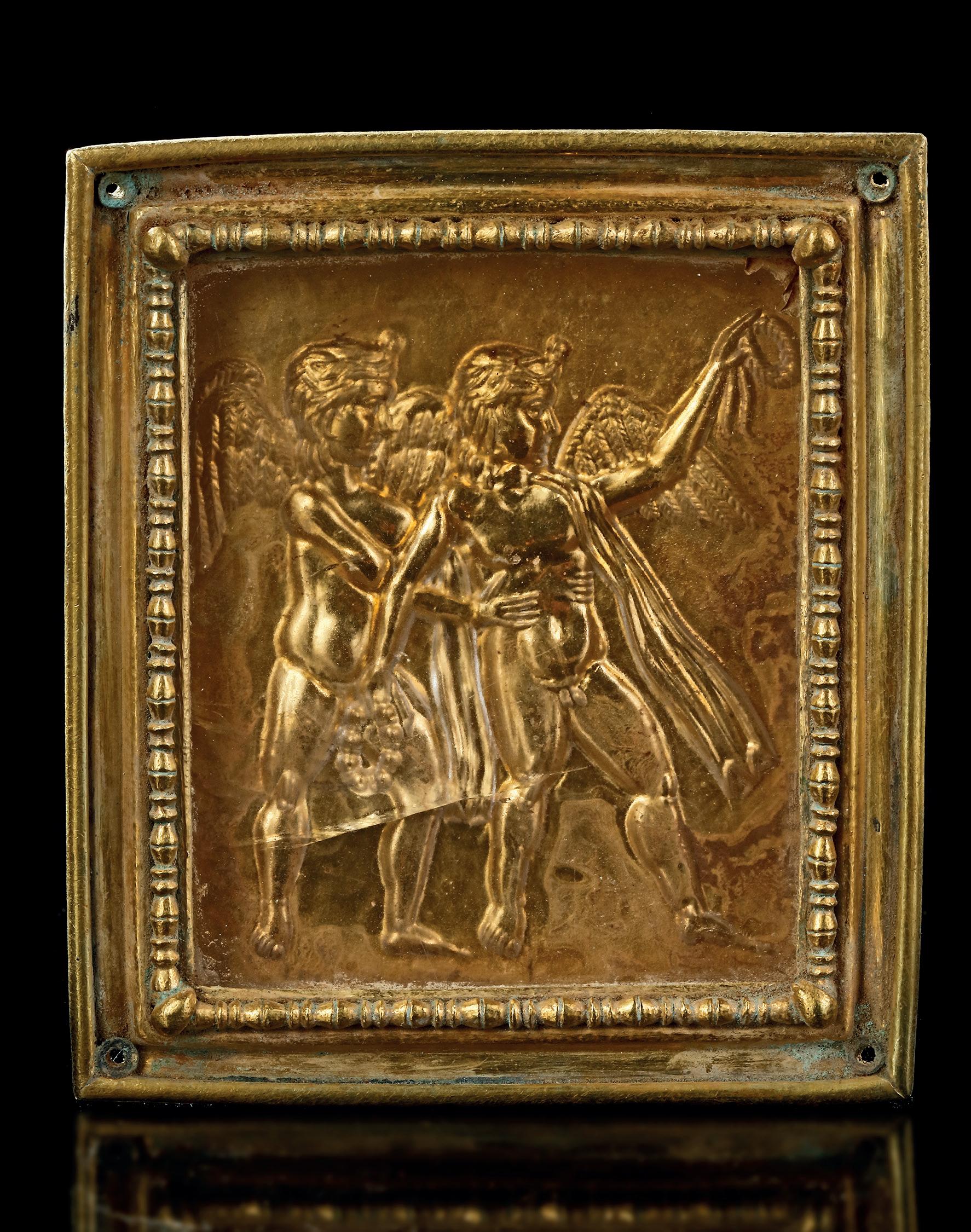

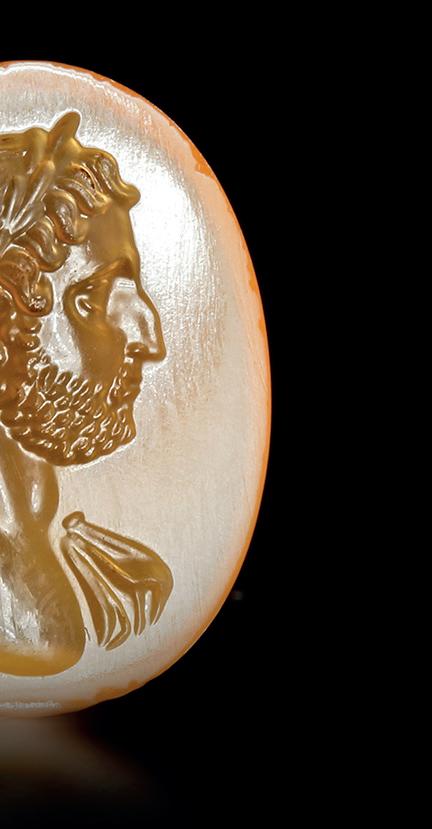
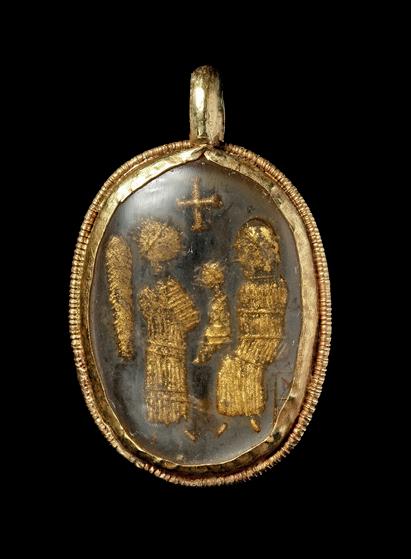
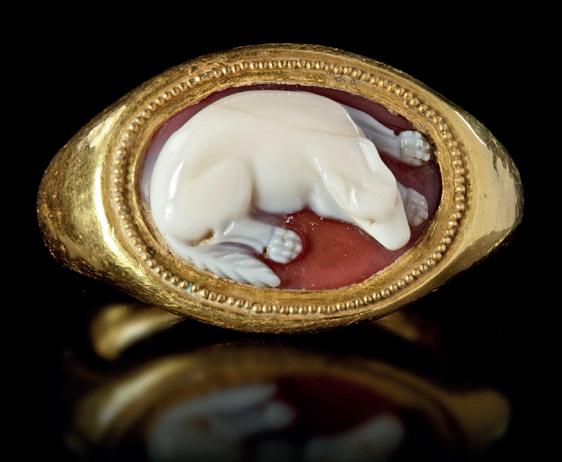
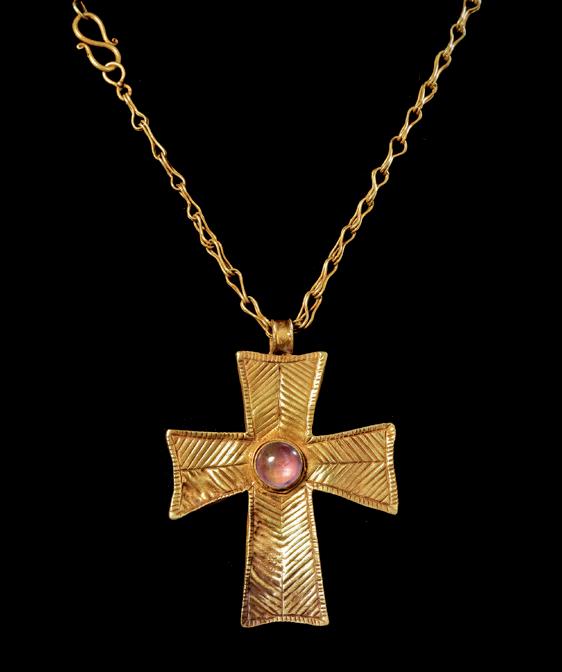
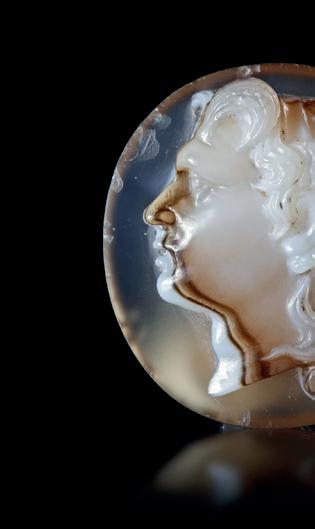








tel: +31- (0)38-3380783

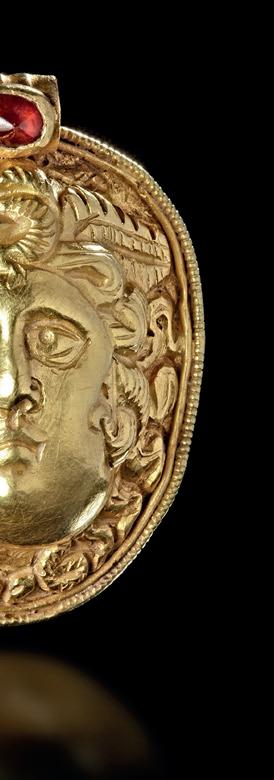

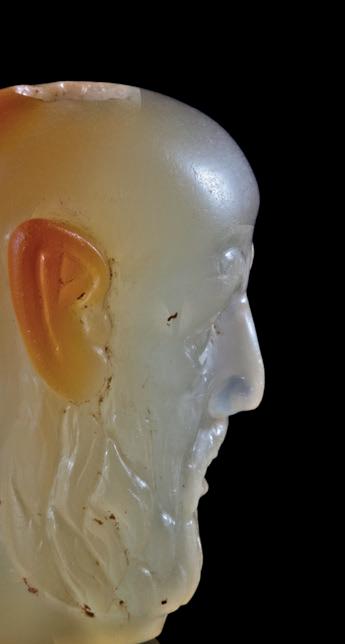
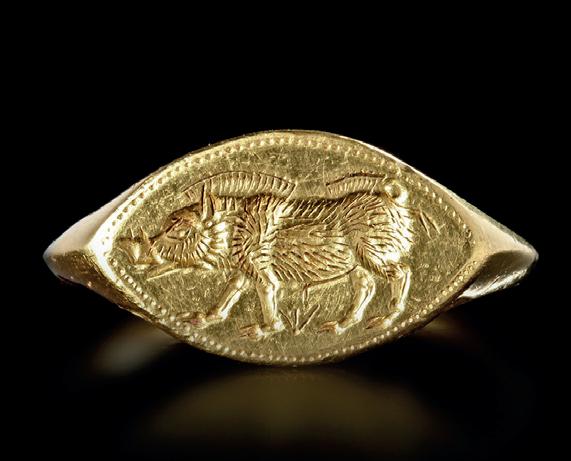

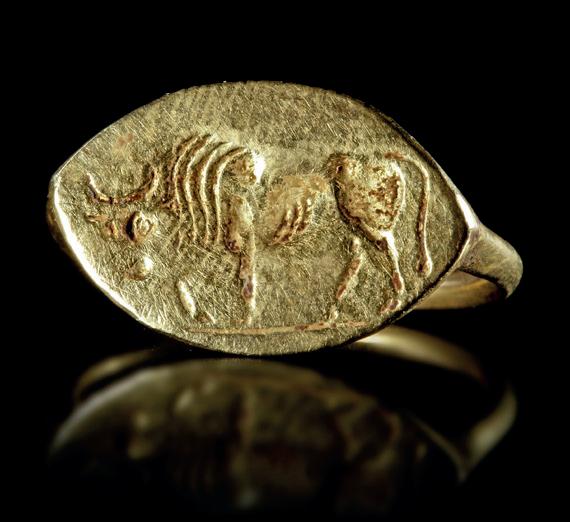
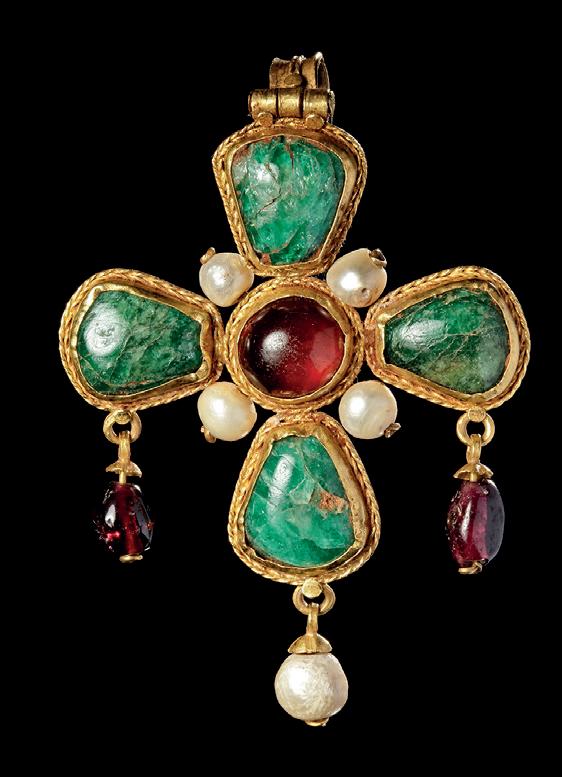
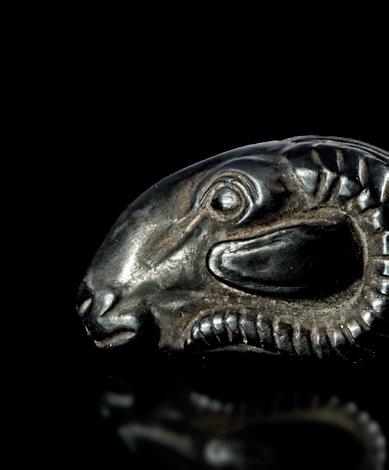
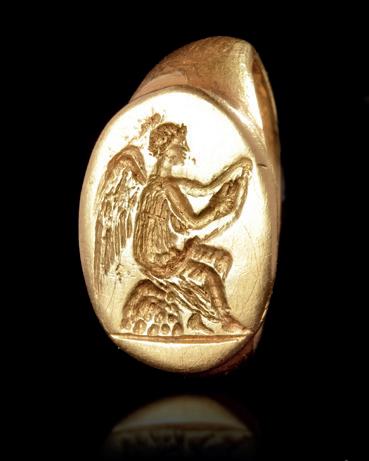
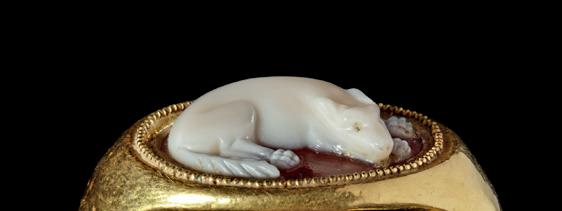
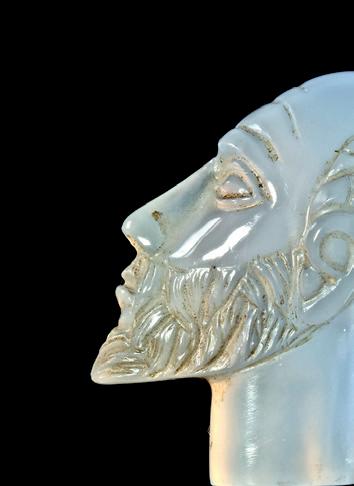
info@orientalartauctions.com www.orientalartauctions.com
CoC. 66070651
VAT no. NL856383405B01
General
70 lots
Auction status: opened
A live video stream is available during the auction
Start of auction: Jun 17th 25, 11:00:00 CEST
Catalogue available: to be announced
Viewing days
Viewing days:
Jun 12, 2025 11:00:00 AM - 4:00:00 PM
Viewing address:
Oriental Art Auctions
Warmtekrachtstraat 2 8094 SE Hattemerbroek
Bidding
Bid methods: Internet bid, Written bid, Phone bid, Room bid
Pre bidding on lots is available until Jun 17th 25, 10:00:00 CEST . The starting bid in the live auction will be the last bid from the pre-bidding phase.
Submit any written bids or phone bids before Jun 17th 25, 10:00:00 CEST . During the live auction you can submit internet bids live through our website.
Shipping
World wide shipping available, rates vary by destination and complexity. Contact the auction house for more information.
Payment methods
American

A ROMAN SEAL OF A LIZARD WITH A GRASSHOPPER, 1ST/2ND
A bead/seal made of a variegated orange jasper showing a lizard with a grasshopper in its mouth. The lizard is often used in gnostic iconography as a symbol for rebirth, the possibility of a Christian connection cannot be ruled out here.
25 by 14 mm.
Weight: 5.4 gr.
Estimate € 1500 - € 2000


4
A MINOAN STAMP SEAL WITH A CUTTLEFISH, c.1500-1300 B.C.
An oval Minoan stamp seal showing a cuttlefish. The seal is made of a banded agate and has a rounded back. A narrow piercing through the long axis of the stone would have been for suspension. This seal is a good example of the wondrous realism achieved by Minoan artists when observing nature.
24 mm x 18 mm x 14 mm
Estimate € 1500 - € 2000
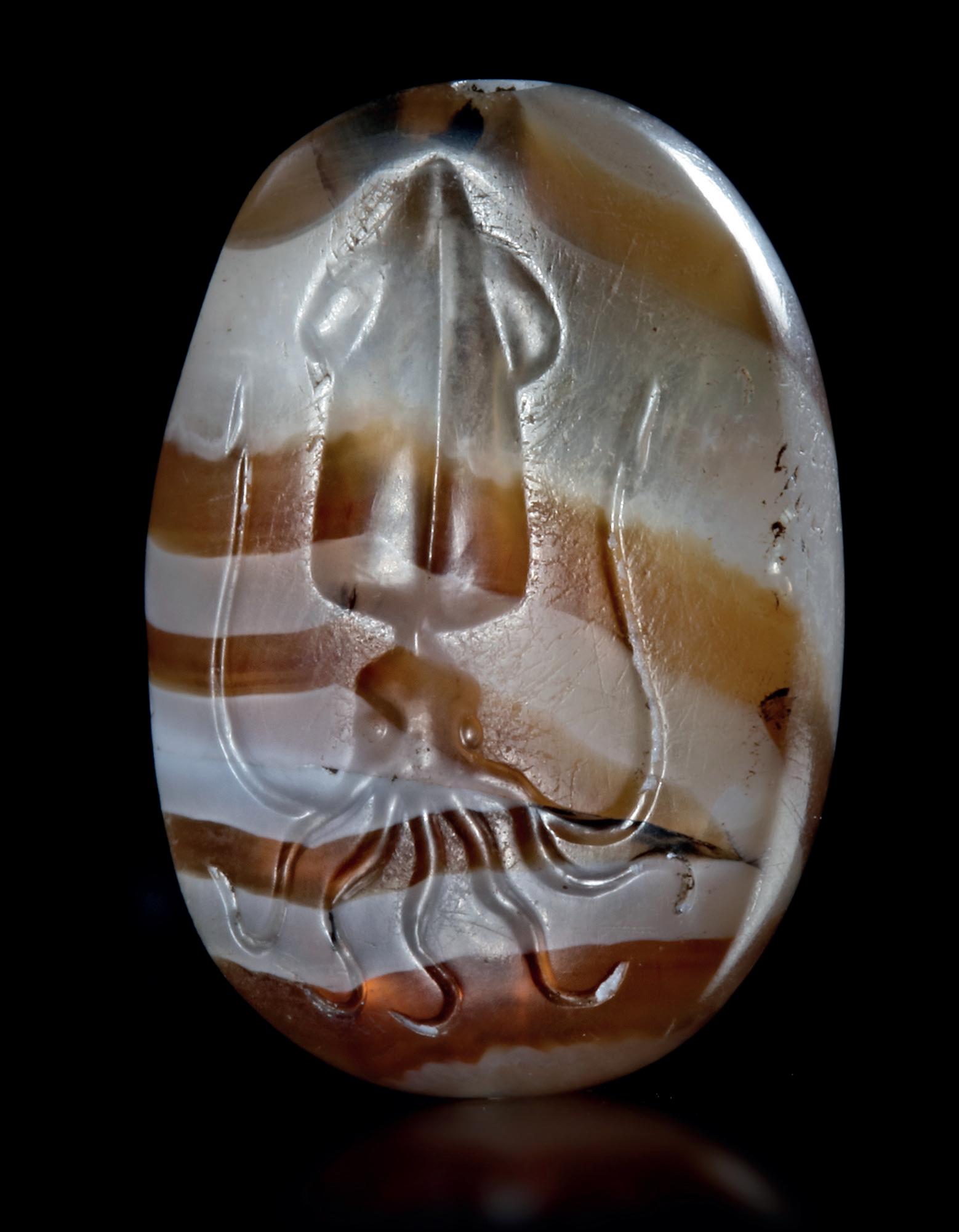
Lot 3
A CHALCEDONY STAMP SEAL WITH DAGON, 6TH-7TH CENTURY
An elaborate stamp seal with a carved faceted back and the seal showing an attendant with Dagon the fish god.
Height: 30 mm.
Diameter: 20 mm.
Estimate € 1200 - € 1500
A CARNELIAN AMULET/SEAL IN THE SHAPE OF A LEG, CIRCA 700 BC
A carnelian amulet in the shape of a lower leg. On the sole of the foot there are five Aramaic/Phoenician letters. The leg is mounted in a gold cap with a suspension hoop. with Aramaic letters 28 mm.
PROVENANCE
Ex-European private collection acquired before 1970
Estimate € 800 - € 1000

Lot 5

A PHOENICIAN GOLD RING, 5TH TO 4TH CENTURY BC
A Phoenician gold ring, made of a filigreed wire shank and a flower shaped bezel decorated with six inlay to form the petal. Filigreed gold globules are added to the shank as decoration.
24 by 23 mm.
Weight: 6.3 gr.
PROVENANCE
From a European collection since the 1980's.
Estimate € 4000 - € 5000

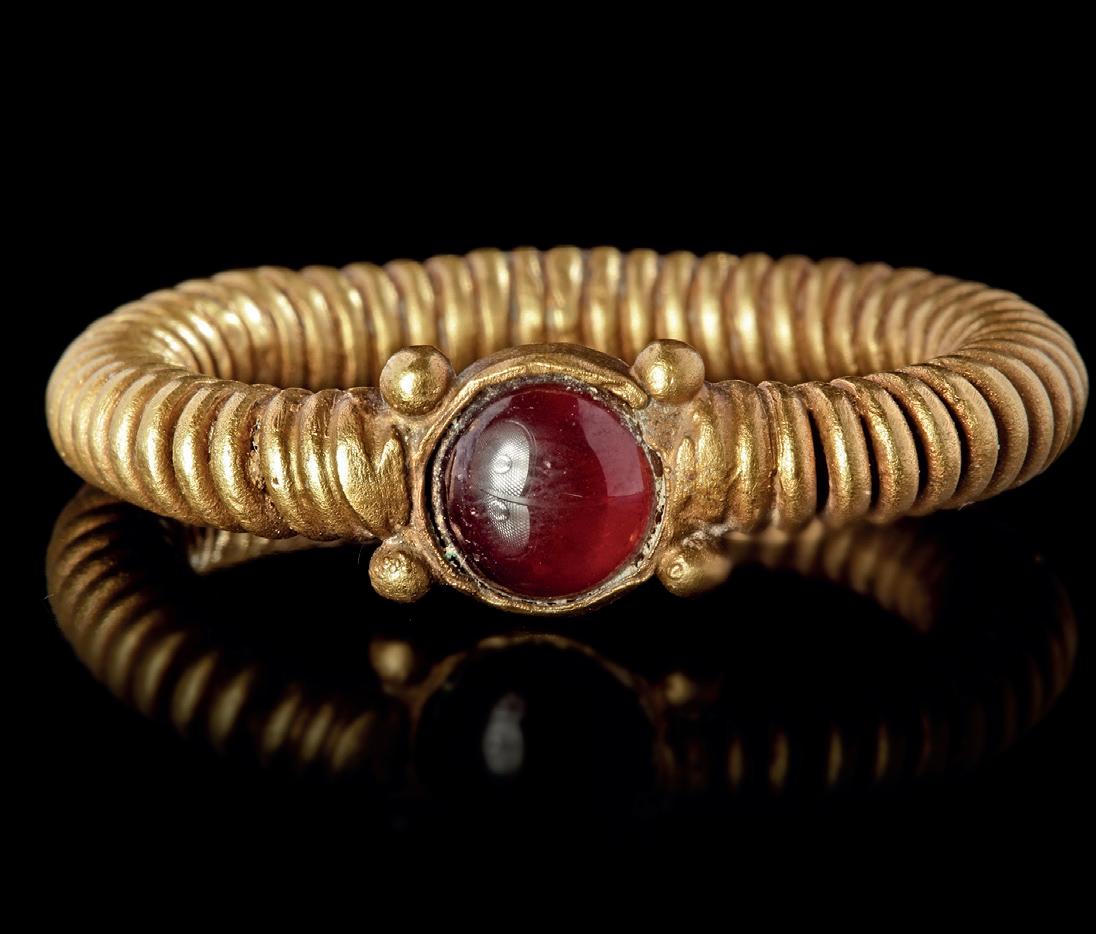
Lot 7
A PHOENICIO - RING WITH A CARNELIAN SCARABOID, 7TH-8TH CENTURY BC
A Phoenician- electrum ring with a carnelian scaraboid engraved with a flying scarab beetle. The head of the beetle is adorned with feathers which seem to combine the image of Bes along with the insect. The use of electrum is also normal during this period.
29 by 25 mm.
EU Size: 13
7.2 gr.
PROVENANCE
From a European collection since the 1980's.
Estimate € 1500 - € 2000
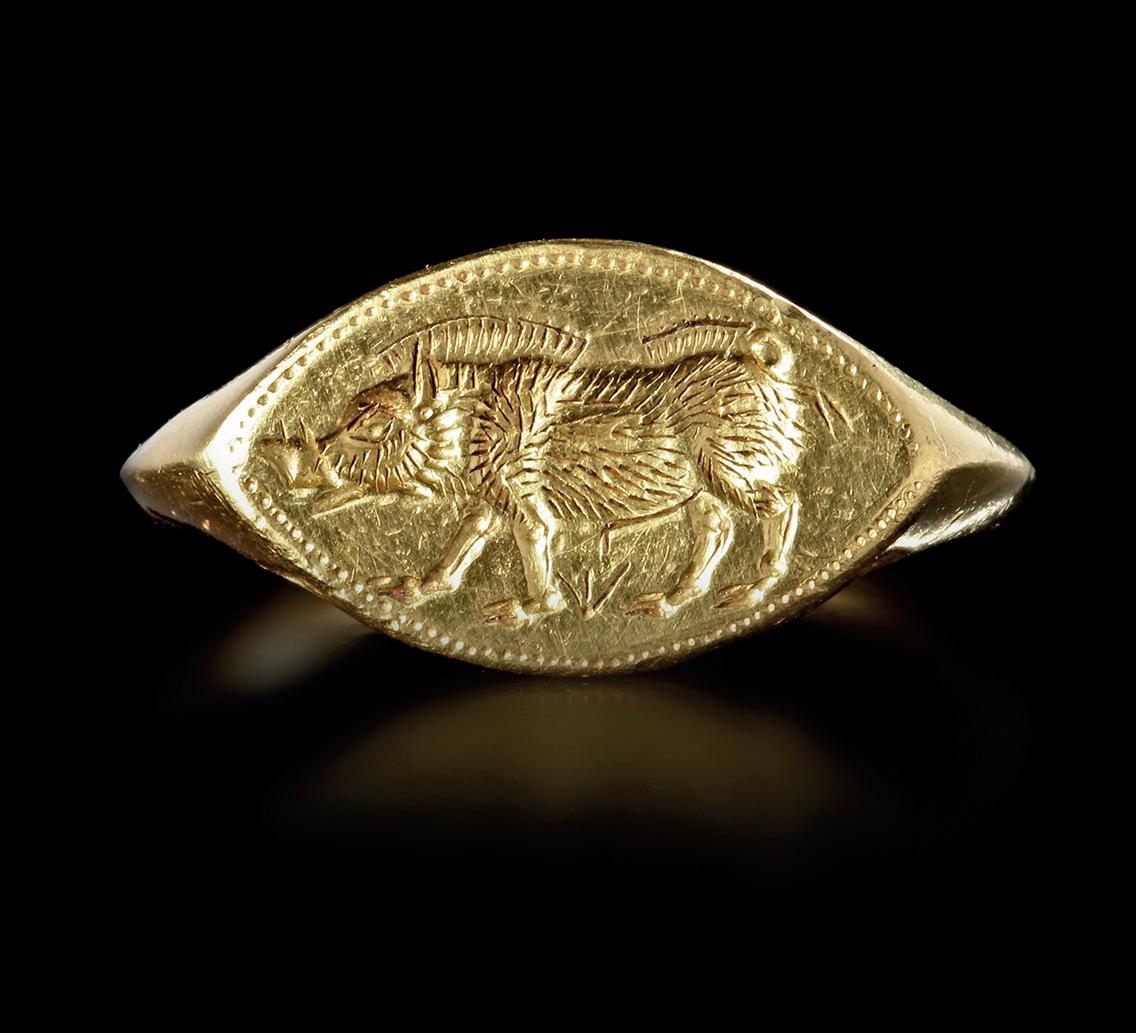
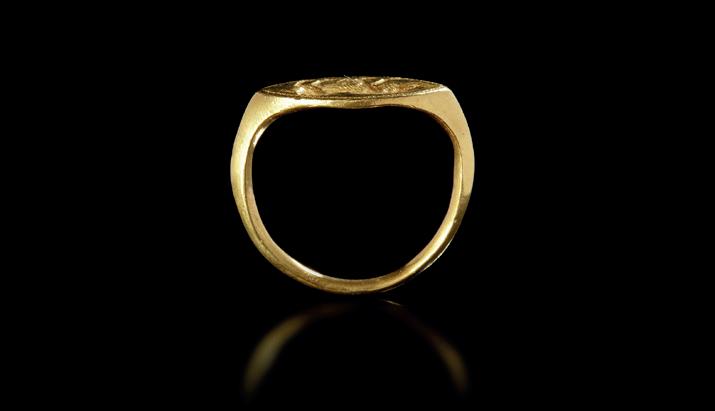
A PHOENICIAN GOLD RING, 5TH-6TH CENTURY BC
A Phoenician gold ring made from a tightly coiled wire which had been soldered to keep it rigid. The shank in this case is a small circular cell holding a cabochon garnet, flanked by four gold globules. Gold and garnet. Phoenician 5/6th.c.A.D.
30 by 15 mm.
Weight: 7.5 g.
EU size 14
Estimate € 1500 - € 2000
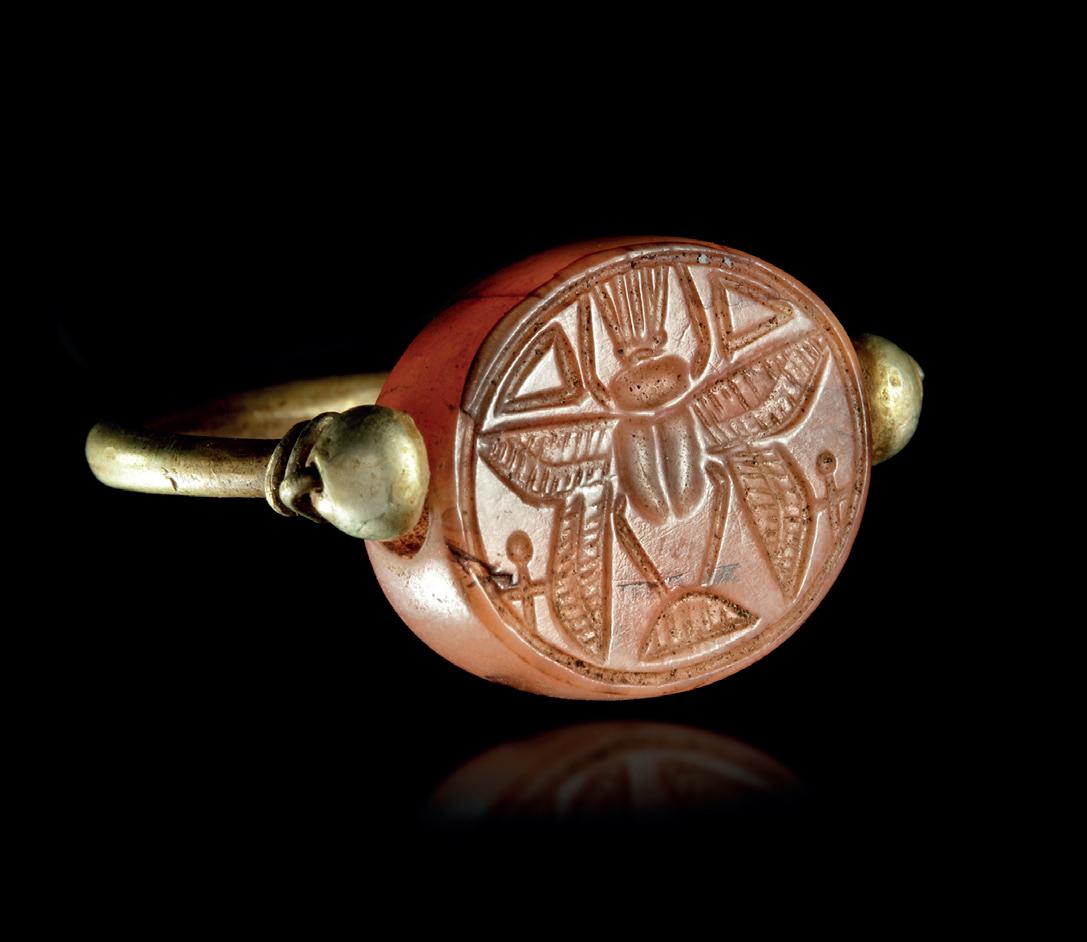
Lot 8
AN ARCHAIC GREEK GOLD RING FEATURING A WILD BOAR – CIRCA LATE 6TH CENTURY BC
This exquisite gold ring dates back to the late 6th century BC and represents a striking example of Archaic Greek craftsmanship. The bezel is intricately engraved with the image of a wild boar, captured mid-stride with finely incised lines that highlight the animal’s bristling fur, alert posture, and muscular form—symbols of strength and vitality in ancient Greek culture. The ring’s elliptical face is bordered with a delicate beaded pattern, adding elegance and balance to the bold central motif.
With its smooth, slightly tapering hoop, Size: 18
Weight: 6.71 gr.
PROVENANCE
From a European collection formed in the 1980's.
Estimate € 3500 - € 4000
A LATE HELLENISTIC GOLD RING WITH AN INTAGLIO OF APHRODITE/VENUS.
2/1st.c.B.C.
A late Hellenistic hollow gold ring with an orange agate intaglio showing naked Aphrodite/Venus standing with Eros standing facing her and offering a jar of perfumed oil.
23 mm x 26 mm
PROVENANCE:
From a European collection formed in the 1980's.
Estimate € 2000 - € 3000
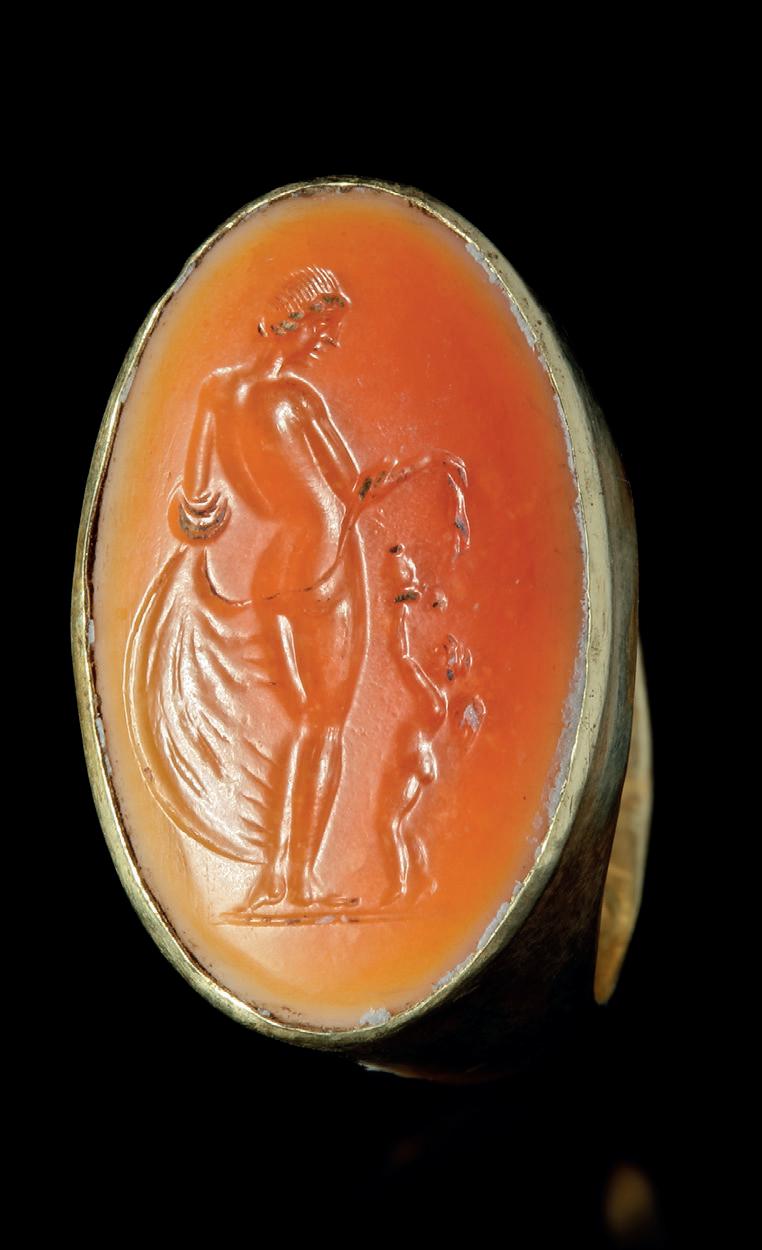

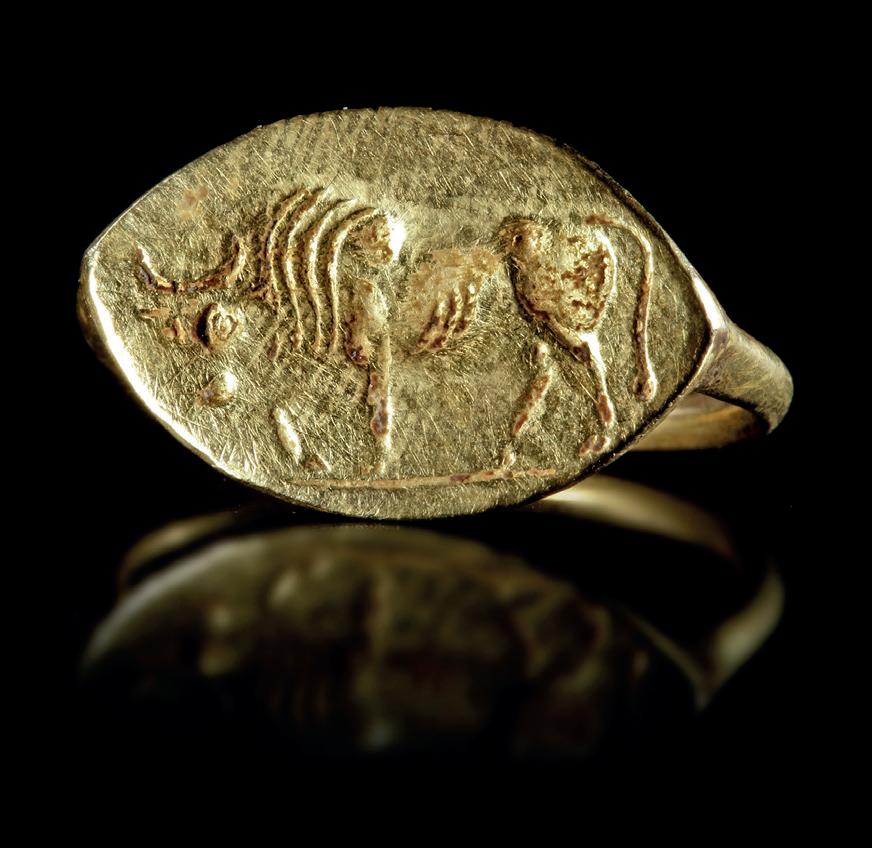
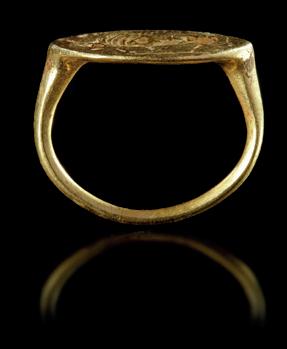
Lot 10
AN ARCHAIC GREEK GOLD RING WITH A BULL, CIRCA LATE 6TH CENTURY BC
An early Greek gold ring showing a bull walking to the left, the bezel is an oval lozenge shape while the underside is bevelled and the shank has a ridge, typical of Greek rings of this period.
19 by 22 mm.
Size: 14
Weight: 6.5 gr.
PROVENANCE
From a European collection formed in the 1980's.
Estimate € 2000 - € 3000

Lot 11

A HIGHLY IMPORTANT HEMATITE WEIGHT OF THREE SHEKELS, 6TH-8TH CENTURY BC
A highly important hematite weight in the form of a ram's head. This magnificent weight, one of the finest known, shows the well detailed head of a ram.
While these weights vary somewhat, this is clearly a three shekel weight using a slightly heavier standard than is usually come across.
29 by 18 by 17 mm.
Weight: 23.5 gr.
Estimate € 1500 - € 2000

Lot 15
Lot 12
Lot 14
SCARABOID WITH JUGATE HEADS OF HERACLES AND APPOLO. 4/5th c AD
A variegated stone scaraboid with the heads Heracles and Apollo facing right. The gods Heracles and Apollo, while half brothers, were often at odds with each other, therefore their appearance on the seal suggest their connection of the owner to the Macedonian dynasty. This type of stone was popular at the time as attested by the famous scaraboid of Perseus from the Sangiorgi collection. The back is plain save for a central ridge.
21 x 16 mm.
Estimate € 3000 - € 5000
AN EASTERN GREEK SCARABOID SEAL WITH A STANDING OWL, 5-4TH CENTURY BC
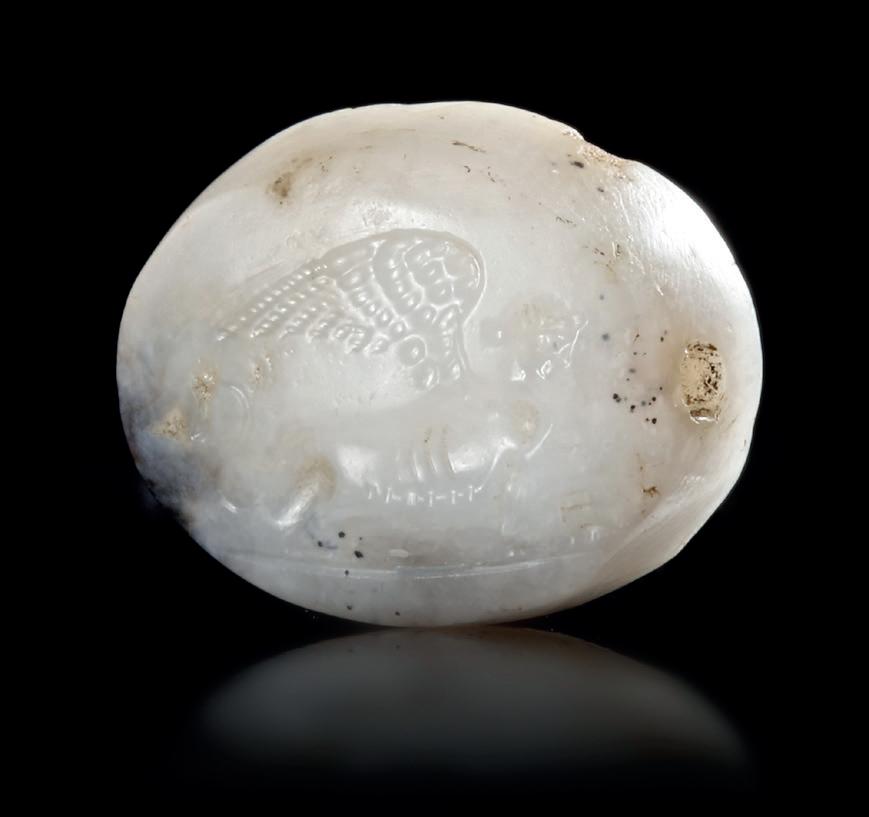
A GREEK SCARABOID WITH A SPHINX.
3/4th.c.B.C.
White agate with inclusions.
A Greek scaraboid in a white agate like stone with a Sphinx facing left. A very well engraved seal of a Sphinx standing in front of a small altar.
21 mm x 17 x 11 mm
Estimate € 1000 - € 1400 Lot 13
A GREEK RED AGATE SCARABOID DEPICTING A RUNNING DOG – 5TH TO 4TH CENTURY B.C.
This dynamic Greek scaraboid, expertly carved from lustrous red agate, dates to the 5th–4th century B.C. and showcases the vivid image of a dog caught in full stride. The sleek, muscular form and forward thrust of the limbs convey motion and energy, emphasizing the animal’s agility and alertness. Likely used as a seal or personal ornament, 2.2 by 1.6 cm.
Weight: 7.17 gr. Estimate

An Eastern Greek in red variegated agate with a chalcedony inclusion. This scaraboid is made from a a deep red/brown agate with the back showing a layer of a blue/grey stone. The seal is a standing owl as often seen on the coinage of Athens. This would have been used a personal seal and may have been the heraldic device of the family.
15 mm x 12 x 5 mm.
PROVENANCE
Ex-European private collection acquired before 1970
Estimate € 600 - € 800
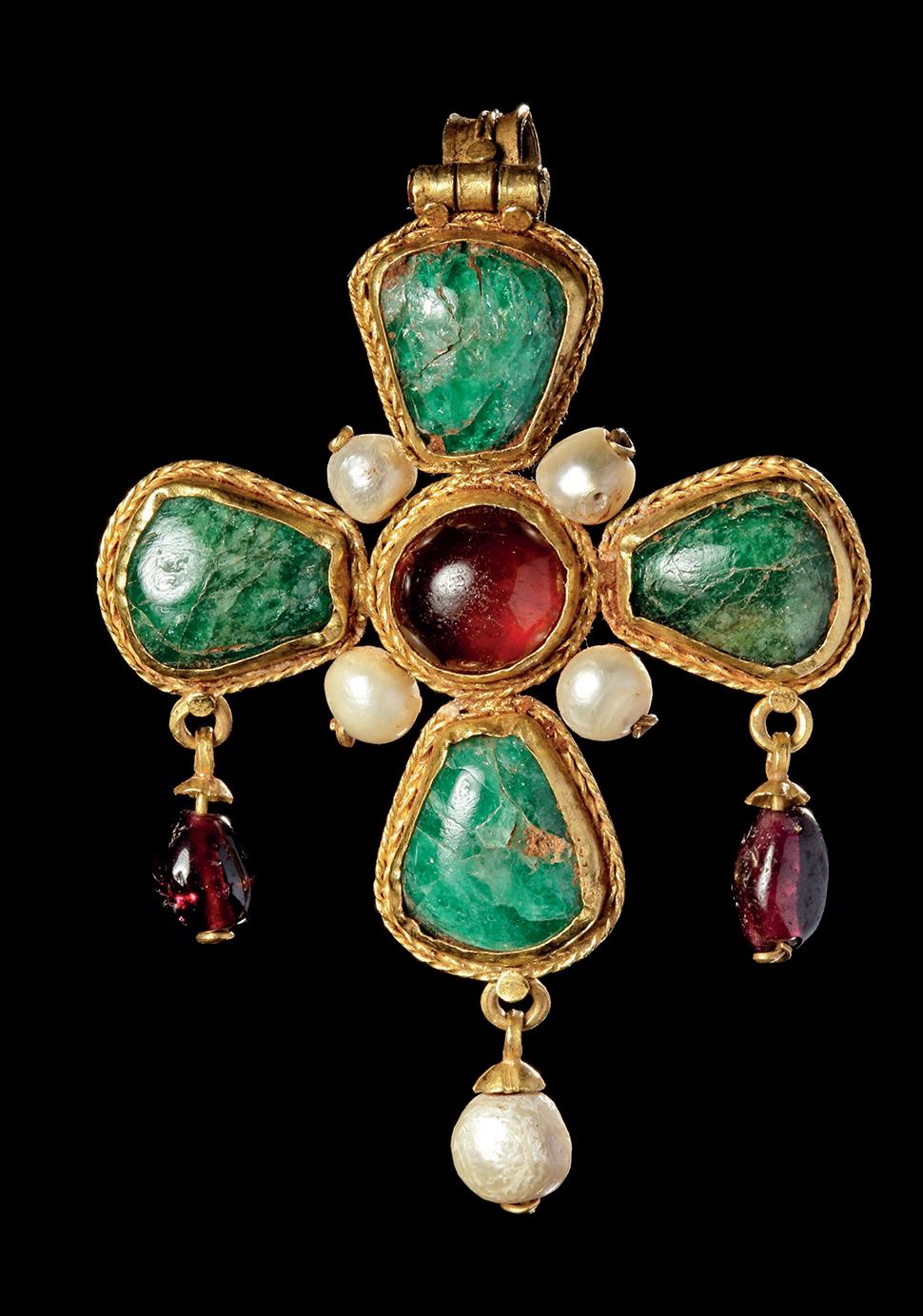
Lot 16

A BYZANTINE GOLD CROSS PENDANT SET WITH EMERALDS, GARNET, AND PEARLS –5TH TO 6TH CENTURY A.D.
This magnificent Byzantine pendant, dating to the 5th–6th century A.D., is a masterwork of sacred elegance and imperial devotion. Formed in the shape of a cross, it is adorned with four striking emeralds arranged in the arms, their raw natural texture adding depth and vibrancy. At the center glows a polished garnet cabochon, symbolizing divine light and sacrifice. Encircling the core are lustrous pearls, emblematic of purity and spiritual grace. Suspended garnet and pearl beads enhance the pendant’s rich, ceremonial aesthetic. A powerful testament to Byzantine artistry, this cross would have served as both an object of personal devotion and a symbol of status and protection.
6.2 by 4.5 cm.
Weight: 18.28 gr.
Estimate € 2500 - € 3500


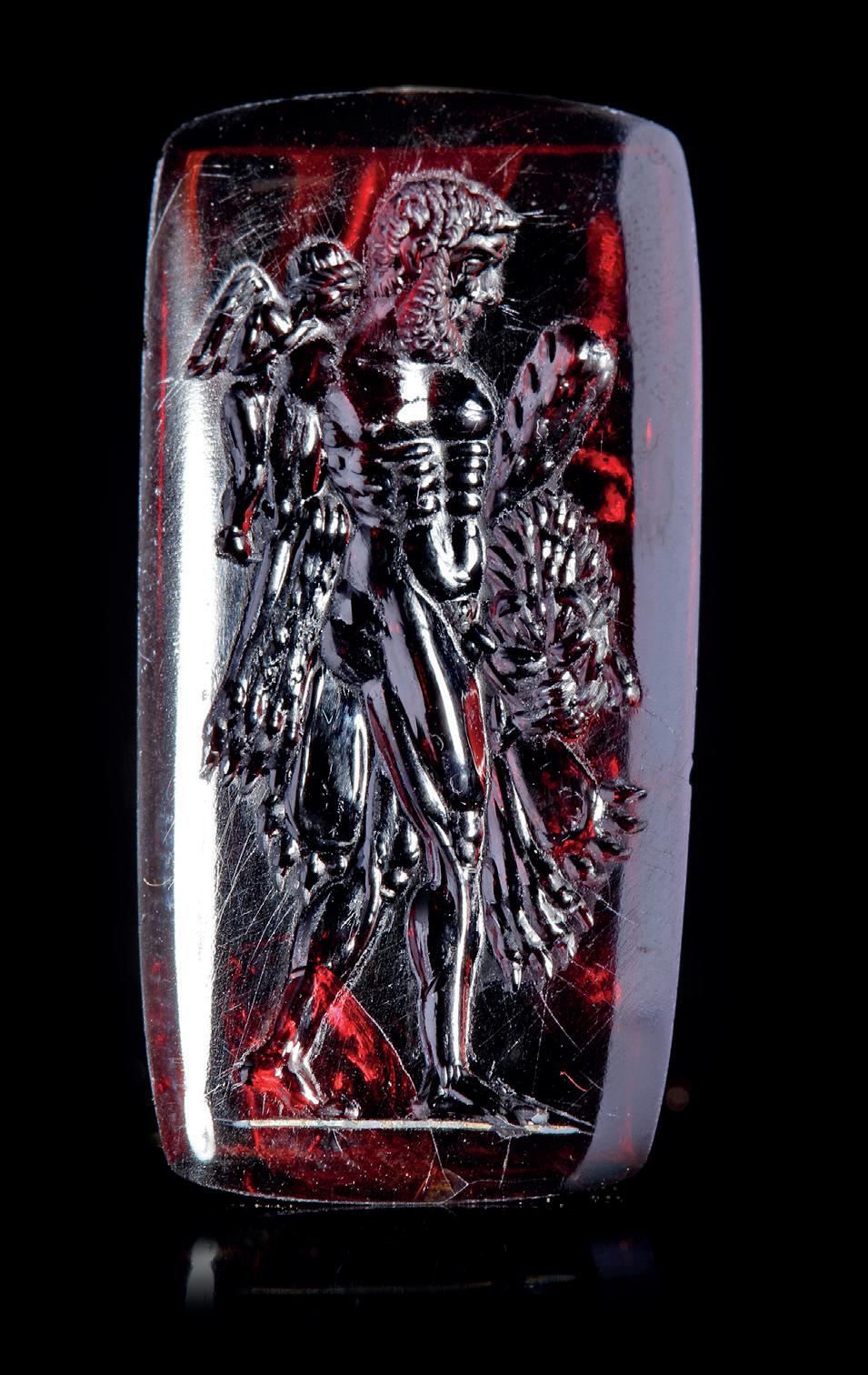
A large garnet intaglio showing Heracles walking to the right holding his club and lion skin on his left arm. A flying putto rests on his right shoulder. While the association of Hercules with putti often appears in later art here we have an example from antiquity. The oblong shape of this intaglio is encountered in in Hellenistic times till the early first century AD.
Garnet 2nd c.BC.
28 by 15 mm.
Estimate € 6000 - € 8000
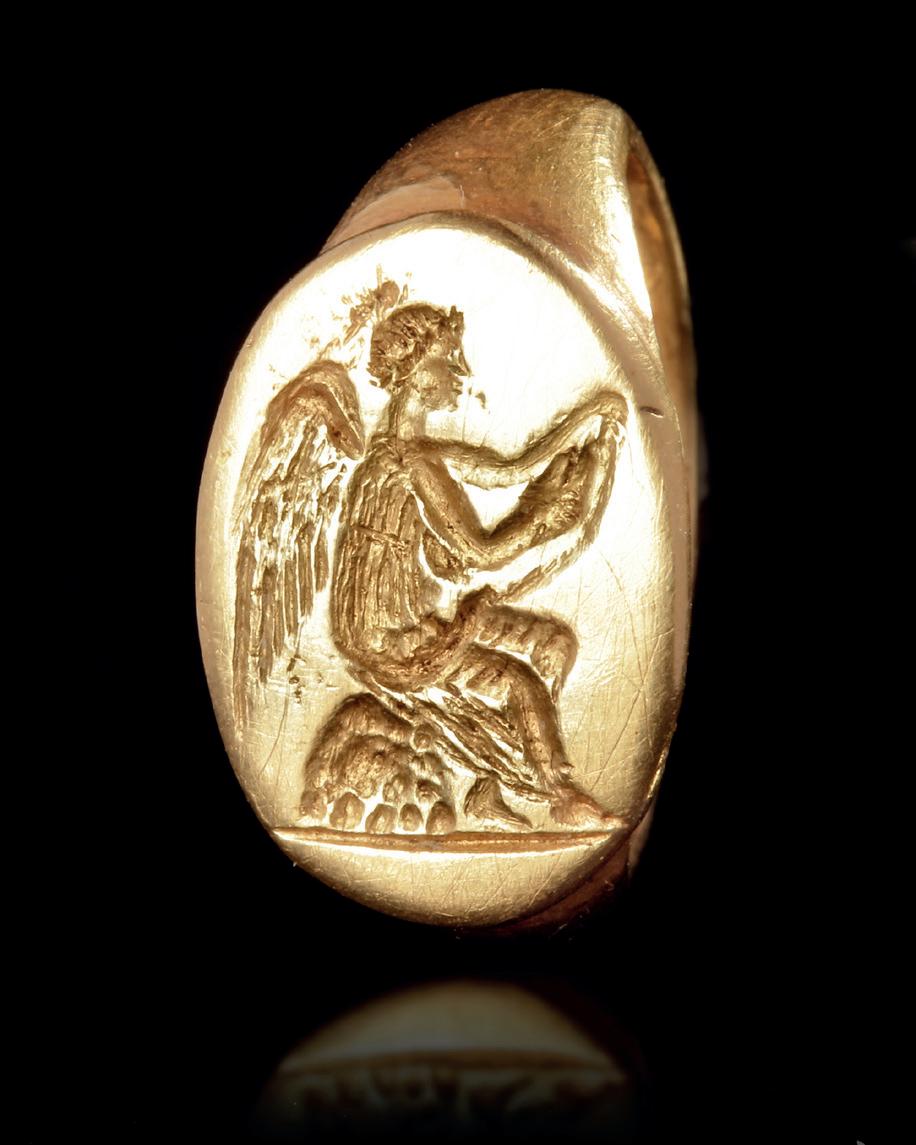
Lot 18
AN EARLY HELLENISTIC GOLD RING, 4TH CENTURY BC
An early Hellenistic gold ring engraved with a seated figure of Nike inscribing a shield. She sits on a rock to the right and the dedication on the shield would normally refer to a victory of arms.
Gold. Hellenistic 4th.c.B.C.
20 by 20 mm.
Weight: 7 gr.
EU size: 14
PROVENANCE
From a European collection since the 1980's.
Estimate € 3000 - € 4000 Lot 19
A GRECO-PERSIAN CHALCEDONY SCARABOID OF A WINGED LION – 5TH TO 4TH CENTURY B.C.
This extraordinary Greco-Persian scaraboid, carved from luminous chalcedony, showcases a majestic winged lion captured in poised motion, it exemplifies masterful craftsmanship with intricate detailing on the creature’s feathered wings, curling mane, and roaring expression. A powerful symbol of protection and guardianship, the winged lion stands as a mythical sentinel against chaos and malevolent forces.
2.5 by 1.8 cm.
Weight: 8.99 gr.
Estimate € 3500 - € 4500


Lot 20
A GRECO-PERSIAN CHALCEDONY SCARABOID WITH STANDING VULTURE AND CENSER – 5TH TO 4TH CENTURY B.C.
This rare and symbolically rich Greco-Persian scaraboid, carved from luminous chalcedony, features an exquisitely detailed standing vulture beside a ceremonial censer burner.The composition is strikingly refined—every feather, talon, and ornamental element rendered with precision. The vulture, a potent symbol of divine watchfulness, transition, and spiritual purification, stands alert with wide, stylized “widget” eyes that add an aura of mysticism. The adjacent censer evokes sacred rituals, enhancing the amulet’s connotations of protection and connection to the divine. This piece blends Persian symbolism with Greek technical elegance, making it a miniature masterpiece of sacred iconography.
2.2 by 1.2 cm.
Weight: 4.93 gr.
Estimate € 1500 - € 2500

A RAE ITALIC AGATE INTAGLIO DATE: 3RD TO 2ND CENTURY B.C.
A finely engraved oval agate intaglio featuring a classical motif typical of the Italic traditions during the Hellenistic period. The central figure, rendered in high relief, depicts a draped male figure, likely representing a deity or hero, in a dynamic stance. He holds a staff in one hand and is framed by an object resembling a circular shield or halo, possibly signifying divine or heroic status.
The intaglio’s craftsmanship demonstrates precise carving, with detailed attention to the folds of the garment and the figure’s posture. The border is delicately beaded, adding an elegant framing element. The polished agate’s warm reddish hue enhances the aesthetic, creating a luminous effect under light, indicative of the period’s sophisticated lapidary techniques.
Dimensions: 1.9 by 1.2 cm
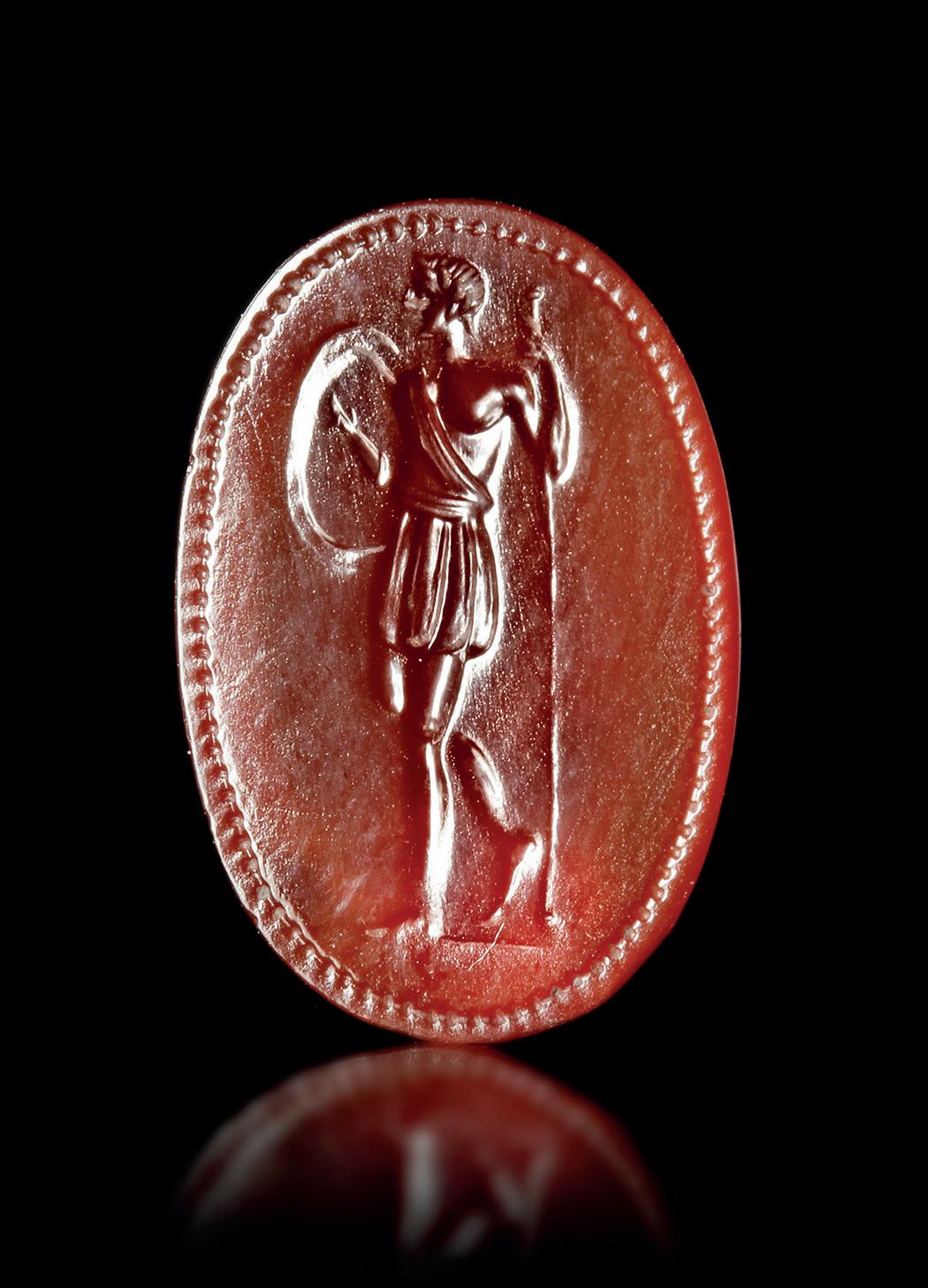
OF A FLYING
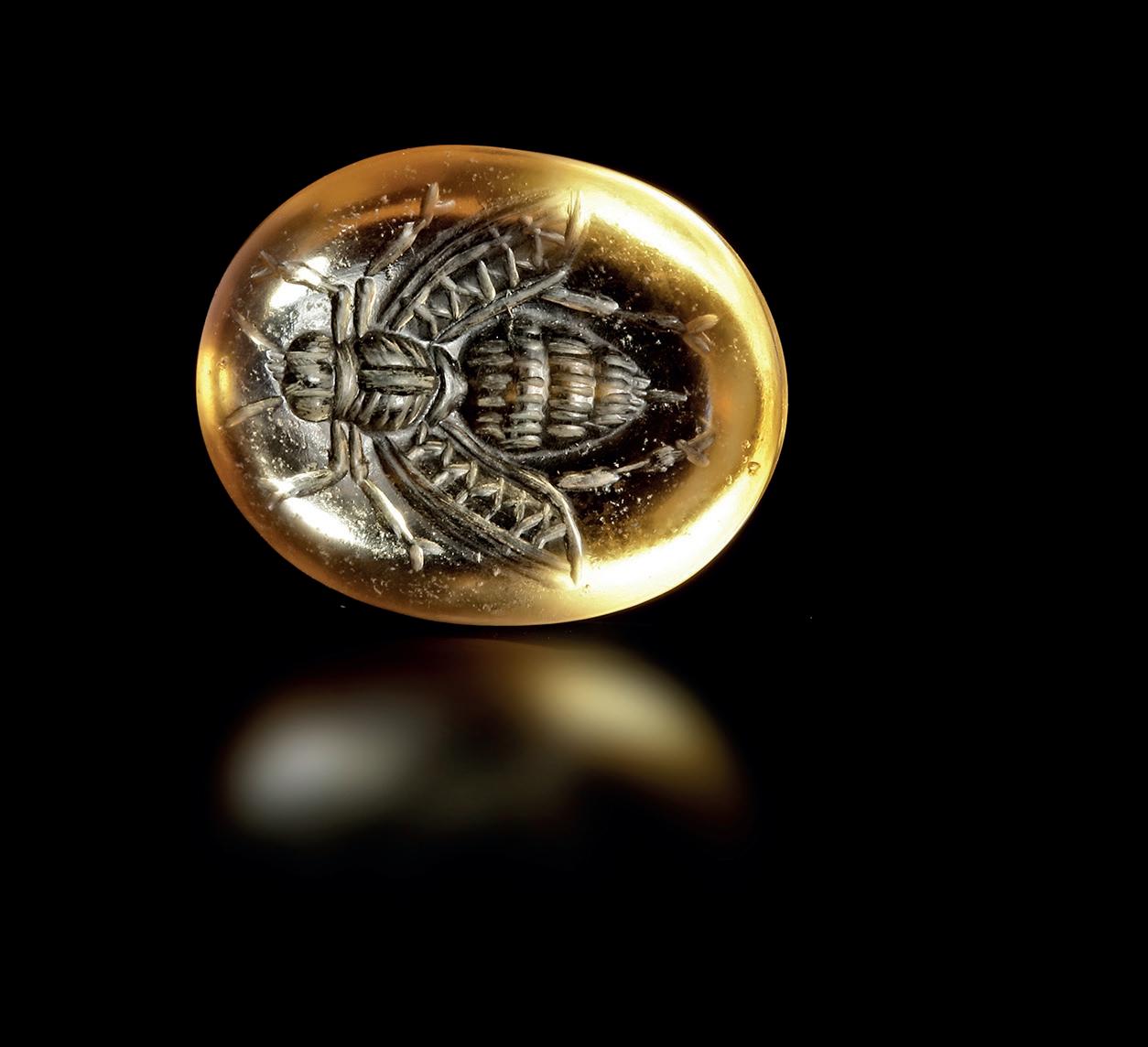
Brilliantly carved in luminous golden citrine, this Early Roman intaglio features the intricate image of a bee in flight—its wings outstretched and body segmented with careful precision. The bee, a powerful ancient symbol of industriousness, community, and immortality, was also linked to deities like Artemis and Demeter. The gem’s radiant hue enhances the delicate craftsmanship, making the insect seem to shimmer with life. Likely worn as a seal or personal amulet, 1.8 cm.
Weight: 2.38 gr.
Estimate € 2000 - € 2500
This finely carved Hellenistic intaglio, made of lustrous amethyst, features a detailed depiction of a grasshopper, rendered with exquisite naturalism. The grasshopper, delicately incised into the surface, may symbolize fertility, nature, or poetic inspiration, 2.1 cm.
Weight: 3.10 gr.
Estimate € 2500 - € 3000
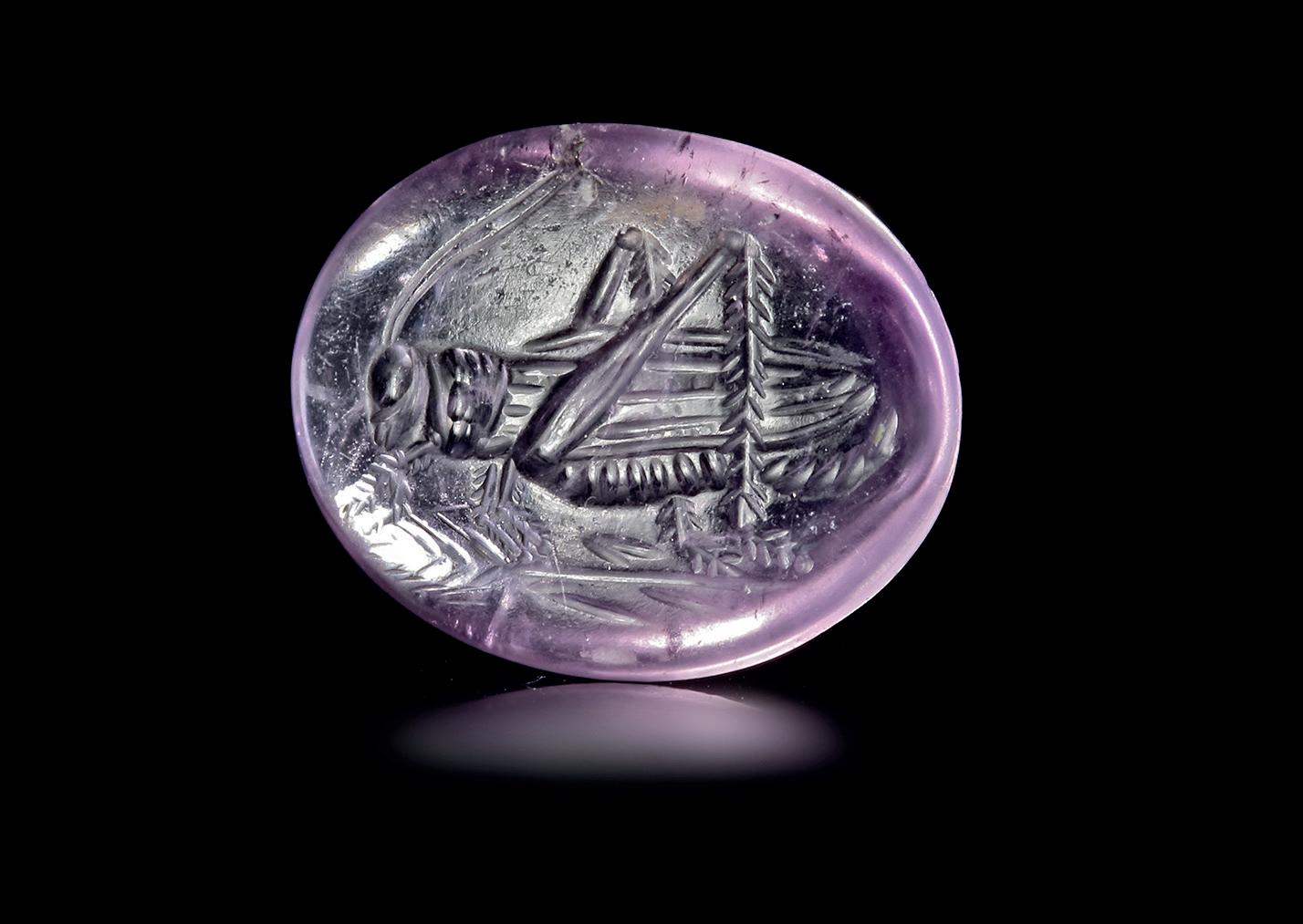
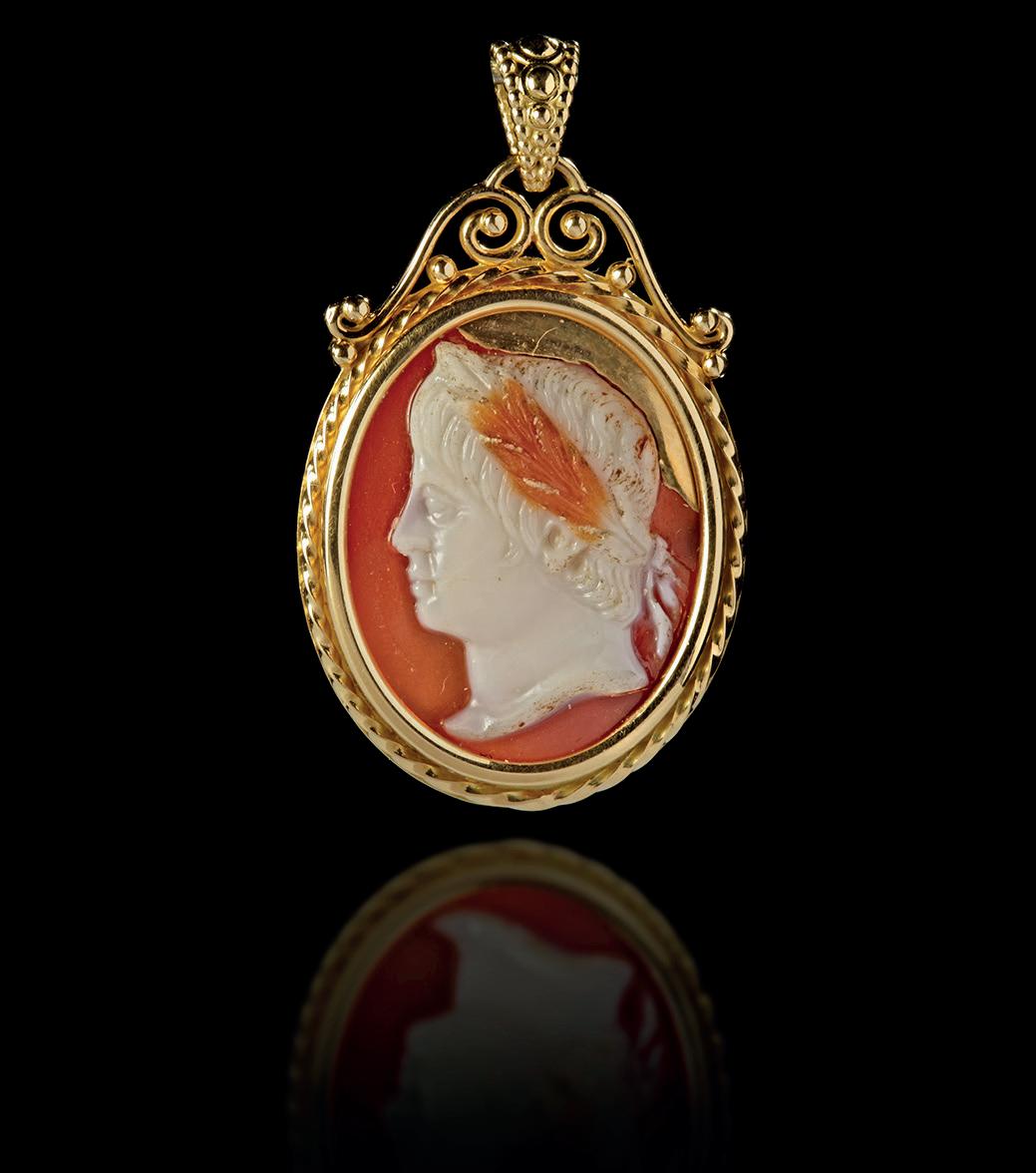
A highly important cameo portrait of the emperor Nero probably engraved at the time of his accession in 54 A.D. This cameo would have been produced in Rome upon the succession of Nero after the death of Claudius in 54 A.D. It should be remembered that such items were an important part of the imperial policy of distributing the emperor's image. Such cameos were produced in official workshops and would have been distributed to high ranking officials and their families. The cameo is missing a piece broken off behind the head of the emperor, it has been replaced by a gold sheet which is attached to a modern frame marked '750' or 18 carat gold.
Size 27 by 42 mm.
Weight: 10.5 gr.
PROVENANCE
Ex-European private collection acquired before 1970
Estimate € 2000 - € 3000

A ROMAN INTAGLIO WITH THE HEAD OF HERCULES POSSIBLY PORTRAYING ALEXANDER THE GREAT(?), 1ST CENTURY BC/AD
A Roman intaglio in red/brown carnelian probably from the time of Augustus. It shows Hercules as a young man, possibly with the features of Alexander the Great. 18 by 16 mm.
Weight: 1.3 gr.
Estimate € 1500 - € 2000
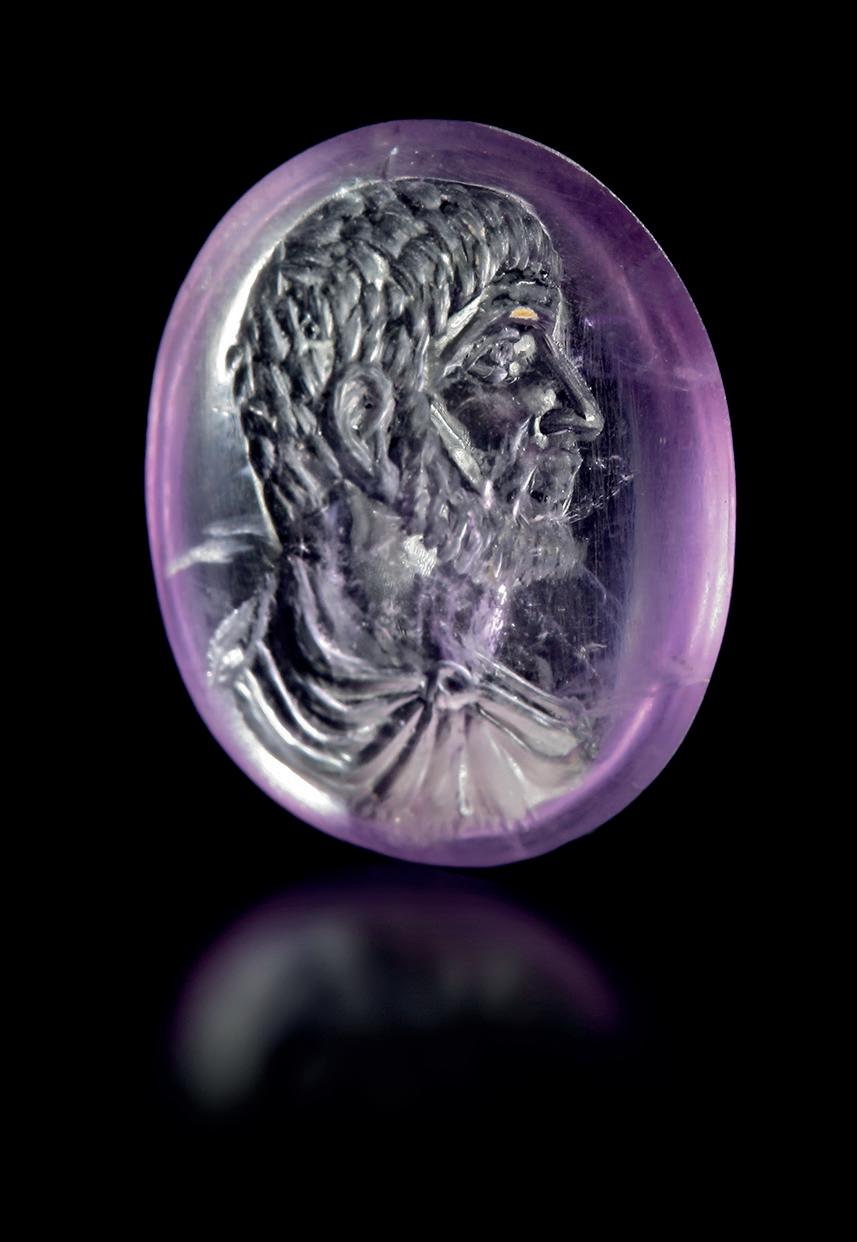
27
Lot 26
A ROMAN AMETHYST INTAGLIO PORTRAIT OF A NOBLEMAN – REPUBLICAN PERIOD, EARLY 1ST CENTURY A.D.
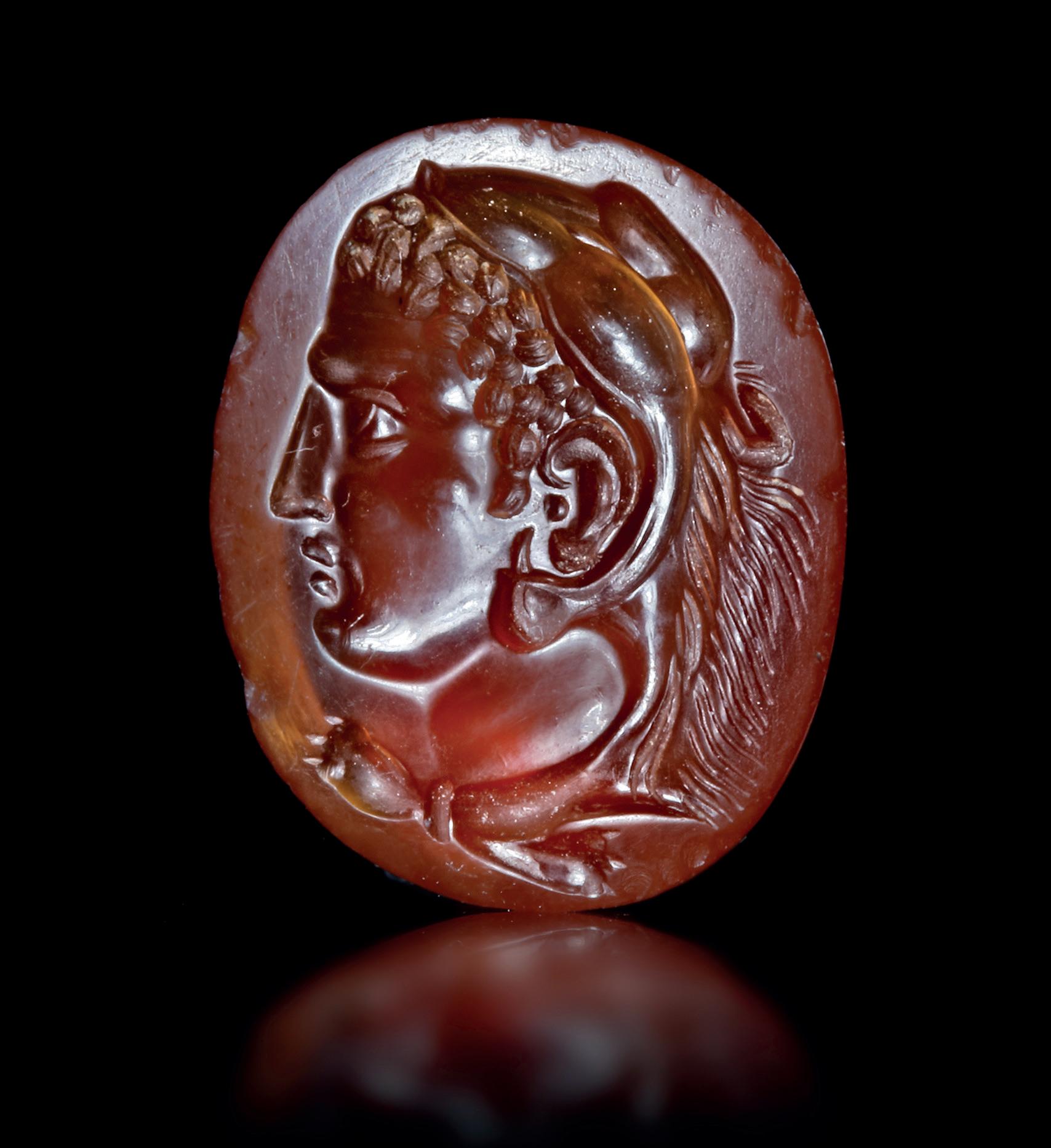
This captivating Roman intaglio, carved in rich violet amethyst, features the finely detailed profile of a nobleman from the early 1st century A.D., during the late Republican period. The gemstone radiates a regal aura, its polished surface capturing light and emphasizing the sharp contours of the man’s bearded face, solemn expression, and classical drapery. The artistry reflects the Roman tradition of realistic portraiture, celebrating status, lineage, and individual identity. As a seal or ring centerpiece, 1.9 cm.
Weight: 1.76 gr.
Estimate € 2000 - € 3000
ROMAN EMERALD INTAGLIO OF SILENUS 1ST CENTURY A.D.
This exquisite Roman intaglio, masterfully carved in vibrant emerald, portrays the expressive visage of Silenus—the wise, bearded companion of Dionysus. Revered in Greco-Roman mythology as a symbol of musical inspiration, ecstatic prophecy, and joyful revelry, Silenus embodied the balance between wild indulgence and profound wisdom. The gemstone’s radiant green hue enhances the divine and mystical aura of the figure, suggesting both vitality and spiritual insight. 1.8 cm.
Weight: 1.68 gr. Estimate
Lot 28
A CAMEO OF ALEXANDER THE GREAT WITH THE HORN OF AMMON, 1ST CENTURY AD Or LATER
A cameo with a representation of Alexander the Great deified with the horn of Ammon.
Diameter: 21 mm.
Weight: 2.7 gr.
PROVENANCE
Property of a London gentleman, acquired London art market, 2000s.
Estimate € 3000 - € 5000
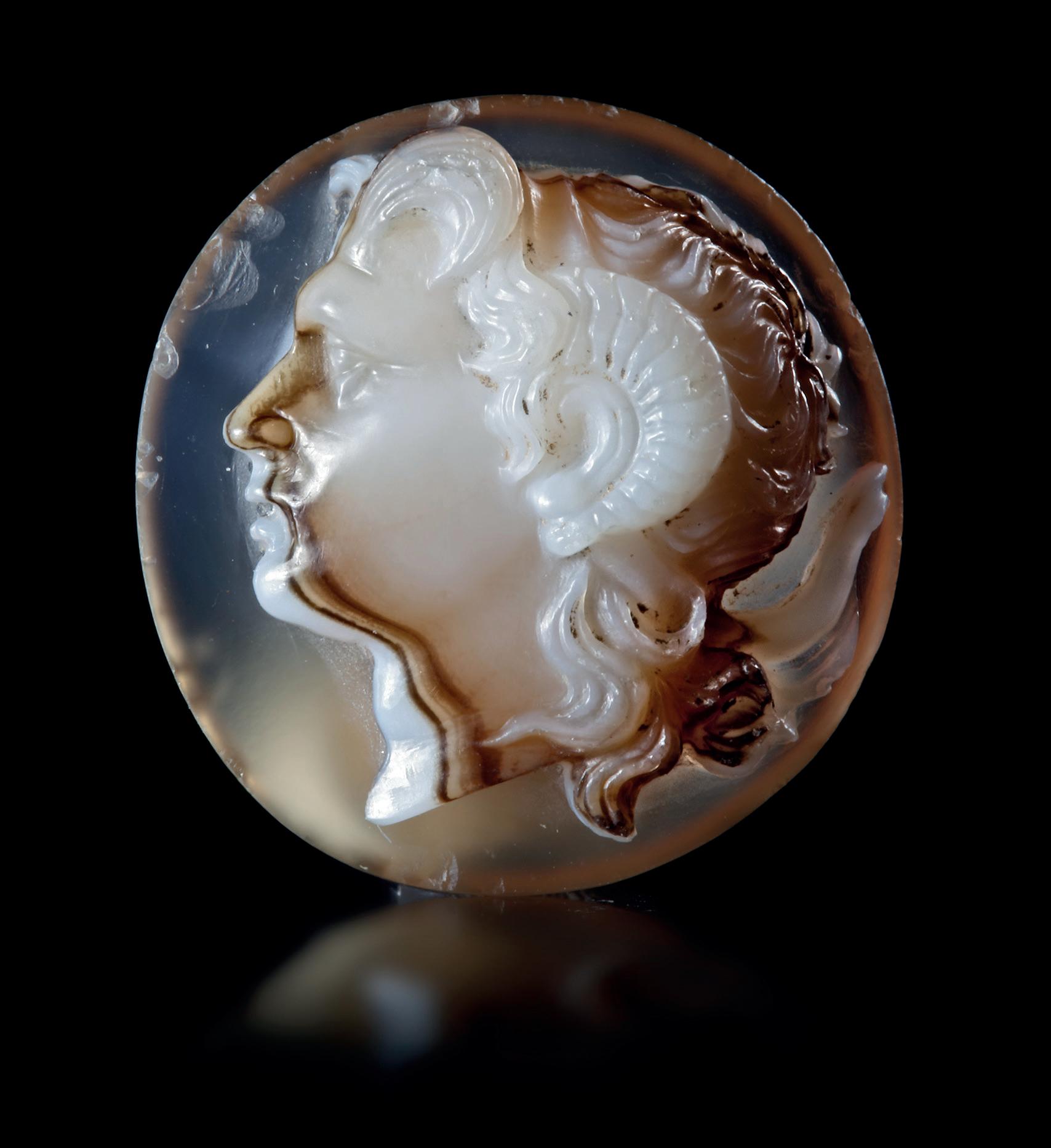
Lot 29
A LARGE ROMAN GOLD RING WITH A BLACK JASPER INTAGLIO OF MINERVA/ATHENA, 1ST CENTURY AD

A large Roman hollow gold ring with a black jasper intaglio of Minerva/Athena sitting on a cuirass holding a statuette of Victory and a shield balanced behind her. Minerva was one of the Capitoline Triad so she was very fundamental to the idea of 'Romanitas'. It is hardly surprising that she appears so often as the subject of intaglios and cameos of the Roman period. Given her accompanying symbols it is evident that an important victory is commemorated by this intaglio.
30 by 23 mm.
Weight: 9.1 gr.
EU size 11
PROVENANCE
Ex-European private collection acquired before 1970
Estimate € 1500 - € 2000


Lot 30
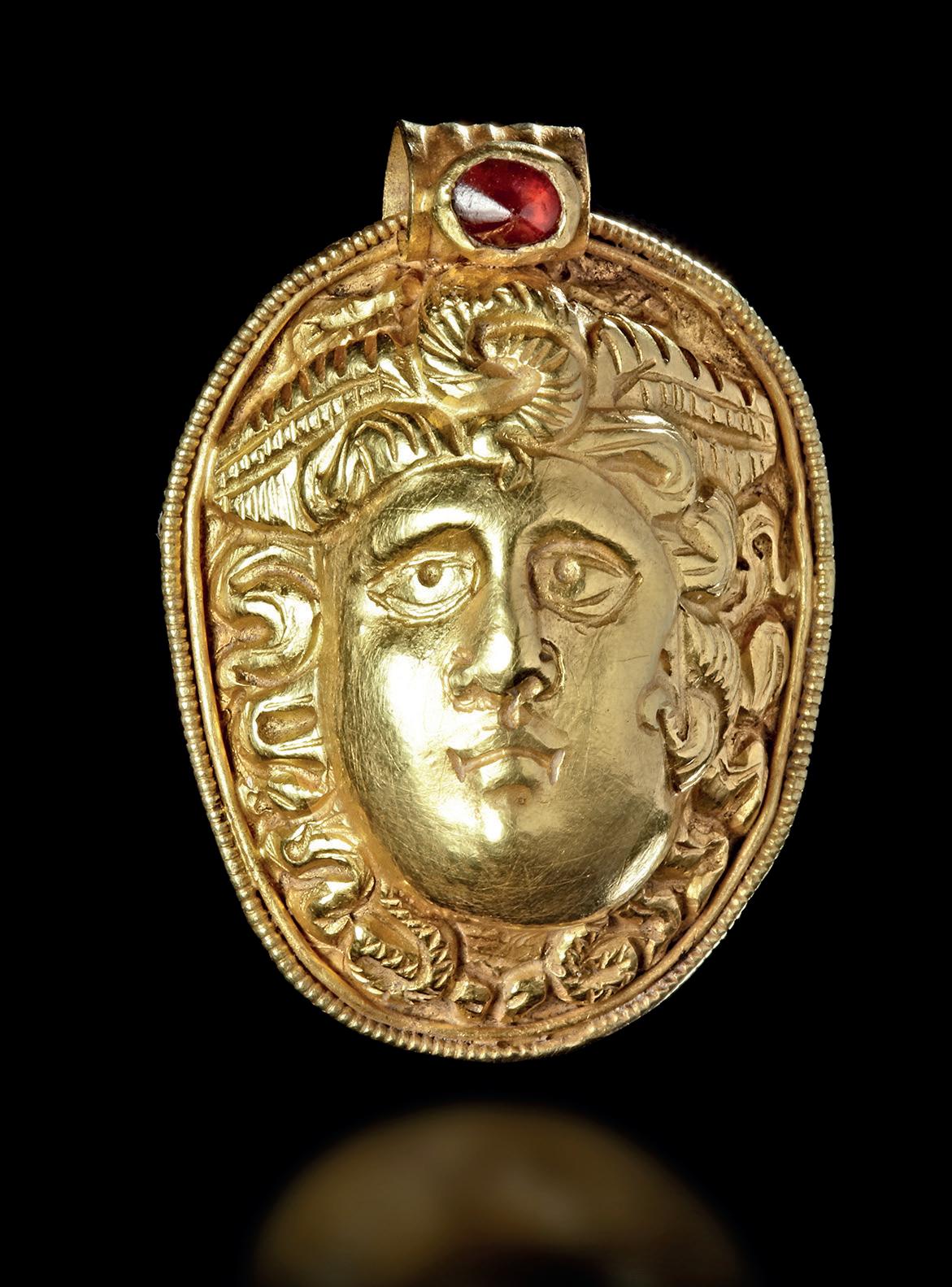
A GOLD PENDANT IN THE SHAPE OF THE HEAD OF MEDUSA, 2ND-3RD CENTURY AD
A gold pendant made in the form of a head of medusa, facing slightly to the right. The pendant is fashioned from a thick sheet of gold which has been beaten in repousse fashion, the outside is re-enforced with a thick beaded wire. The suspension loop has been decorated with a small garnet inlay. Gold and garnet. Roman 2/3rd.c.A.D.
42 by 30 mm.
Weight: 13 g.
Estimate € 3000 - € 4000
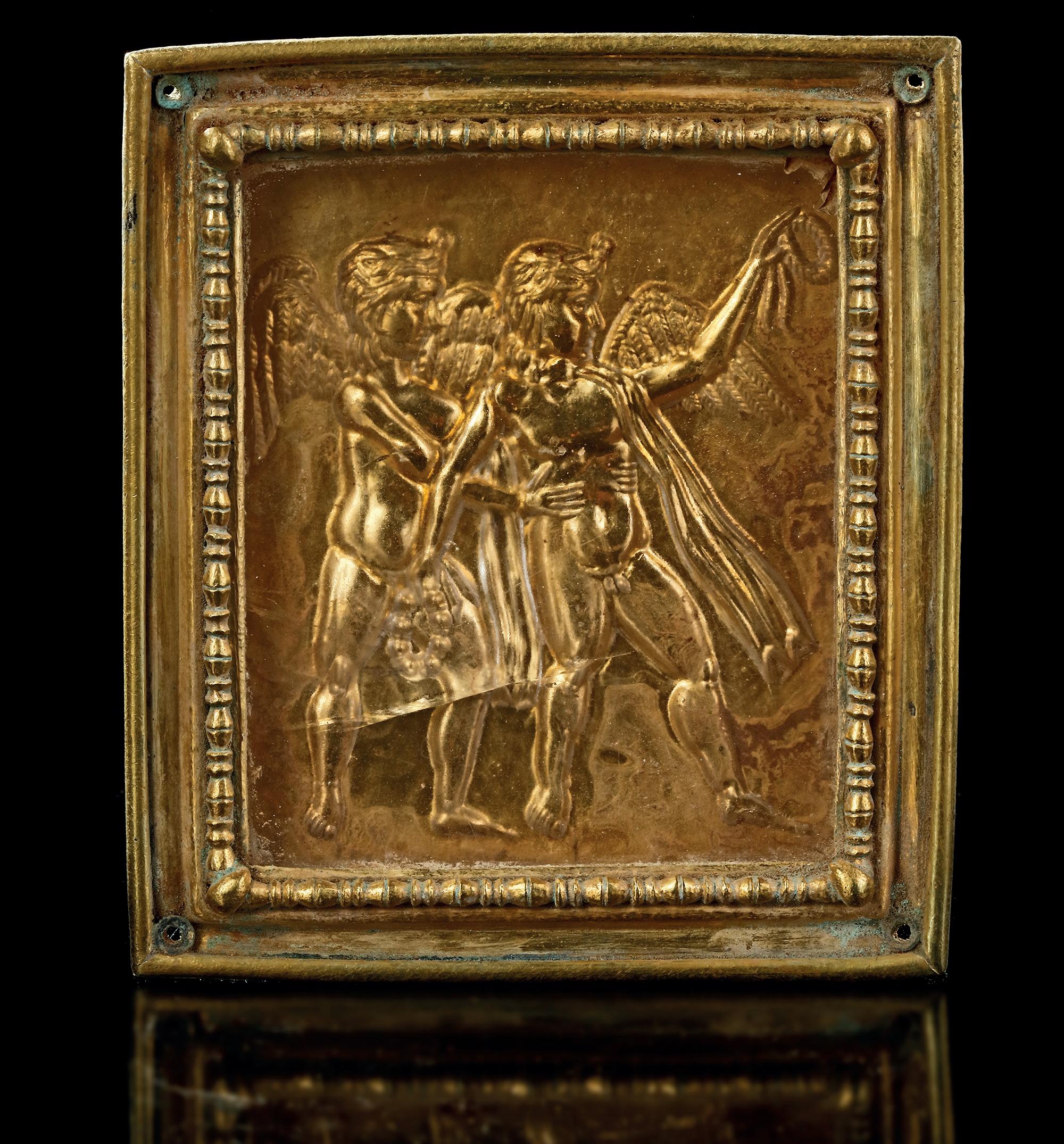
Lot 31
A LARGE ROCK CRYSTAL PLAQUE, ENGRAVED AND MOUNTED IN A SILVER GILDED FRAME, LATE 2ND - EARLY 3RD CENTURY AD
This exquisite artifact is a large, finely engraved rock crystal plaque, masterfully mounted in a silver gilded frame, dated to the late 2nd to early 3rd century AD, during the height of the Roman Imperial era. The front of the plaque showcases a high-relief depiction of two winged figures, delicately rendered with anatomical precision and dynamic movement. The central figure, adorned with a diadem and a flowing cape, holds a wreath aloft—a symbol of victory or divine honor—while the other figure accompany and support him, suggesting a ceremonial procession or allegorical scene.
The figures’ classical drapery, youthful physiques, and winged forms point to mythological or symbolic representations, possibly of Eros, Nike, or personified virtues. Their elegant poses and the carefully incised details of feathers and hair reflect exceptional craftsmanship.
Framed in an ornately gold border, the plaque is backed with silver, now darkened with patina and age. The reverse shows a simple but aged structure, secured with small rivets in each corner, indicating that this plaque may have once been inset into a larger ceremonial or decorative object—perhaps part ofa luxurious shrine, casket, or furniture piece.
10.8 by 9.5 by 1.4 cm.
297 grams.
Private European family collection since 2000s
In excellent preservation with a small crack in the crystal in the lower
Estimate € 40.000 - € 60.000

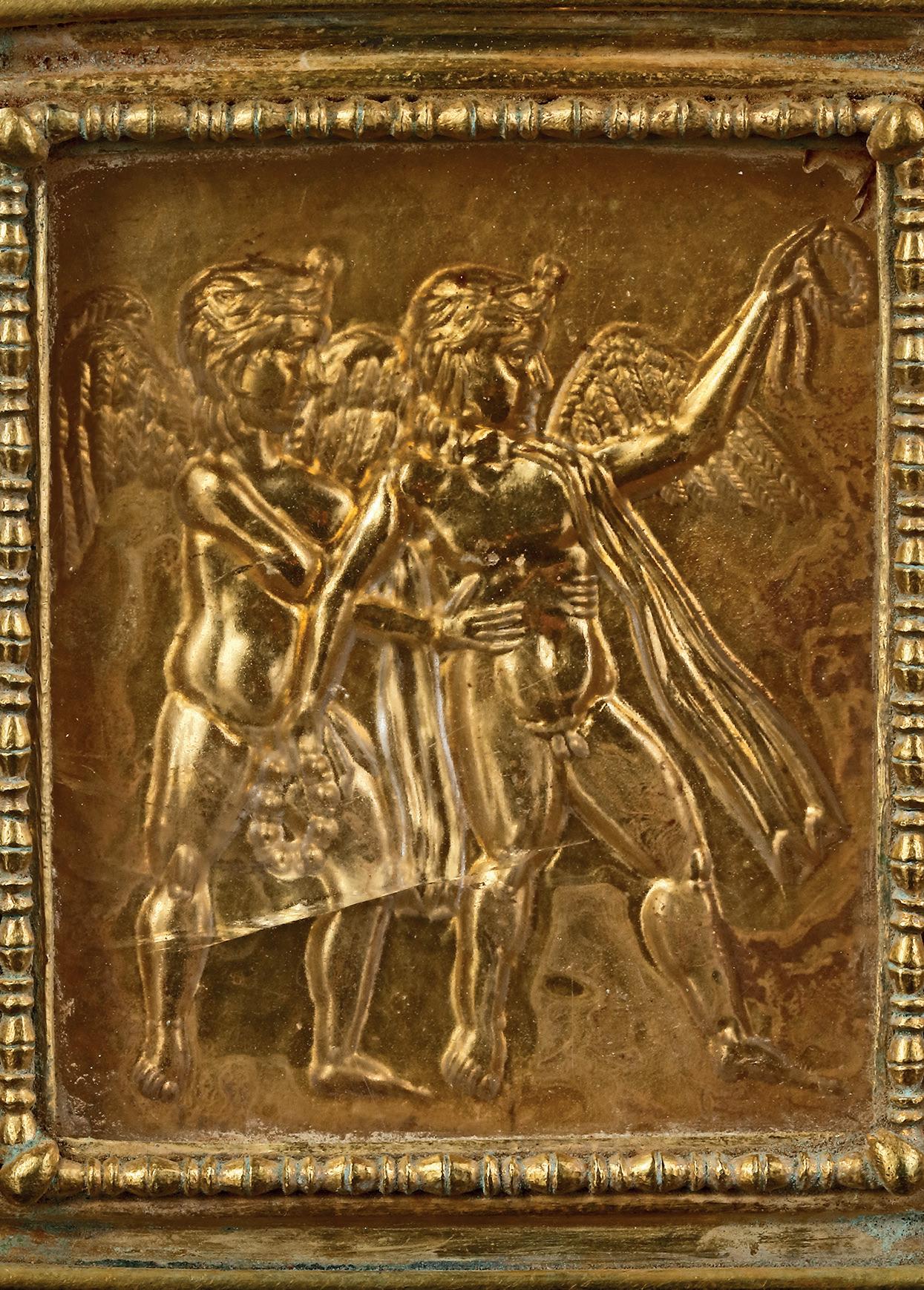
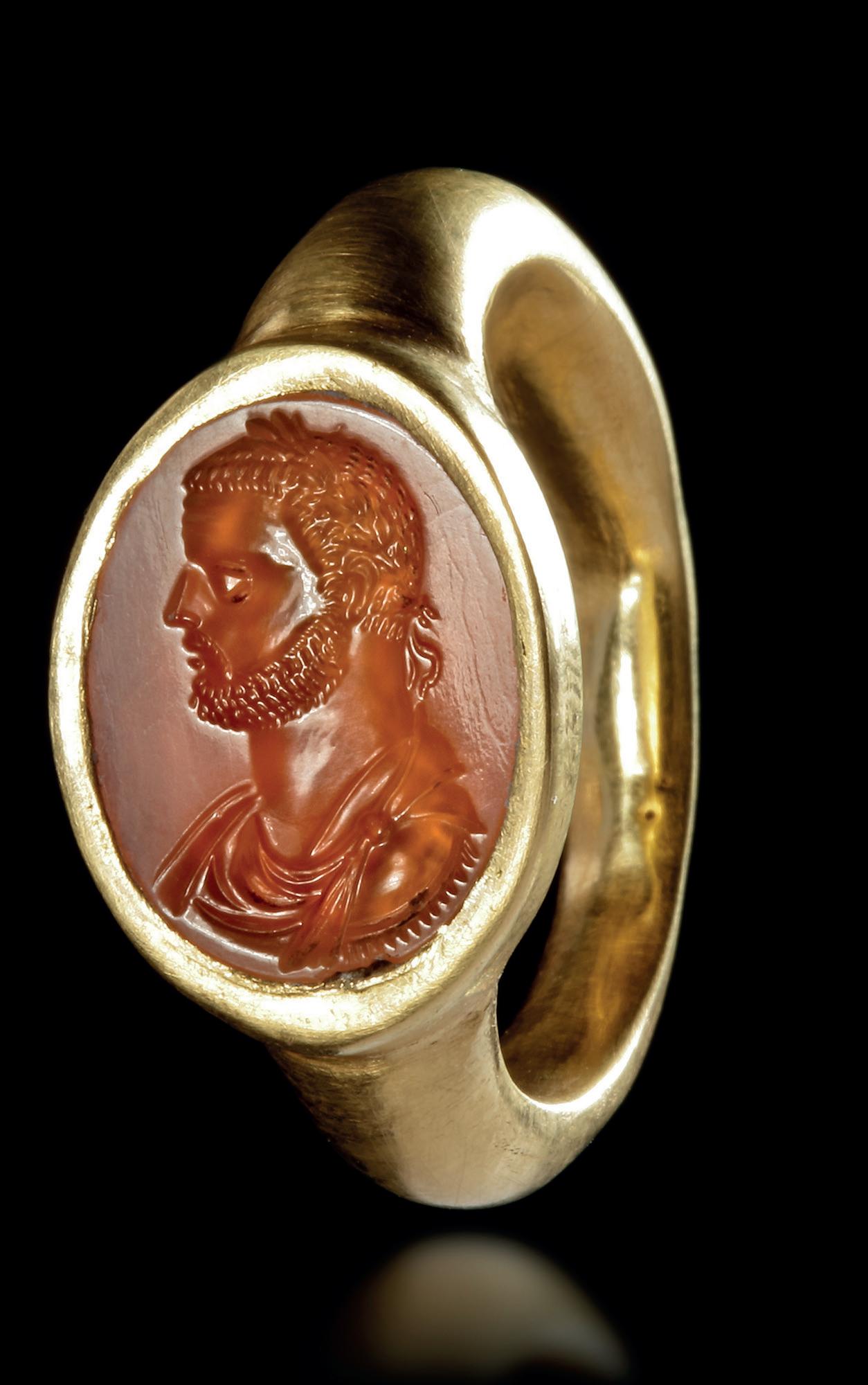
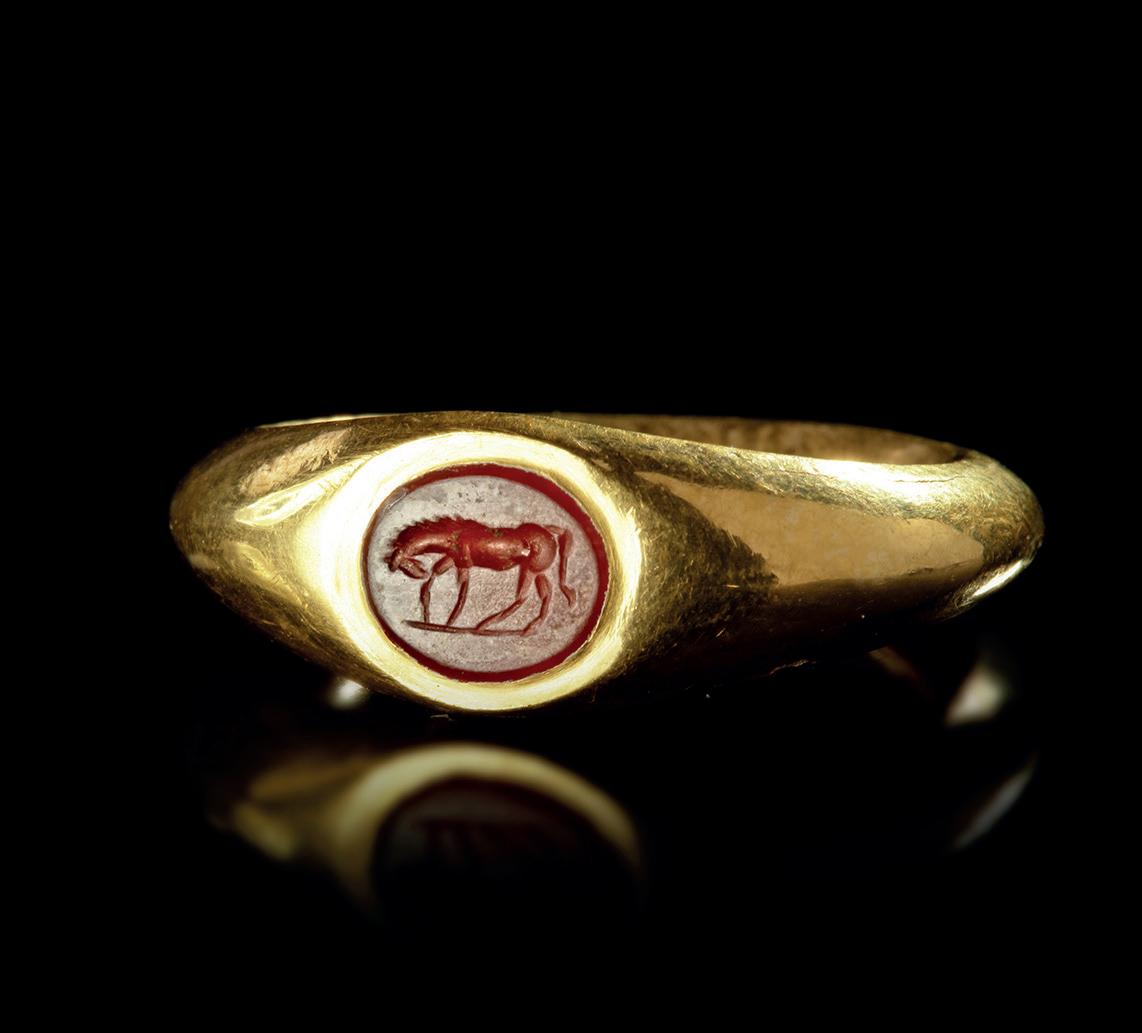
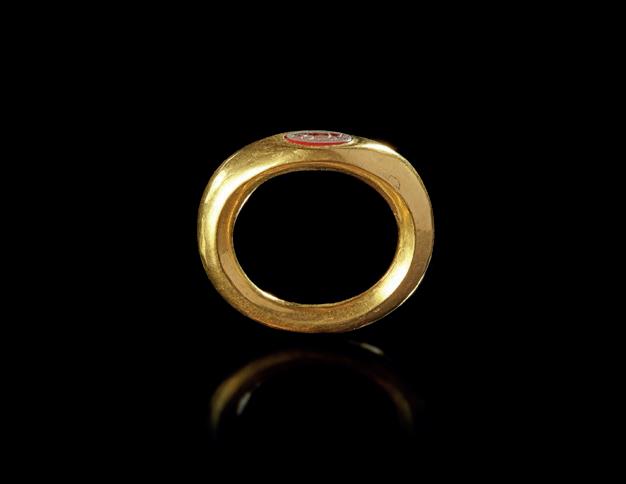
A ROMAN GOLD RING WITH A CARNELIAN INTAGLIO SHOWING THE HEAD OF AN EMPEROR. 4th.c.A.D.OR LATER
A large Roman hollow gold ring with an orange carnelian intaglio showing a tetrarchic emperor ( Diocletian? ). 25 mm x 29 mm
PROVENANCE:
From a European collection formed in the 1980's.
Estimate € 4000 - € 6000
Lot 33
A ROMAN GOLD RING WITH AN INTAGLIO OF A HORSE. 1st.c.A.D.
A Roman gold ring, hollow, with a small carnelian intaglio of horse to the left, lowering its head. A very elegantly made ring of robust construction with a small but attractive intaglio. The stone has been treated in order to have a slightly whitish hue on its surface in order to contrast with the engraving. 21 mm x 20 mm
PROVENANCE:
From a European collection formed in the 1980's.
Estimate € 800 - € 1000

The engraved image features a finely detailed hedgehog, depicted in profile with naturalistic spines and distinctive snout. The gem reflects the Roman fascination with animals, symbolism, and exquisite craftsmanship in personal adornments and seals. Its smooth, domed back and crisp engraving speak to the high quality of gem carving in the early Imperial period. This piece likely served as a signet or amulet, embodying protection, cleverness, or resilience—traits often attributed to the hedgehog in ancient lore. 1.8 cm.
Weight: 1.17 gr.
Estimate € 1500 - € 2000
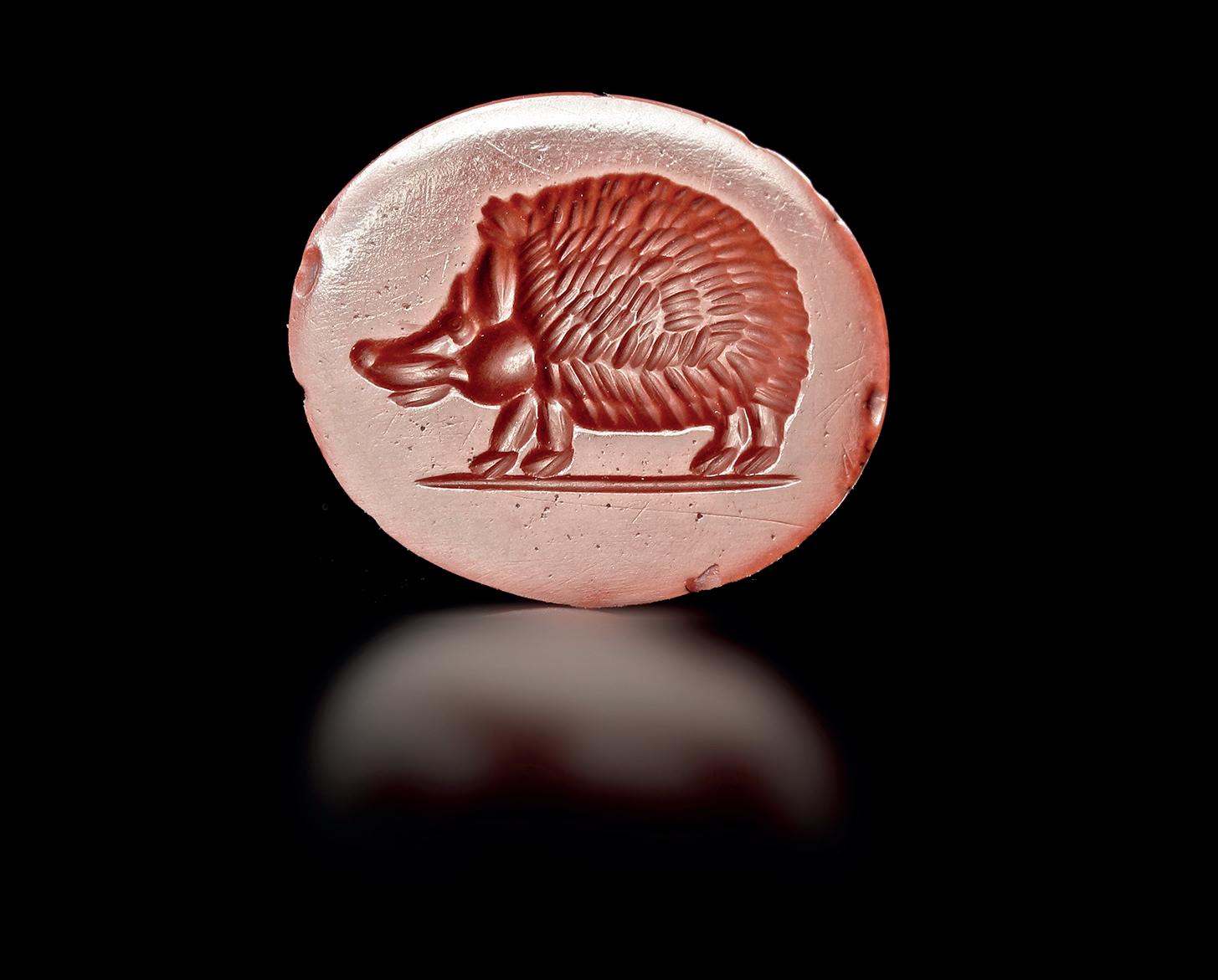
GARNET INTAGLIO OF A SCORPION ROMAN, 1ST–2ND CENTURY A.D.
This finely carved Roman intaglio, cut from deep red garnet, features a detailed and vivid depiction of a scorpion—a potent symbol of protection, danger, and astrological power. Every segment of the creature’s exoskeleton, pincers, and curling stinger is intricately rendered, showcasing the engraver’s mastery of miniature detail and gemstone hardness. Scorpions held mystical and symbolic significance in Roman culture, often associated with warding off evil or invoking divine protection. Likely used as a personal seal or amulet, 1.8 cm.
Weight: 2.63 gr.
Estimate € 1200 - € 1500
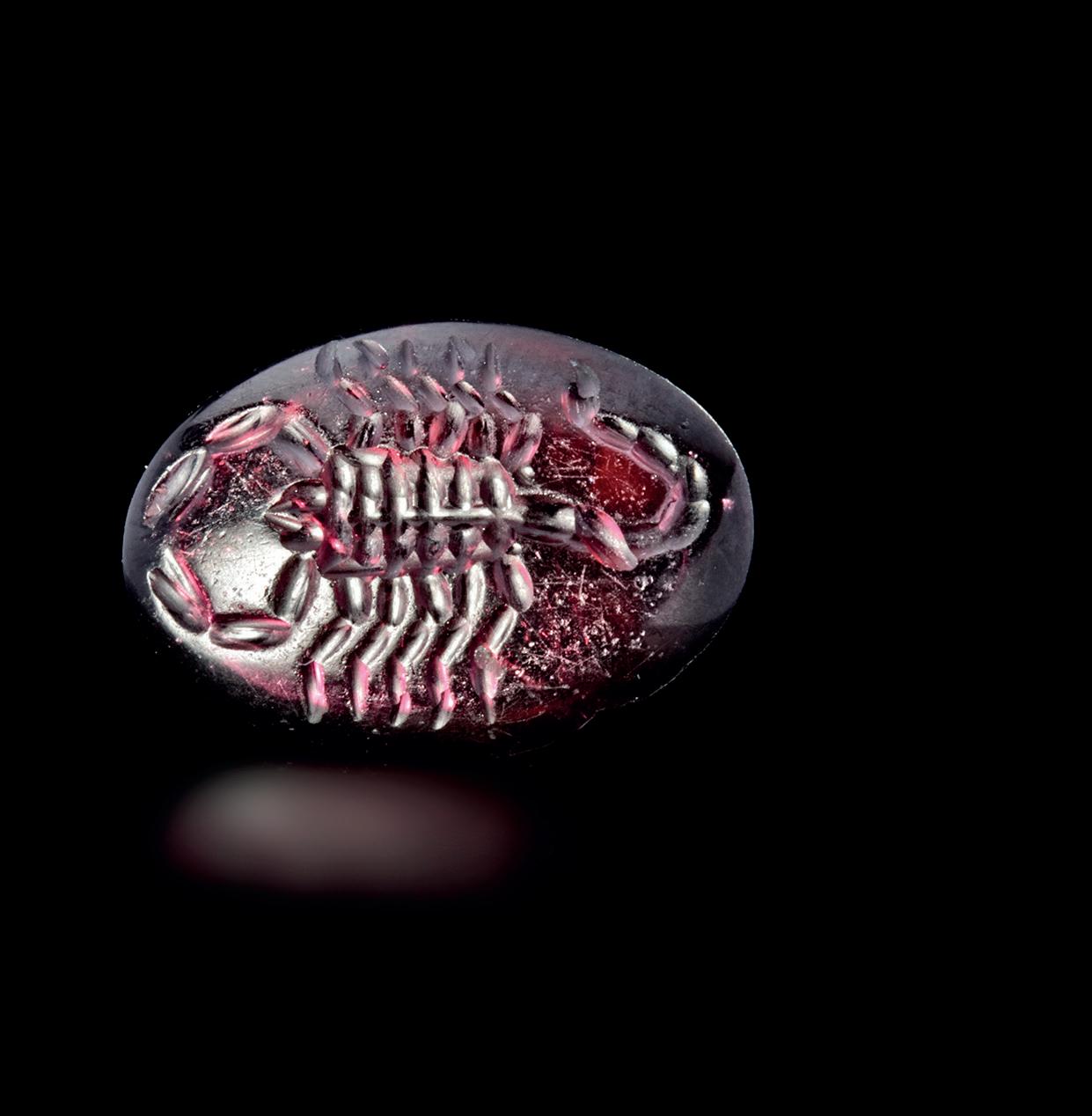
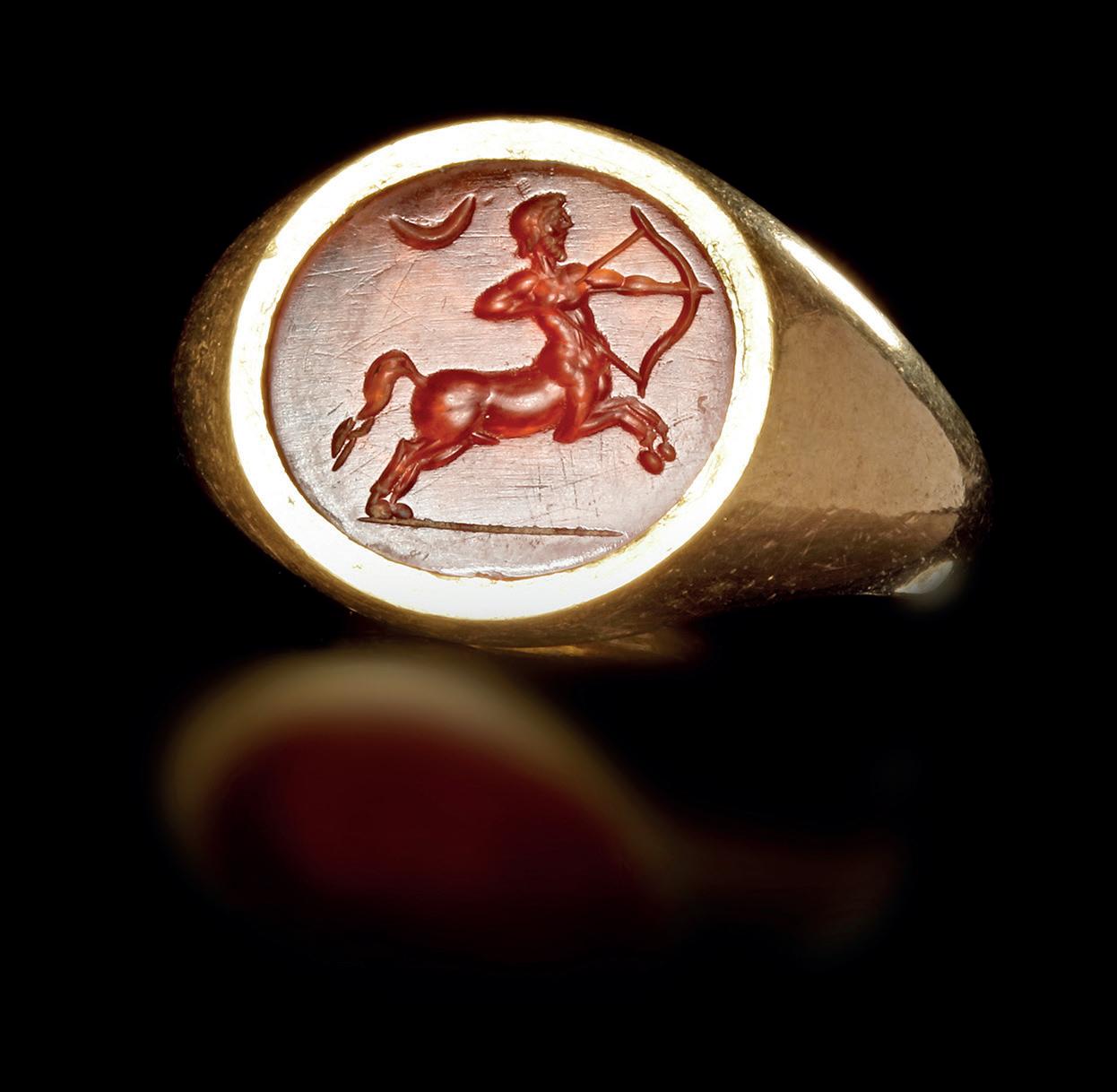
Lot 35
ROMAN GOLD RING WITH ORANGE INTAGLIO OF A HUNTING CENTAUR 1ST–2ND CENTURY A.D.
This powerful Roman gold ring features a vivid orange intaglio carved with the dynamic image of a centaur—half man, half horse—poised in mid-motion as he draws his bow beneath a crescent moon. Symbolizing the fusion of human intellect and untamed nature, the centaur appears as a noble hunter, embodying strength, speed, and precision. The bold musculature and lifelike posture reflect the artisan’s keen eye for anatomy and motion. Set in a solid gold mount, Size: 18
Weight: 10.51 gr.
Estimate € 3000 - € 4000

Lot 37
A ROMAN INTAGLIO OF AN ELEPHANT, 1ST CENTURY BC-AD
that it could be a punning type to represent the owner's name.
Green jasper. Roman 1st.c.B.C./A.D. 17 by 14 mm.
Weight: 0.9 gr.
PROVENANCE
From a European collection since the 1980's.
Estimate € 1200 - € 1500

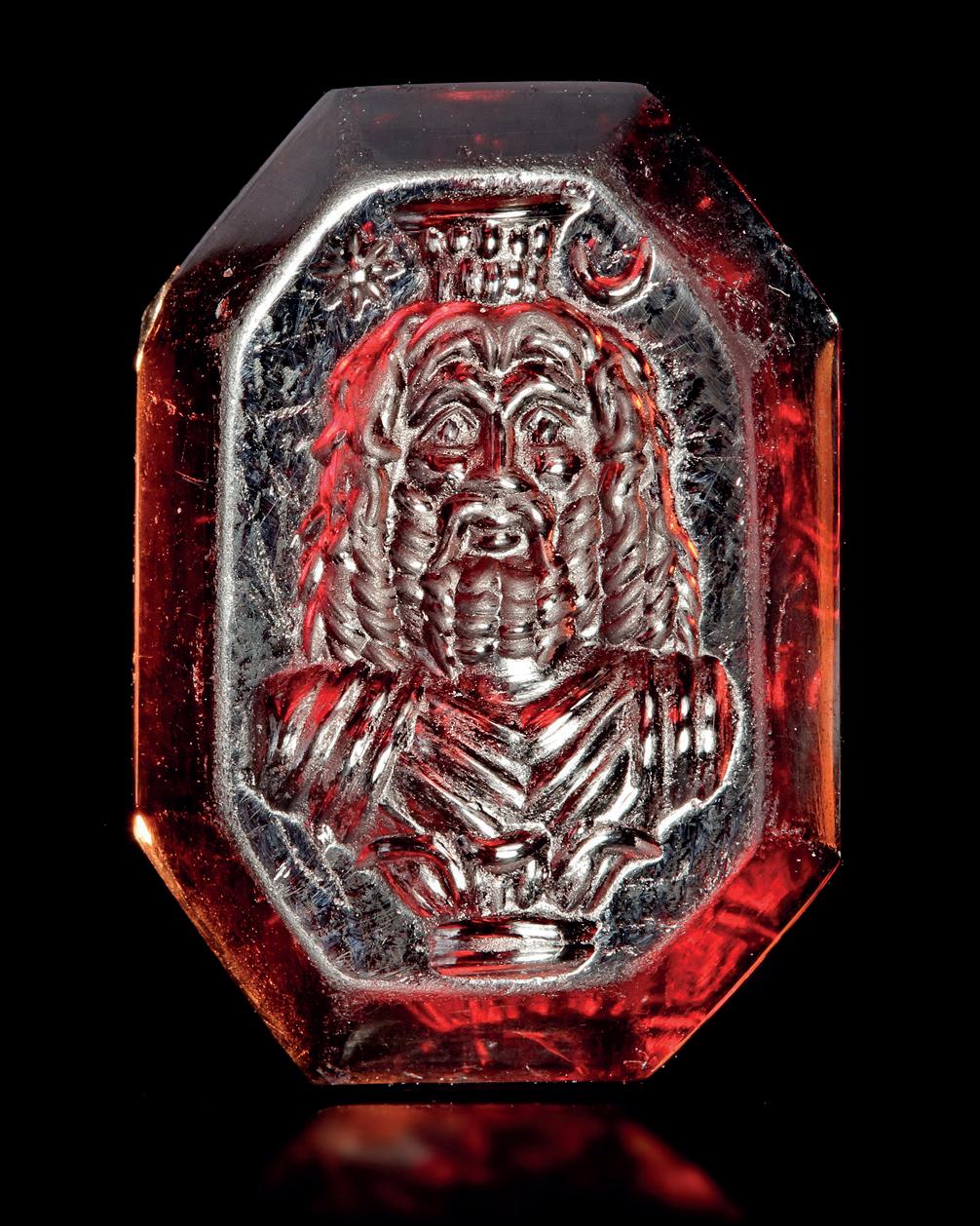
A ROMAN GARNET INTAGLIO OF SERAPIS, 1ST-2ND CENTURY AD
An octagonal intaglio in garnet showing a facing bust of Serapis flanked by the moon and a star. Garnet, Roman,1/2nd.c.A.D.
19 by 14 mm.
Weight: 2.1 gr.
PROVENANCE
From a European collection since the 1980's.
Estimate € 1000 - € 1200
A RADIANT ORANGE AGATE ROMAN INTAGLIO OF EMPEROR HADRIAN – 1ST TO 2ND CENTURY A.D.
This masterfully engraved Roman intaglio, carved in glowing orange agate, presents a powerful and noble portrait of Emperor Hadrian. Dated to the 1st–2nd century A.D., the gem captures the emperor in profile with remarkable realism: his curled hair, full beard, and imperial bearing convey both wisdom and authority. The fine details of his facial features and draped cloak reflect the high artistry of Roman gem engravers and their ability to immortalize imperial dignity in miniature. This intaglio not only shines with strength and beauty but also echoes the grandeur of Rome’s golden age, serving as both a personal adornment and a timeless symbol of leadership. 2. cm.
Weight: 1.8 gr.
Estimate € 2000 - € 3000

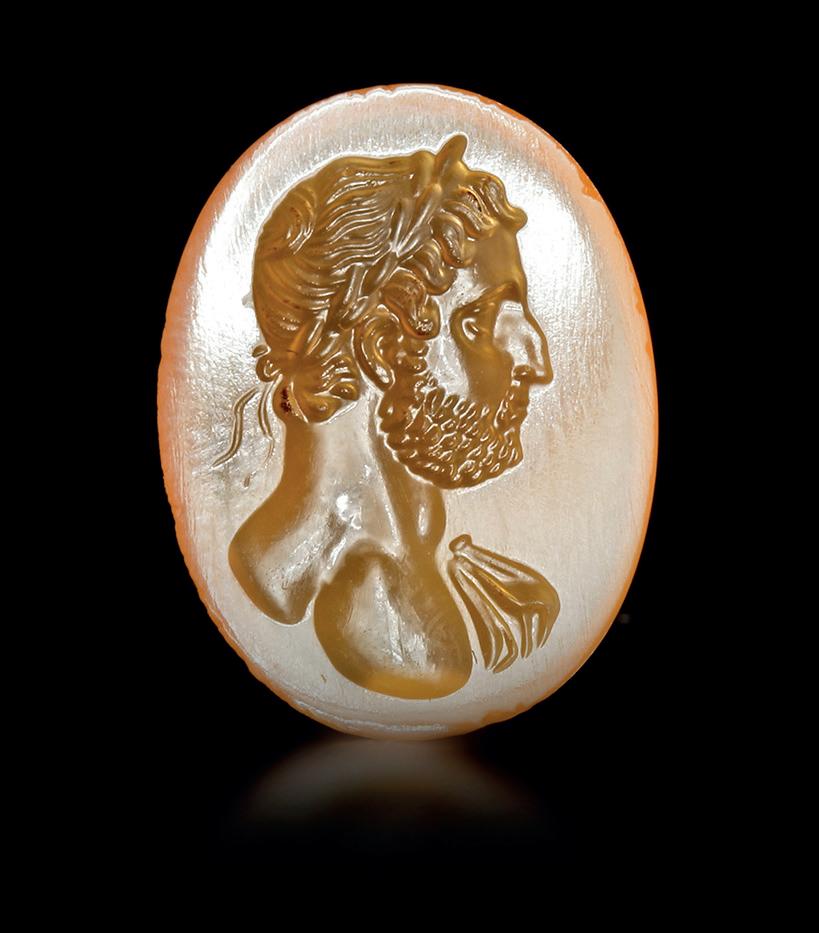
Lot 40
ROMAN CAMEO OF MEDUSA, 2/3RD CAD.
A round cameo showing the head of medusa in low relief.
2.2 cm.
Weight: 1.80 gr.
Estimate € 800 - € 1200
Lot 41
A ROMAN GOLD RING 2ND TO 3RD CENTURY A.D.
The gold ring formed of two filigree wire with oval filigree wire over the oval frame which containing a banded agate stone of a parrot and an ear of wheat.
Weight: 7,7 gr.
Estimate € 3000 - € 4000
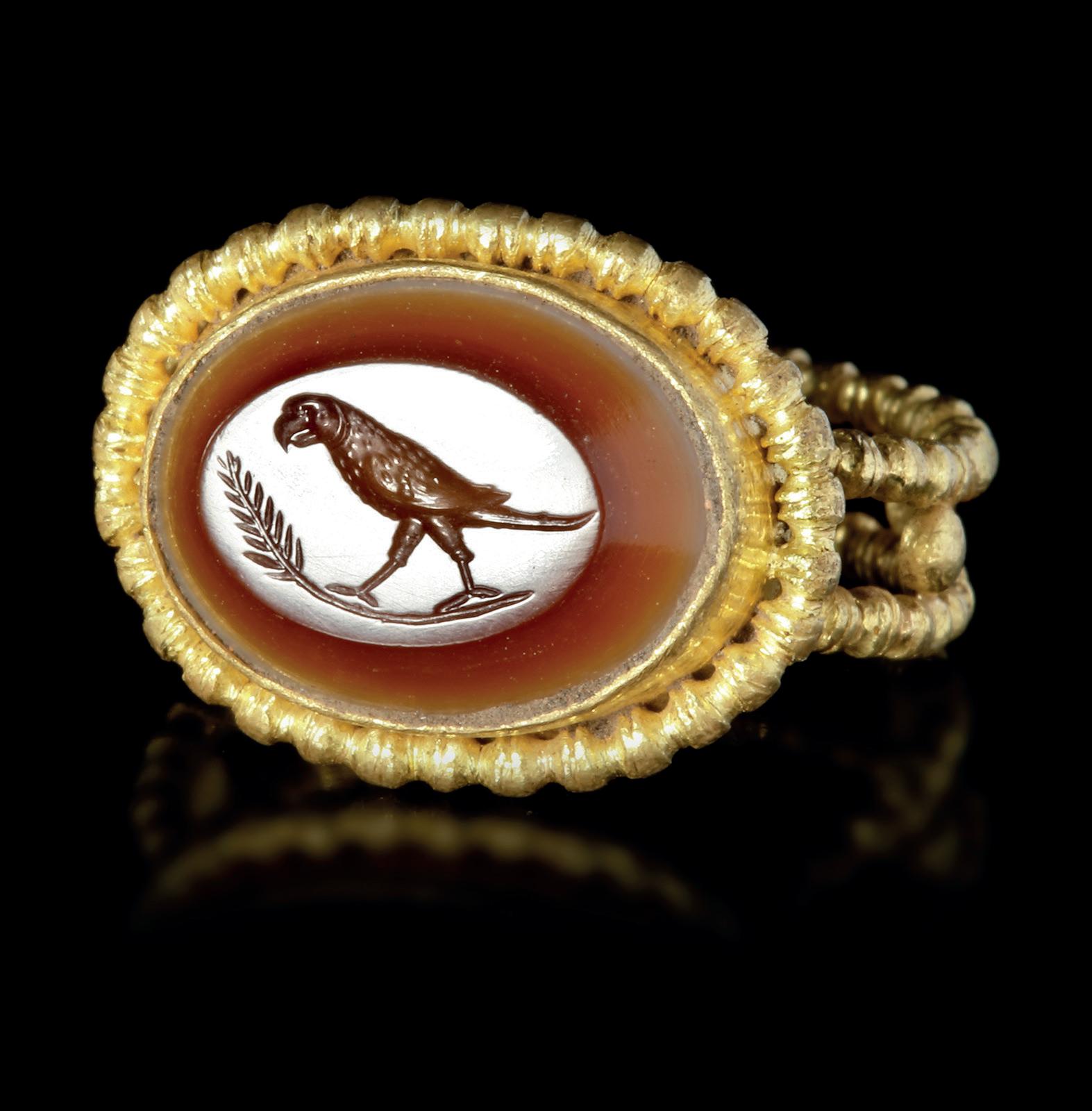
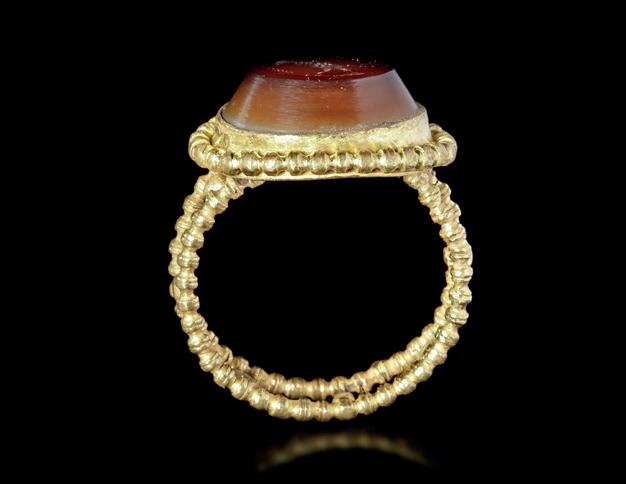
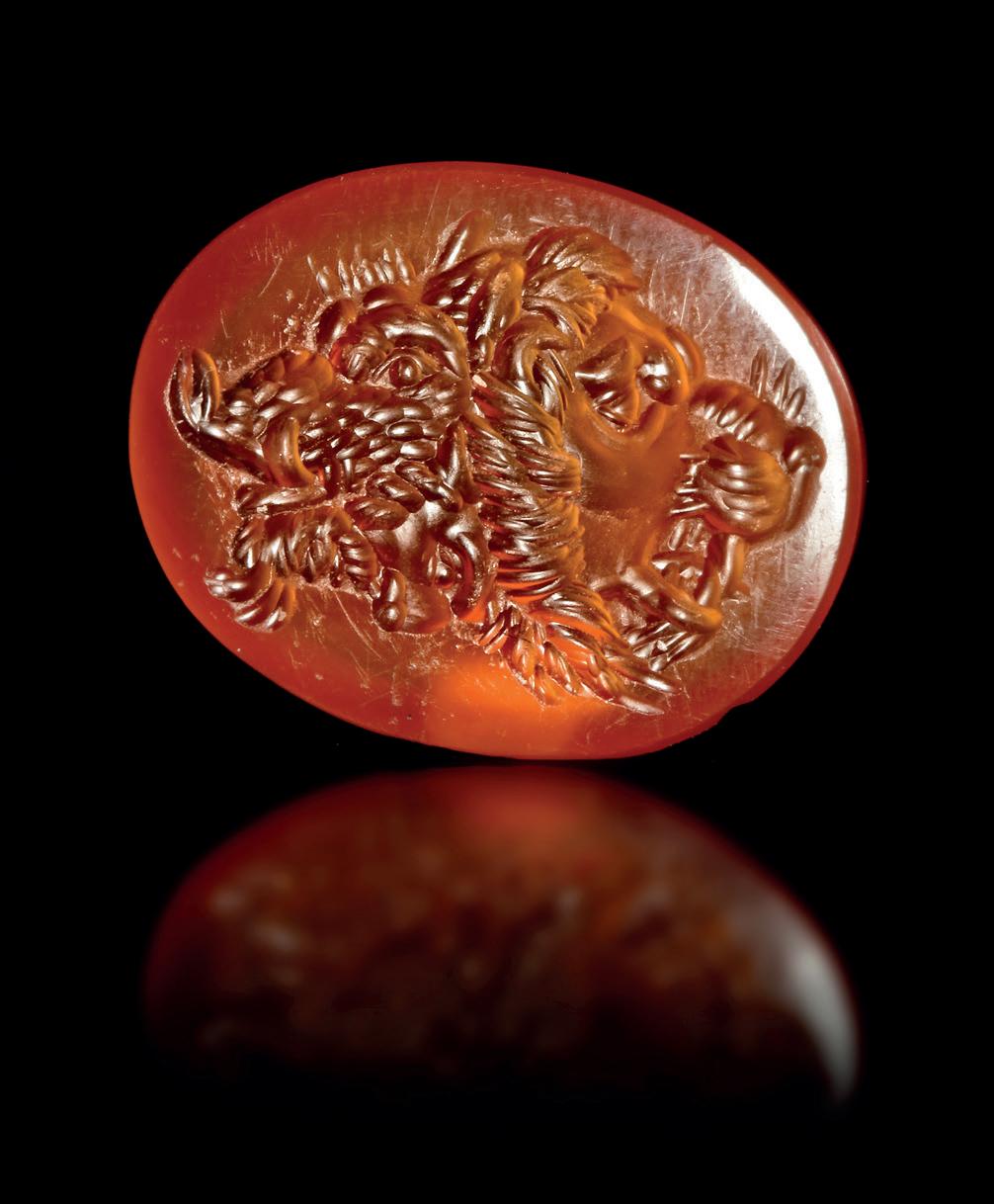
A ROMAN CARNELIAN INTAGLIO OF A GRYLLOS, 1ST CENTURY AD
these compositions and they would have served as personal seal rings.
Carnelian, Roman 1st.c.A.D.
17 by 13 mm.
Weight: 1.0 gr.
PROVENANCE
From a European collection since the 1980's.
Estimate € 1200 - € 1500

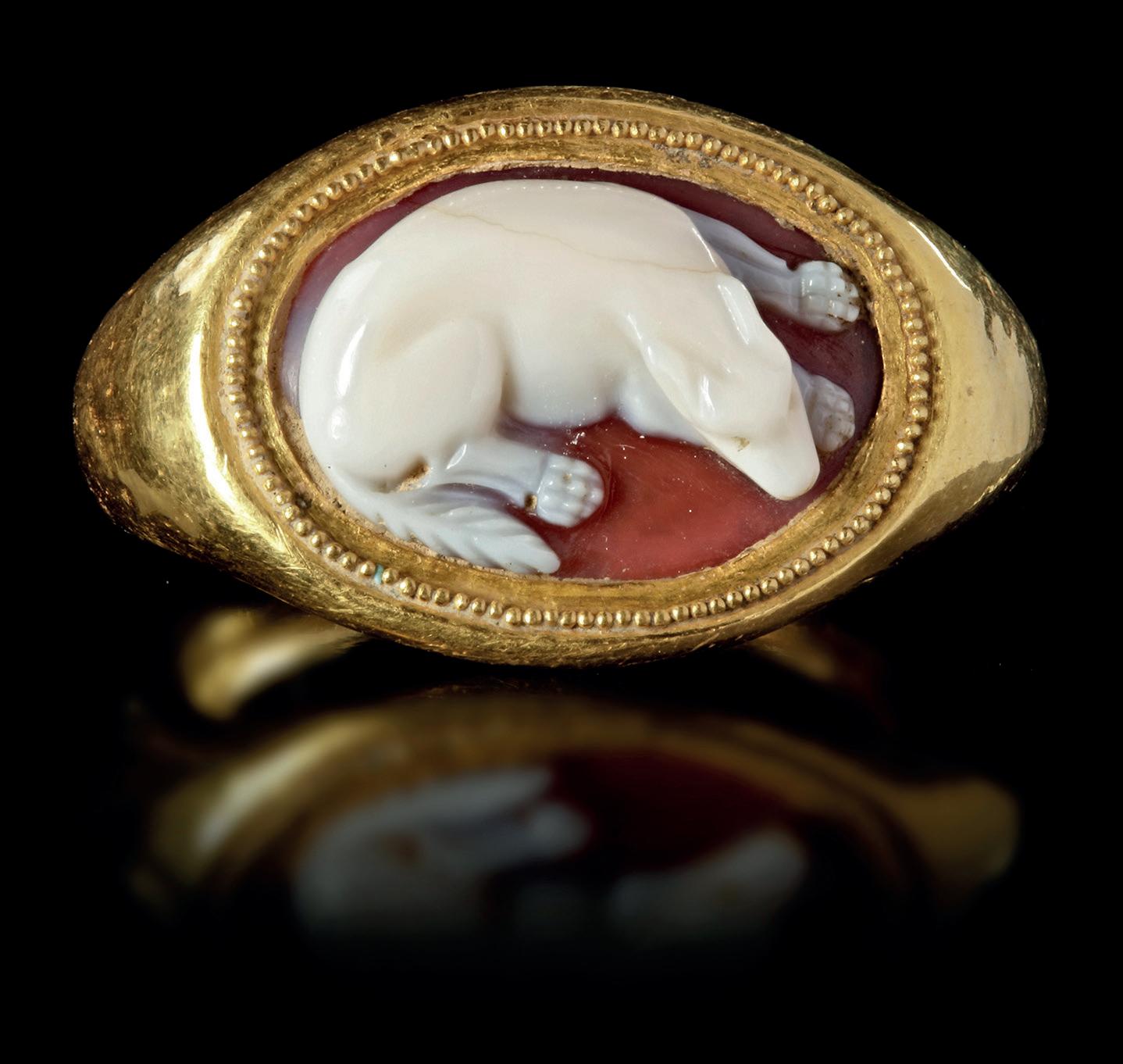
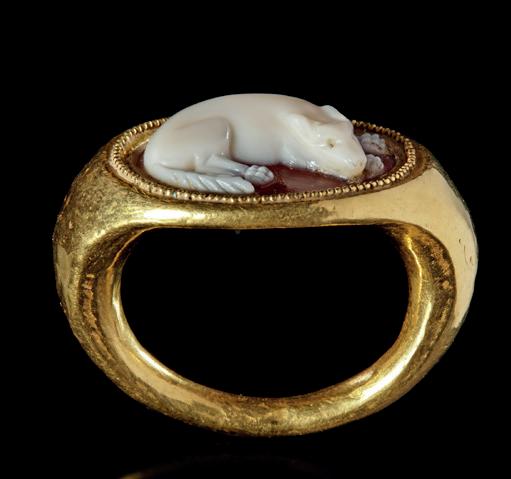
A ROMAN RING WITH A CAMEO OF A DOG. 1st.c.A.D.
A Roman hollow gold ring with a cameo of a sleeping dog. Around the setting a line of filigreed granulation has been added. A very popular choice of subject in Roman times, the sleeping dog literally represented the guardian of the home. The wealth created by the Roman Empire meant that many had property which was worth defending and the loyalty of the owner's pet was unrequited so a fitting symbol to wear. 26 mm x 32 mm
PROVENANCE:
From a European collection formed in the 1980's.
Estimate € 4000 - € 6000 Lot 44
A ROMAN PORTRAIT INTAGLIO OF 'AELIUS' 2ND CENTURY AD, MOUNTED IN A 20 CENTURY GOLD RING, 18K WITH DIAMOND
A Roman intaglio of Aelius, who was Hadrian's appointed successor who predeceased him in 138 A.D. The intaglio shows the bust of the caesar to the right. While Hadrian's portraits are relatively common, those of Aelius are far rarer. The style of the ring, with a diamond surround, suggests a date of the early 20th.c. Garnet, gold and diamonds, Roman 2nd.c.A.D. ring early 20th.c.A.D. marked 750 gold
27 by 23 mm.
Weight: 11.8 gr.
EU size 18
PROVENANCE
From a European collection since the 1980's.
Estimate € 4000 - € 6000
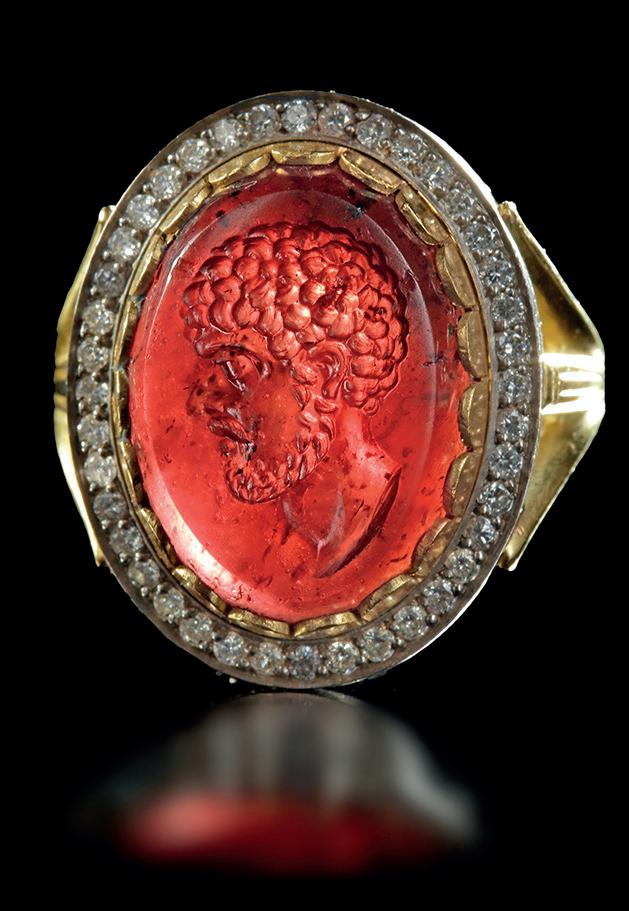
Lot 45
A LARGE ROMAN GOLD RING WITH AN INTAGLIO SHOWING A BUTTERFLY, 1ST CENTURY AD
A large Roman gold ring made from a heavy beaded gold wire, attached to a large beaten sheet gold bezel which holds an agate intaglio of a butterfly which represents Psyche, the soul in antiquity.
Gold and agate. Roman 1st.c.A.D.
26 by 27 mm.
Weight: 10.2 gr.
EU size 9
PROVENANCE
From a European collection since the 1980's.
Estimate € 2000 - € 2500
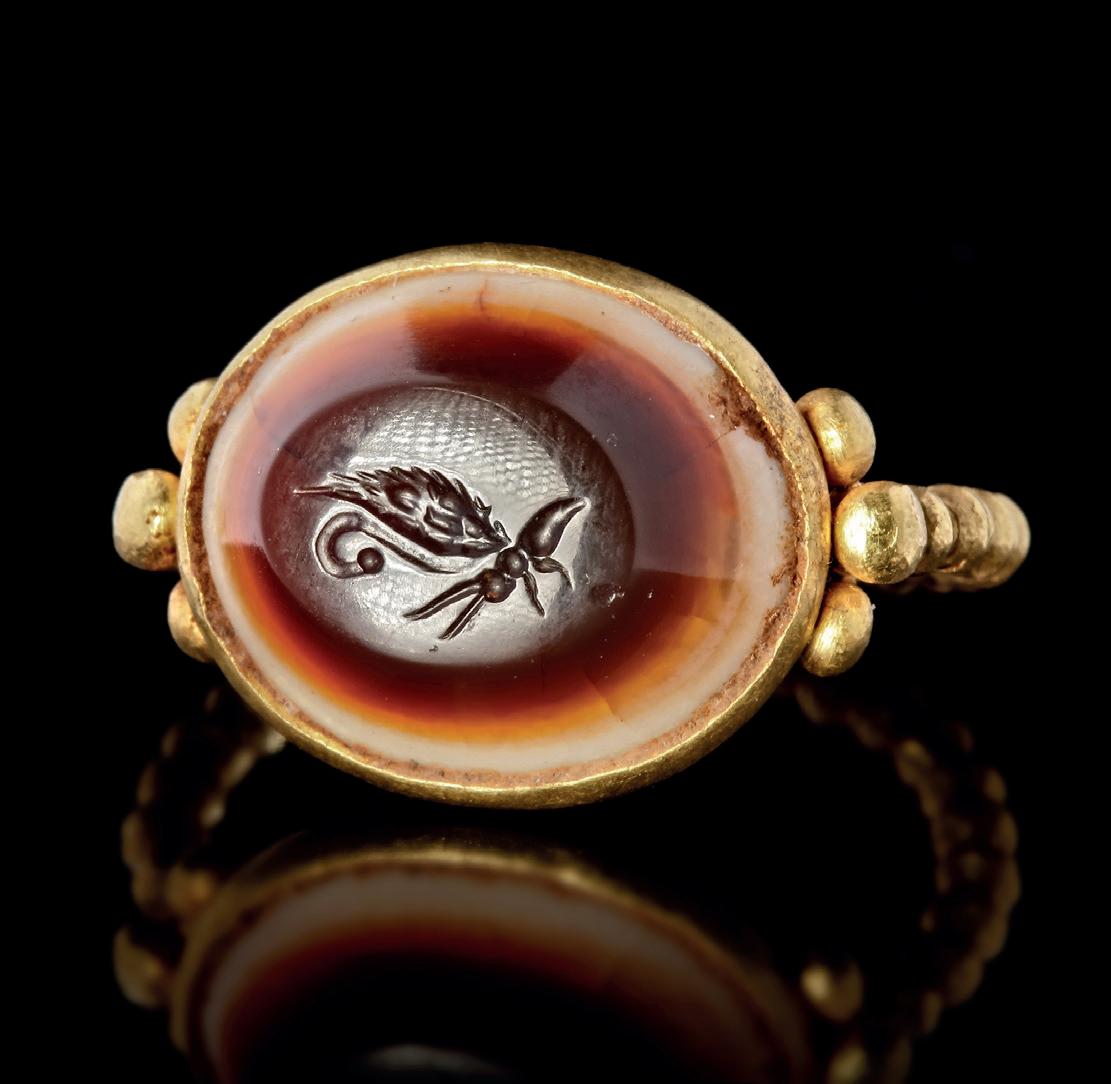
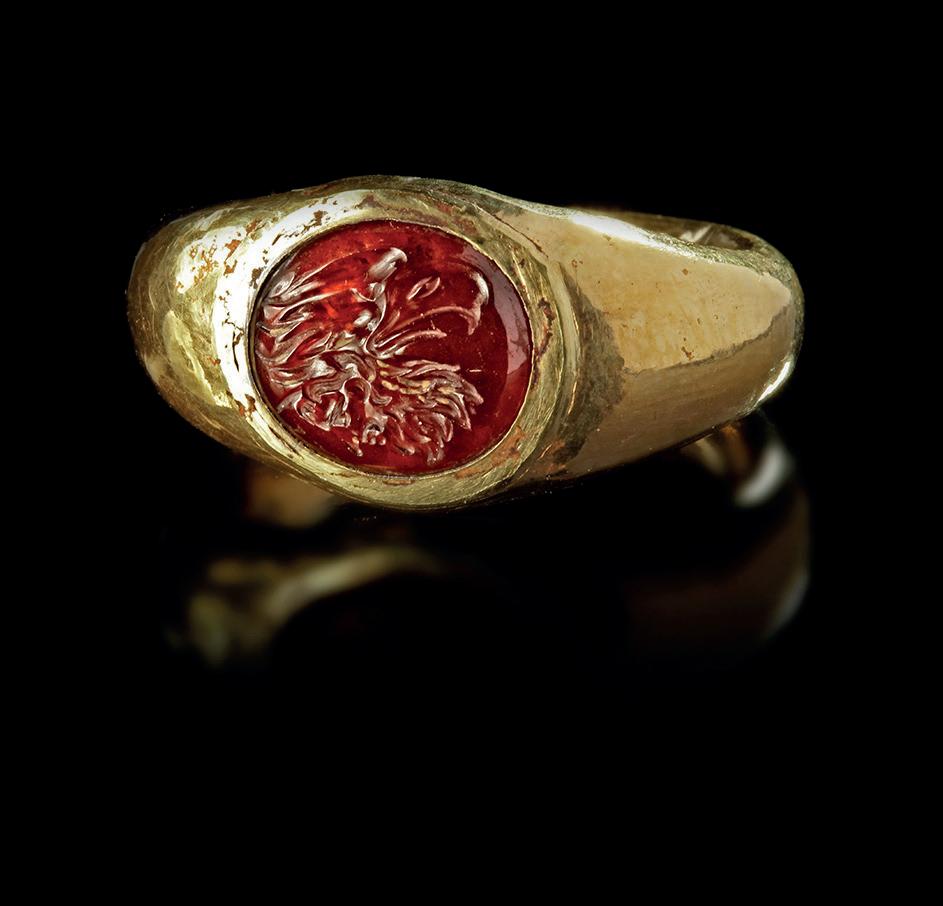
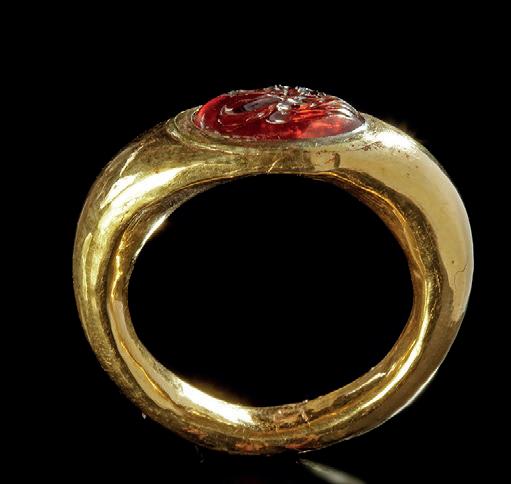
Lot 46
A HOLLOW ROMAN GOLD RING WITH A GARNET INTAGLIO OF AN EAGLE'S HEAD, 1ST CENTURY AD
A charming hollow gold ring from early imperial times showing the head and neck of an eagle finely engraved on a cabochon garnet. 21 by 24 mm.
Size: 7
Weight: 3.4 gr.
PROVENANCE
Ex-European private collection acquired before 1970
Estimate € 800 - € 1200

RED JASPER INTAGLIO OF SILENUS’ FACE ROMAN, 1ST–2ND CENTURY A.D.
This striking intaglio, carved from deep red jasper, presents the bearded face of Silenus, a companion and tutor to the god Dionysus in Greek and Roman mythology. Rendered with expressive detail, the figure’s wide eyes, prominent features, and wild beard evoke the spirited and often drunken wisdom of this mythological elder. Radiating from the head are stylized locks or vine-like shapes, perhaps symbolizing his divine association with wine and nature. Likely used as a personal seal or amulet, 0.8 cm.
Weight: 0.68 gr.
Estimate € 500 - € 800
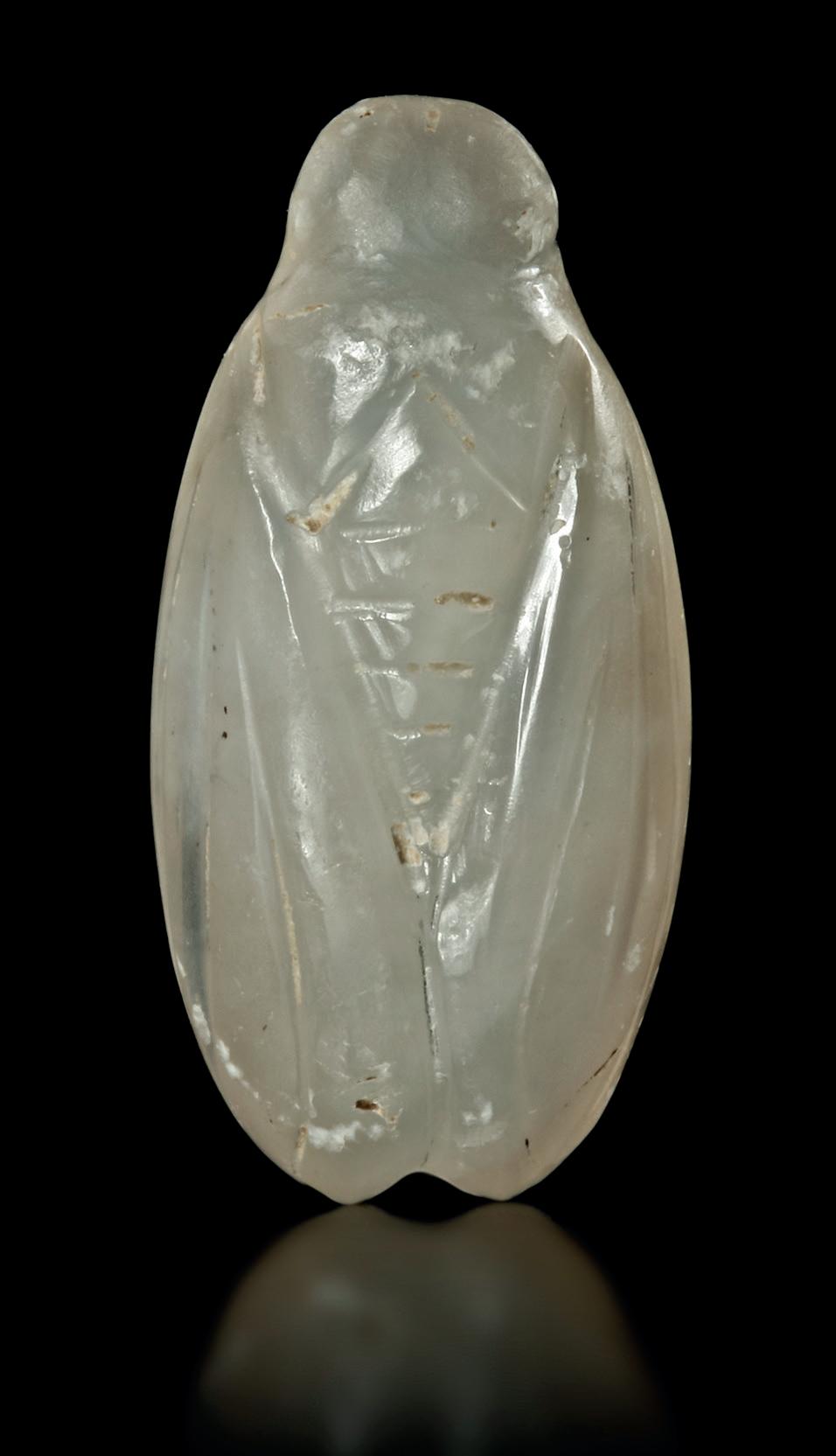
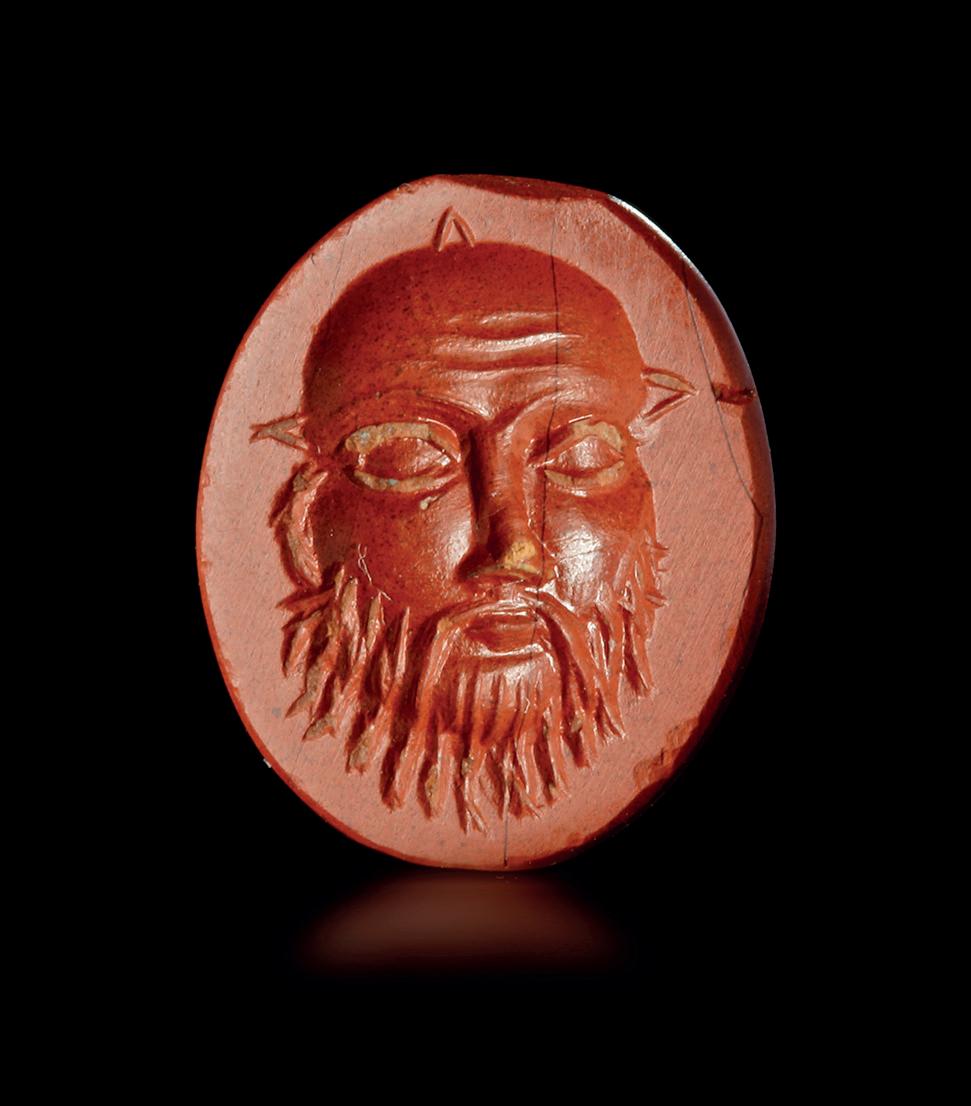
Lot 48
A ROMAN CHALCEDONY AMULET IN THE FORM OF A CICADA. 1st.c.A.D.
A Roman amulet made of light grey chalcedony in the form a a cicada. 31 mm
Estimate € 1000 - € 1200
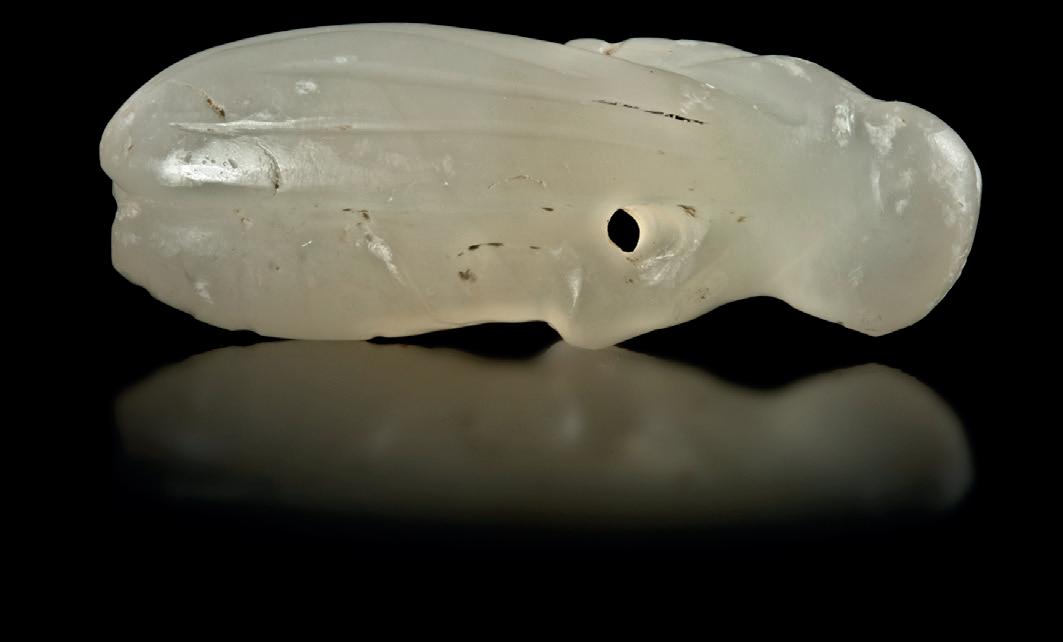
Lot 49
A ROMAN HEAD OF A BARBARIAN OR GAULISH A PALE ORANGE CARNELIAN , 1ST-2ND CENTURY AD
A Roman carnelian bead in the form of a head of a Barbarian or Gaulish He is bearded and his head is shaved bar a pony tail. He quite possibly represents a Dacian captive taken by one of Trajan's campaigns.
25 by 17 mm.
Weight: 8.7 gr.
PROVENANCE
Ex-European private collection acquired before 1970
Estimate € 2000 - € 3000
Lot 50
A ROMAN GOLD RING WITH AN AGATE INTAGLIO WITH MEDUSA, 1ST CENTURY AD
A hollow gold ring mounted with an agate intaglio showing the head of medusa.
25 by 24 mm.
Size: 13
3.2 gr.
PROVENANCE
Ex-European private collection acquired before 1970
Estimate € 1000 - € 1500




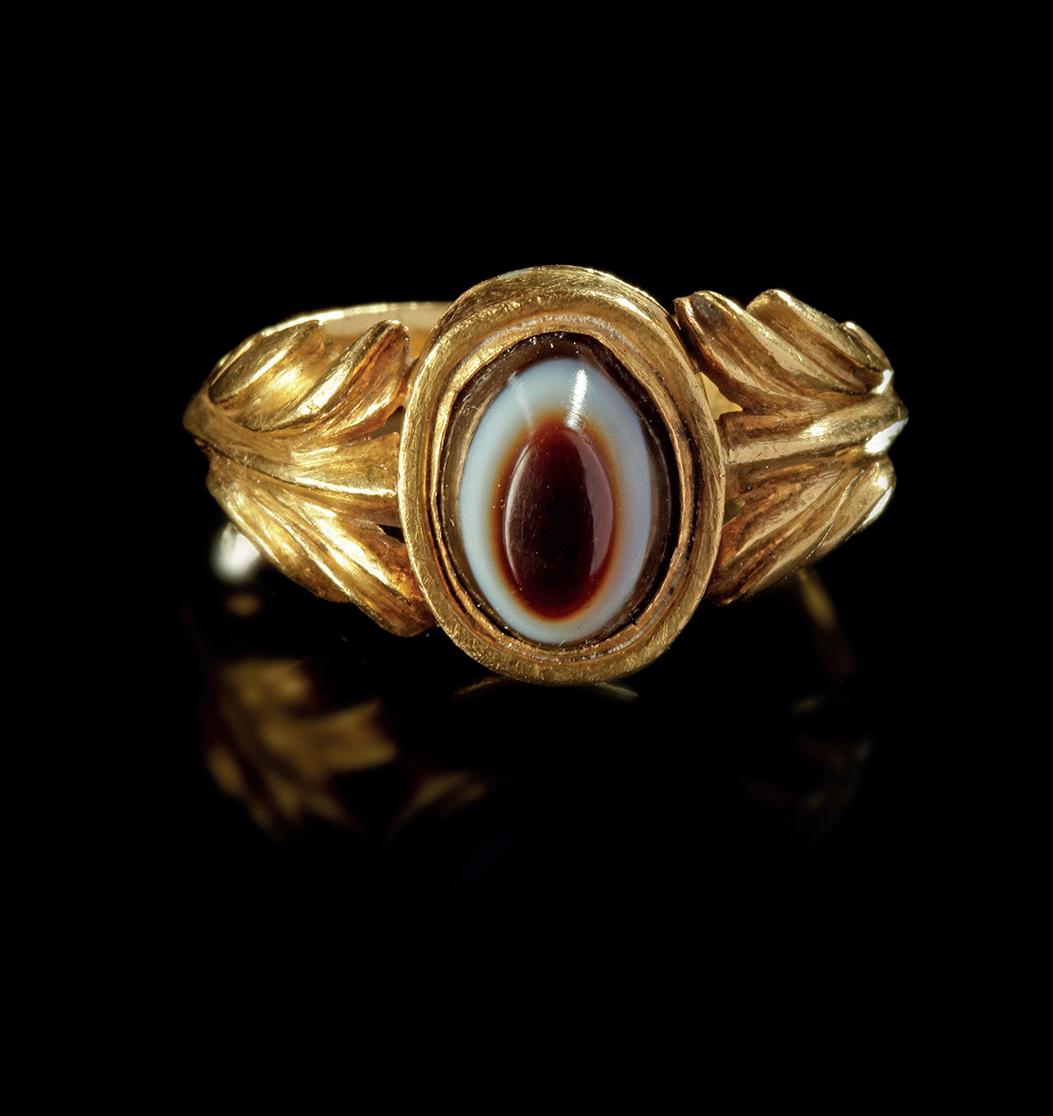
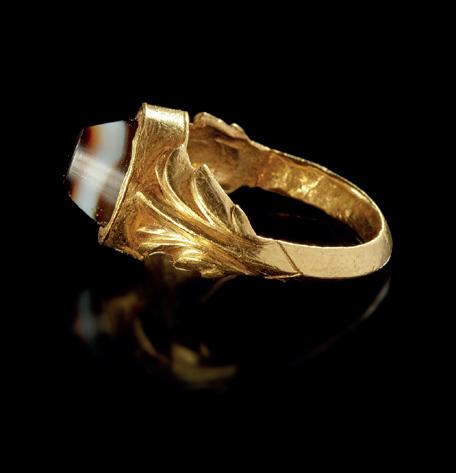
A ROMAN GOLD RING WITH AN AGATE MOUNTED IN THE BEZEL, 1ST-2ND CENTURY AD
A Roman gold ring with an elaborate shank ending in palm or acanthus finials which grasp the bezel which holds a banded agate/sardonyx conical stone.
28 by 24 mm.
Size: 17
Weight: 10.4 gr.
PROVENANCE
Ex-European private collection acquired before 1970
Estimate € 2000 - € 2500

Lot 53
A GNOSTIC INTAGLIO IN CARNELIAN. 3rd.c.A.D.
A gnostic intaglio in a dark red carnelian with some inclusions. The subject is an eagle facing to the right standing on a prostate who lies on a bed or groundling. One the head of the eagle there balances a head of a man, possibly Harpokrates. Around the type is an inscription of six Greek letters, probably the abbreviation of a formula. Some minor edge chips.
20 mm x 13 mm
Estimate € 500 - € 700
Lot 52
A SASSANIAN STAMP SEAL IN CHALCEDONY, 4TH-5TH CENTURY AD
A Sassanian stamp seal in a grey/brown chalcedony. A reposing lion is shown to the right, above him is a crescent moon and below, a star.
At the top is a Pahlevi inscription, probably the name of the owner. Grey/brown chalcedony. Sassanian 4/5th.c.A.D.
25 by 16 mm.
Weight: 15.3 g.
Estimate € 1500 - € 2000
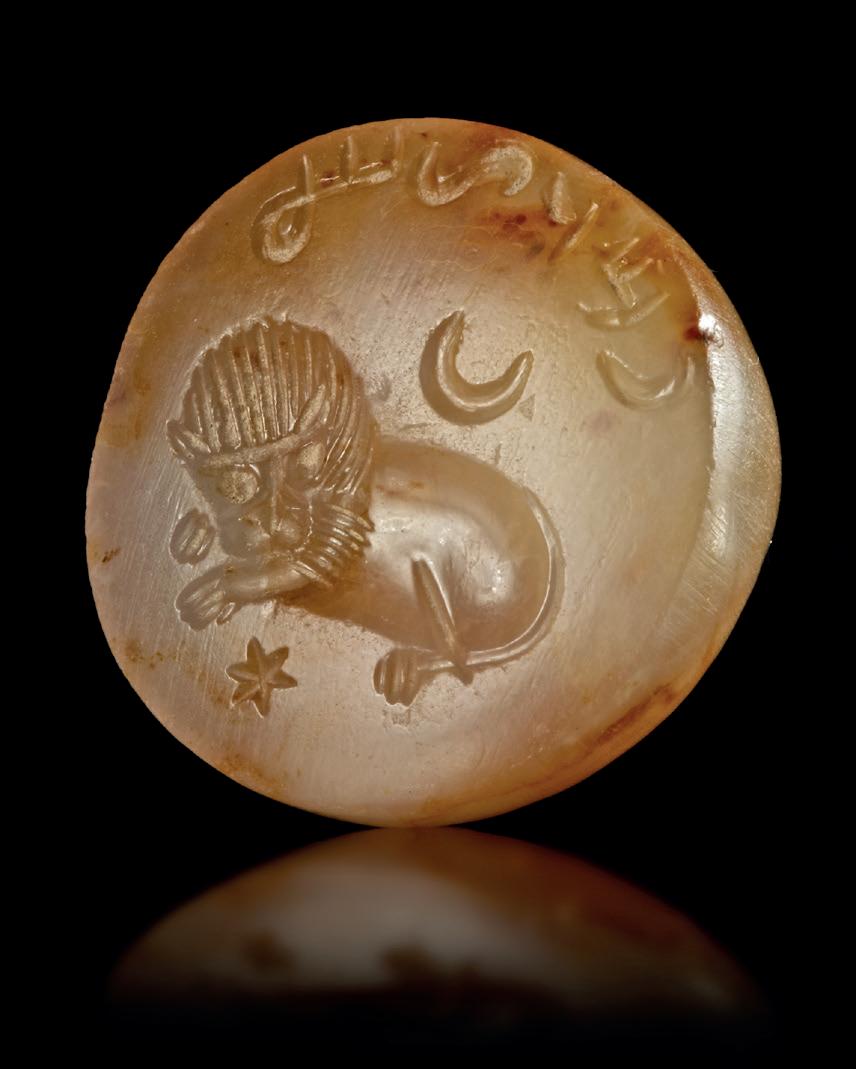
Lot 54
A HEMATITE GNOSTIC INTAGLIO, ROMAN, 3RD CENTURY AD
inscription 'Pepte'. Hematite, Roman 3rd.c.A.D.
27 by 16 mm.
Weight: 3.8 gr.
PROVENANCE
From a European collection since the 1980's.
Estimate € 1500 - € 2000



FOUR INTAGLIOS AND THREE CAMEOS IN VARIOUS MATERIALS, ANCIENT AND MODERN
A group of seven intaglios and cameos: one cameo of a facing medusa and a small cameo of Dionysos or Apollo, bust of a young man. The intaglios are of various subjects: Minerva, an eagle, bust of a woman and a crude representation of Leda.
Various stones and sizes. 1st - 20th c.A.D.
PROVENANCE
Ex-European private collection acquired before 1970
Estimate € 600 - € 800

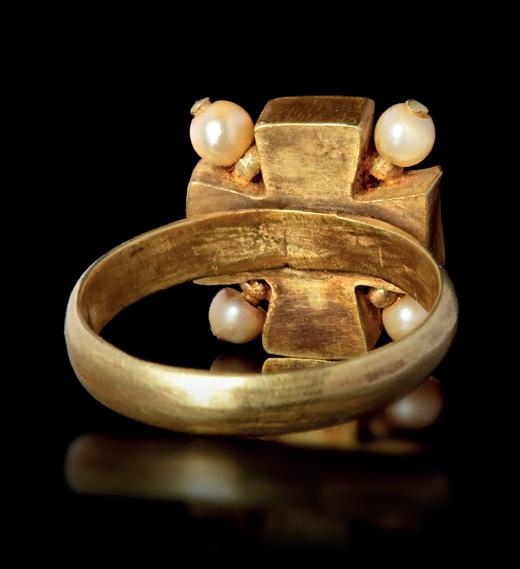
Lot 56
A BYZANTINE GOLD RING WITH A GARNET INLAY, 5TH-6TH CENTURY AD
An attractive gold ring in pale gold with a cross inlaid with garnets for the bezel. The cross in interspaced with river pearls attached to the bezel.
The shank/band is plain with a bevelled outside.
Gold, garnet and pearl. Byzantine 5/6th.c.A.D.
23 by 21 mm.
Weight: 5.9 gr.
PROVENANCE
From a European collection since the 1980's.
Estimate € 2500 - € 3000
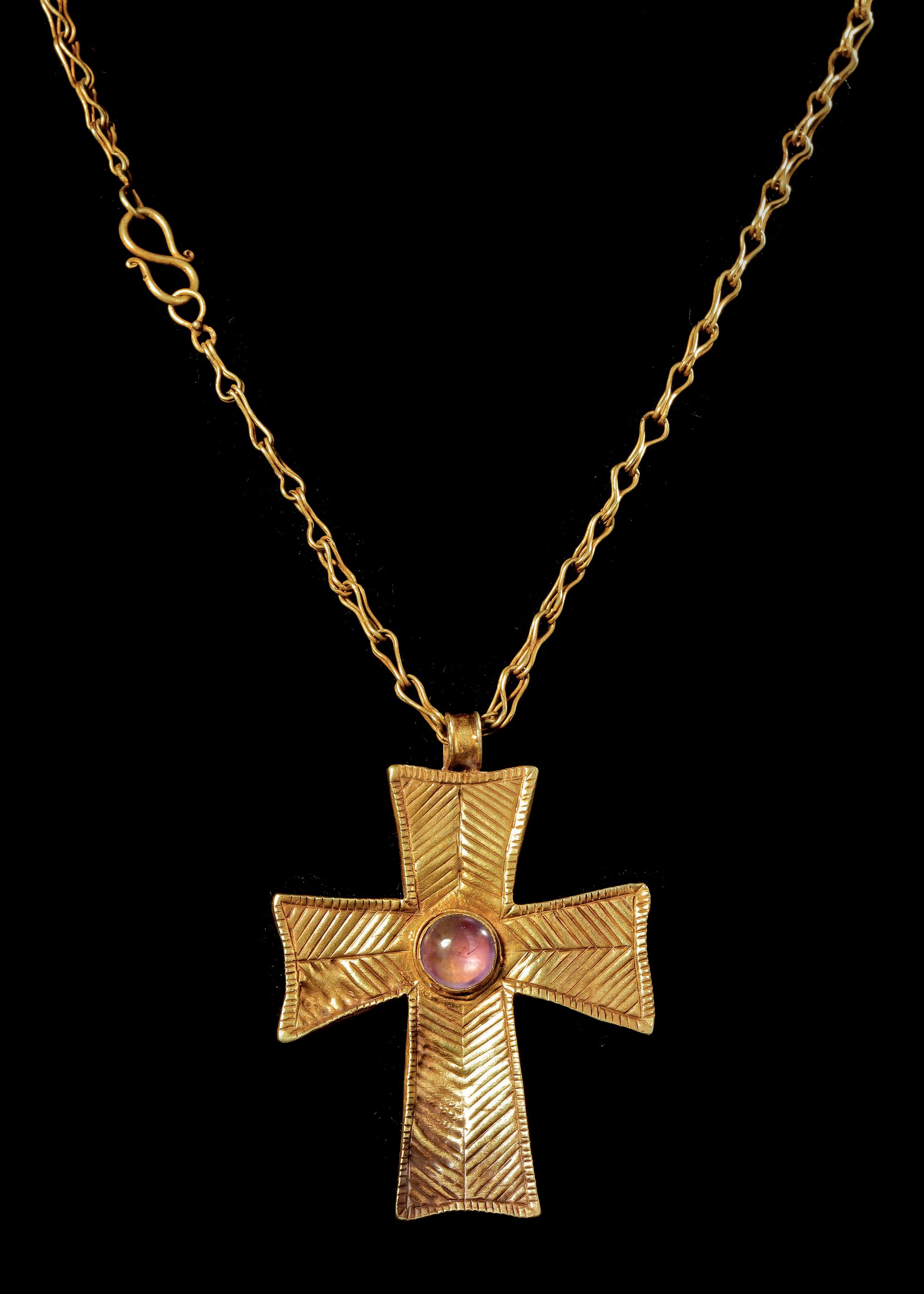
A LARGE PECTORAL CROSS IN PALE GOLD WITH A CHAIN, BYZANTINE, 6TH7TH CENTURY AD
A large pectoral cross in pale gold/electrum. the cross is made from a robust sheet construction with identical striated decoration on both sides. At the centre there is a large cabochon amethyst while at the back there is a hole perhaps to have placed another inlay. The chain is made from double hooped elements terminating in a simple 'S' shaped clasp.
Pale gold/ electrum Byzantine 6/7th.c.A.D.
Size: 65 by 48 by 6 mm. Chain 56 cm. long.
Weight: 30.6 gr.
PROVENANCE
From a European collection since the 1980's.
Estimate € 6000 - € 8000

A BYZANTINE GOLD RING IN FLOWER FORM GEM ARRANGEMENT – SAPPHIRE, EMERALD, PINK TOURMALINE , AMETHYST & PEARL, 5TH TO 6TH CENTURY A.D.
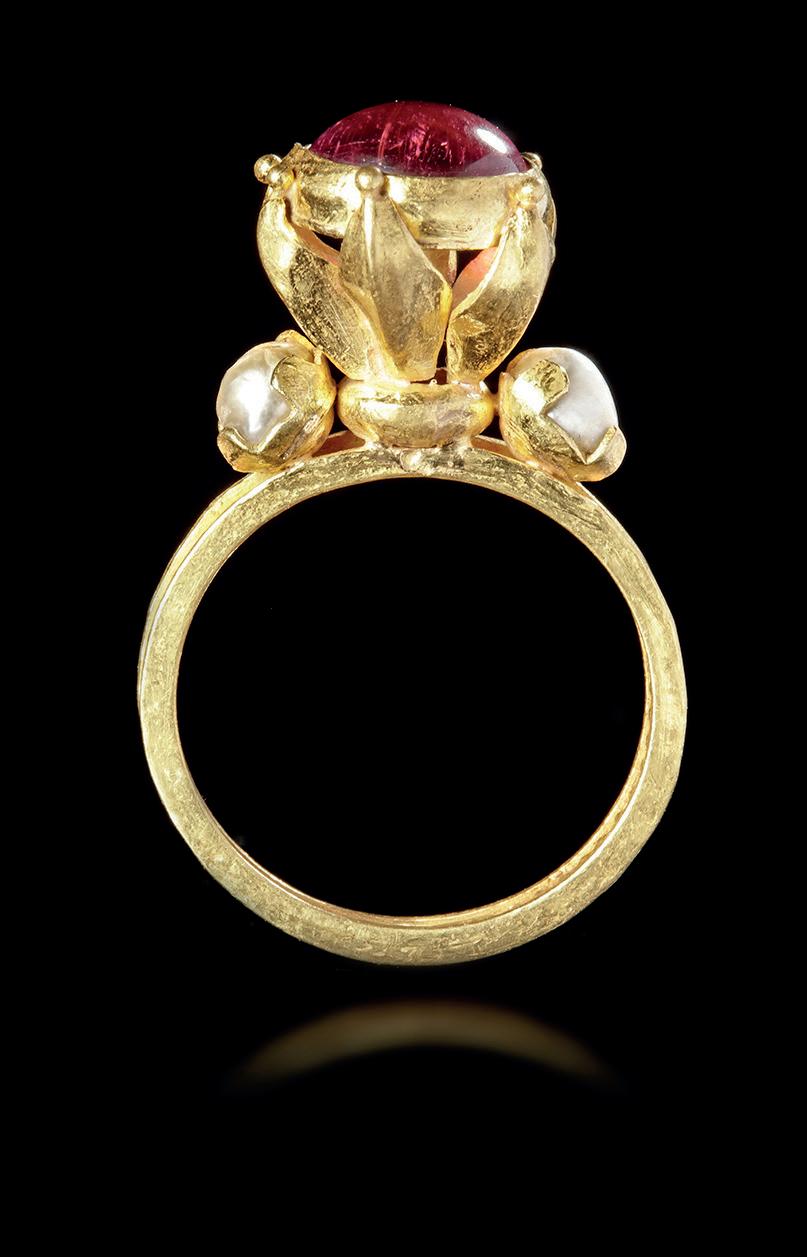
Features a radiant floral design crafted in gold, with a central pink tourmaline cabochon surrounded by a symmetrical arrangement of precious stones—sapphire, emerald, amethyst, and pearl.
Each gemstone, chosen for its symbolic power and vibrant color, forms a petal in this regal flower, symbolizing divine harmony, protection, and eternal beauty.
Size: 19
Weight: 7.43 gr.
Estimate € 1500 - € 2000



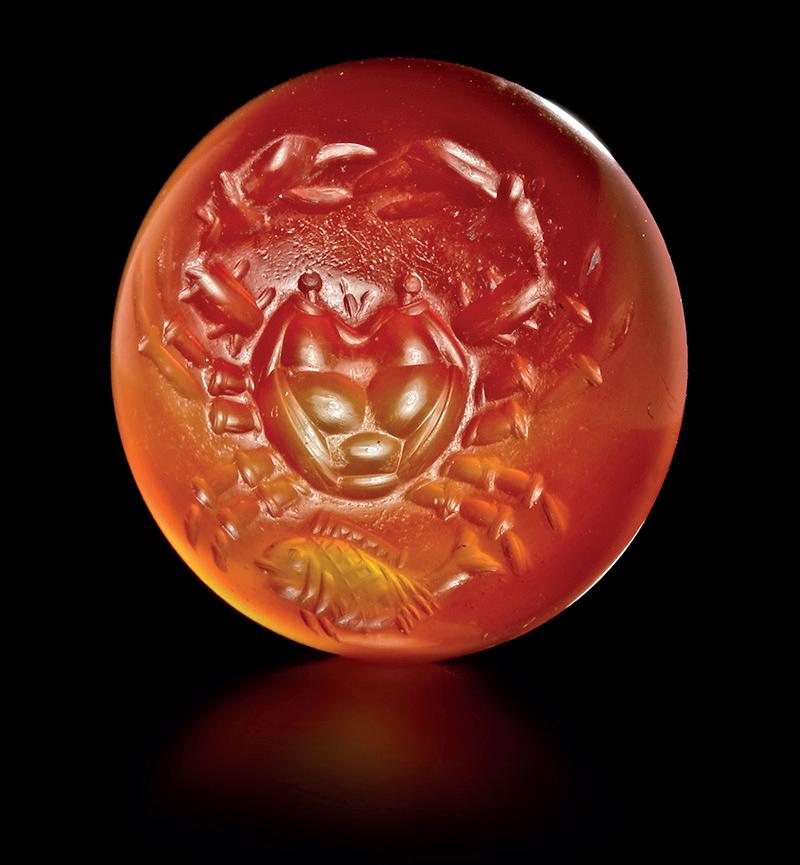
A ROMAN CARNELIAN INTAGLIO OF A CRAB WITH A FISH – 1ST CENTURY A.D.
Is crafted from vibrant red carnelian and features a striking depiction of a crab, its legs symmetrically outstretched and claws raised, flanked below by a delicately rendered fish. The imagery evokes marine life and possibly astrological or symbolic meaning, 1.6 cm.
Weight: 2.3 gr.
Estimate € 1500 - € 2000
EMERALD, GARNET AND PEARL RING 5TH TO 6TH CENTURY A.D.
This exquisite ancient ring, dating back to the 5th–6th century A.D., is a remarkable example of early Byzantine or Late Roman craftsmanship. Fashioned from rich, warm gold, the band is set with vibrant emeralds, deep garnets, and luminous pearls, arranged in an ornamental cross-like design. The cabochon-cut stones reflect light with subtle elegance, while the natural asymmetry and hand-wrought texture of the setting emphasize its artisanal origin. A piece that speaks to both opulence and spiritual symbolism, it likely held ceremonial or high-status significance in its time.
Size: 19
Weight: 4.81 gr.
Estimate € 2500 - € 3500

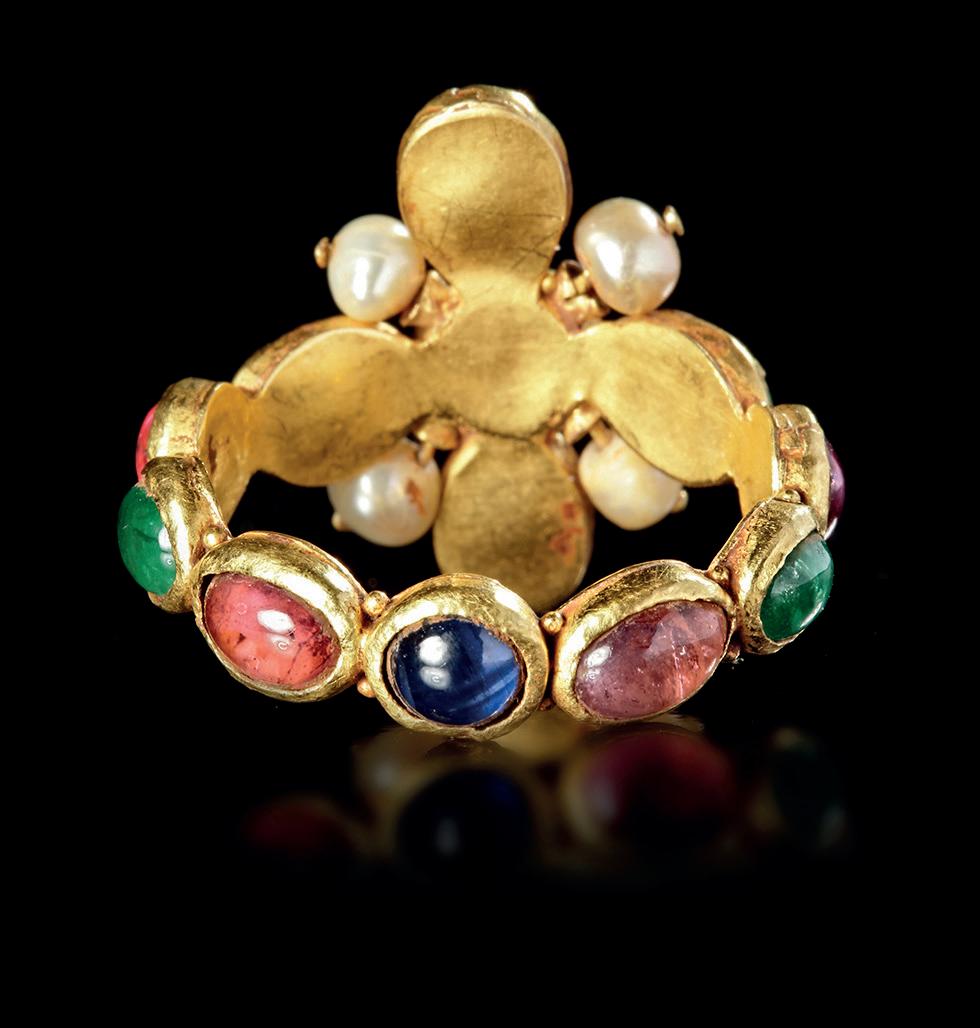
Lot 61
A BLUE CHALCEDONY HEAD OF A MAN, BYZANTINE, 5TH - 6TH CENTURY AD
A blue chalcedony head of a man, possibly a paleo-Christian saint(?).
Length: 33 mm.
Weight: 19.4 gr.
PROVENANCE
Ex-European private collection acquired before 1970
Estimate € 2000 - € 3000
Lot 63
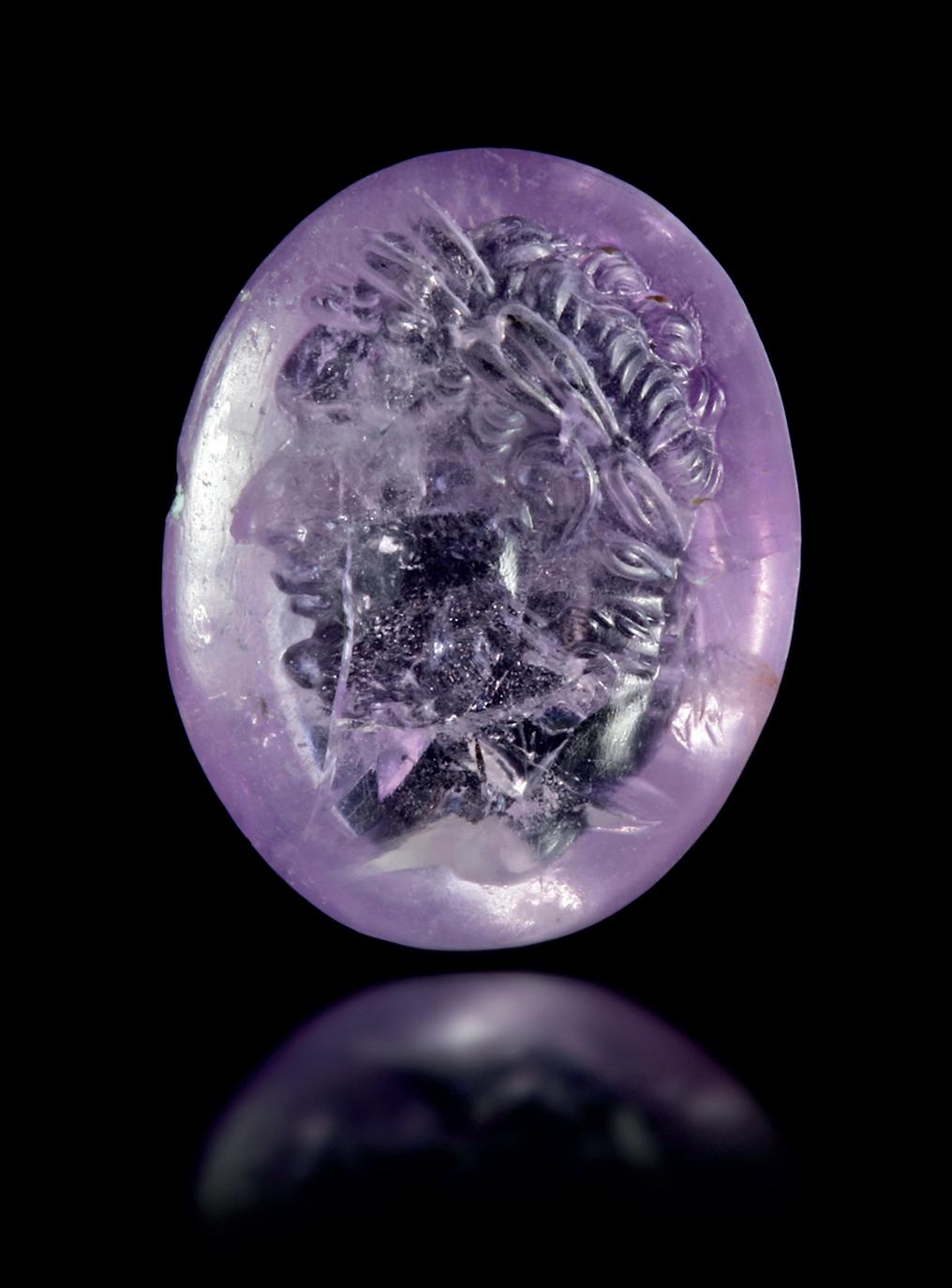
A ROMAN GOLD RING WITH A SMALL CAMEO, 1ST-2ND CENTURY AD
A charming Roman gold ring set with a small rectangular cameo showing two birds facing each other perched on a cantharus vase. The bezel has flat angled shoulders which taper outwards.
23 by 23 mm.
Size: 18
Weight: 7.2 gr.
PROVENANCE
Ex-European private collection acquired before 1970
Estimate € 800 - € 1000
Lot 62

A HELLENISTIC AMETHYST INTAGLIO 2ND TO 1ST CENTURY
The nice colour intaglio is depicting the portrait of a Seleucid king probably Demetrius the second.
Dimensions: 1.2 by 1. cm
Estimate € 1200 - € 1500
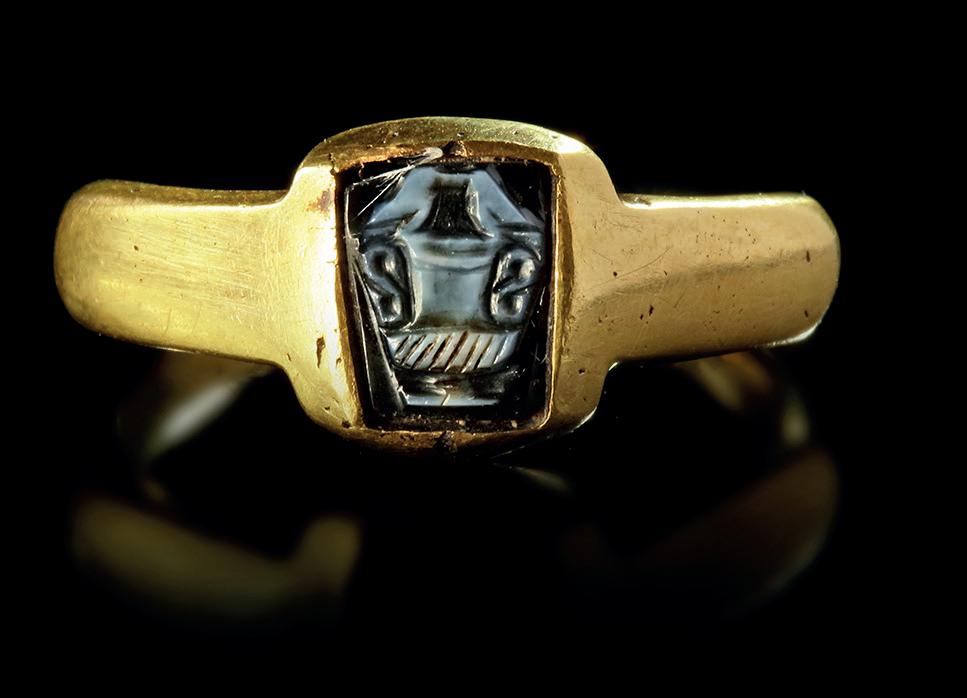
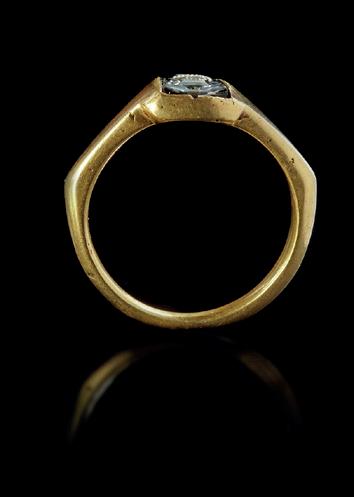

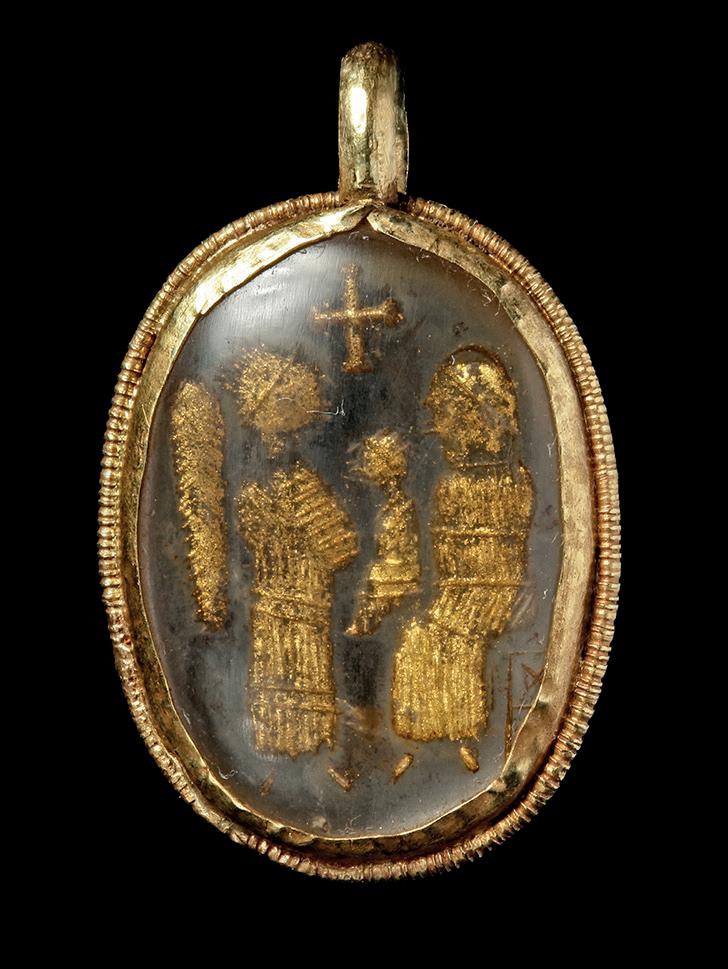
A Byzantine pendant in gold and rock crystal. The technique involved two oval cabochon rock crystal element, one of which was engraved on the flat side and then gilded with gold dust and a substance for adherence. The two halves were kept together by the gold frame which had a narrow profile in order not to obscure the type, which shows the Virgin and child with and Angel with an equal armed cross above. 35 by 24 mm.
PROVENANCE
From a European collection formed in the 1980's.
Estimate € 3000 - € 5000
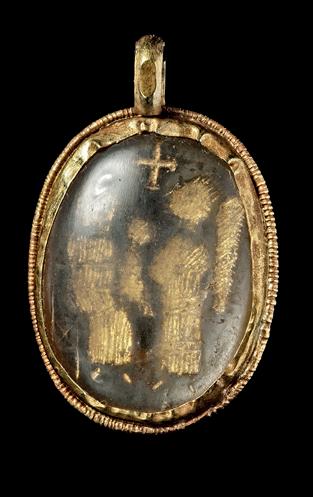
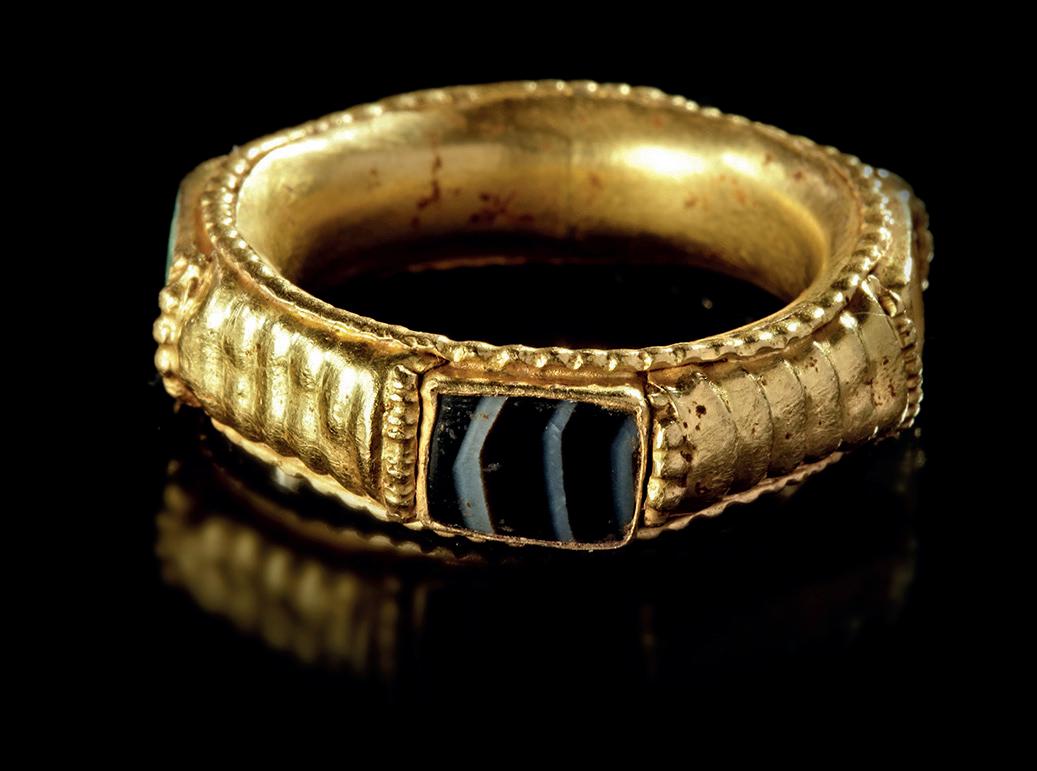
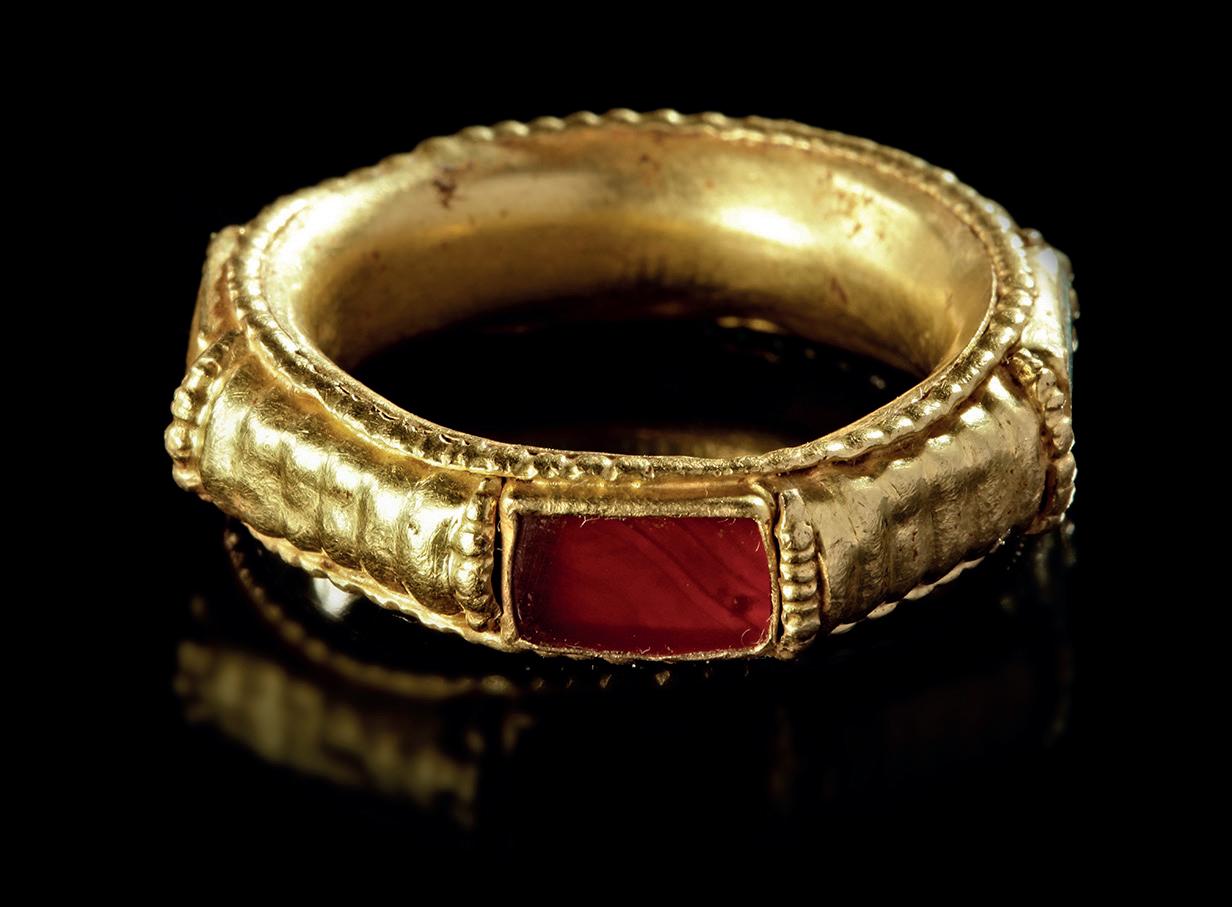
A LATE ROMAN GOLD RING WITH INLAYS, 3RD4TH CENTURY AD
A late Roman gold ring made of repousse sheets and four hard stone inlays. The shank is composed of an inner rounded fold sheet to which is soldered a beaded wire. On to this are then attached four oblong cells which hold the stones; chalcedony, carnelian, peridot and a banded agate. Between the stones are ribbed curved sheet elements. Gold with hard stone inlays.
Diameter: 29 mm.
Weight: 6.55 grams
PROVENANCE:
From a European collection formed in the 1980's.
Estimate € 1000 - € 1200

Lot 66 GOLD RING, LATE ROMAN, EARLY BYZANTINE, 5TH-6TH CENTURY AD
An early Christian ring in gold with a shank made in beaten gold sheet and the bezel made of sheet gold in the shape of an expanding cone. It acts as the setting for a cameo showing a Christogram within a wreath in niccolo or agate.
Diameter ring: 20 mm.
Diameter Christogram with gold band: 14 mm.
Height: 30 mm.
Weight: 4.9 grams
PROVENANCE:
From a European collection formed in the 1980's.
Estimate € 1500 - € 2000

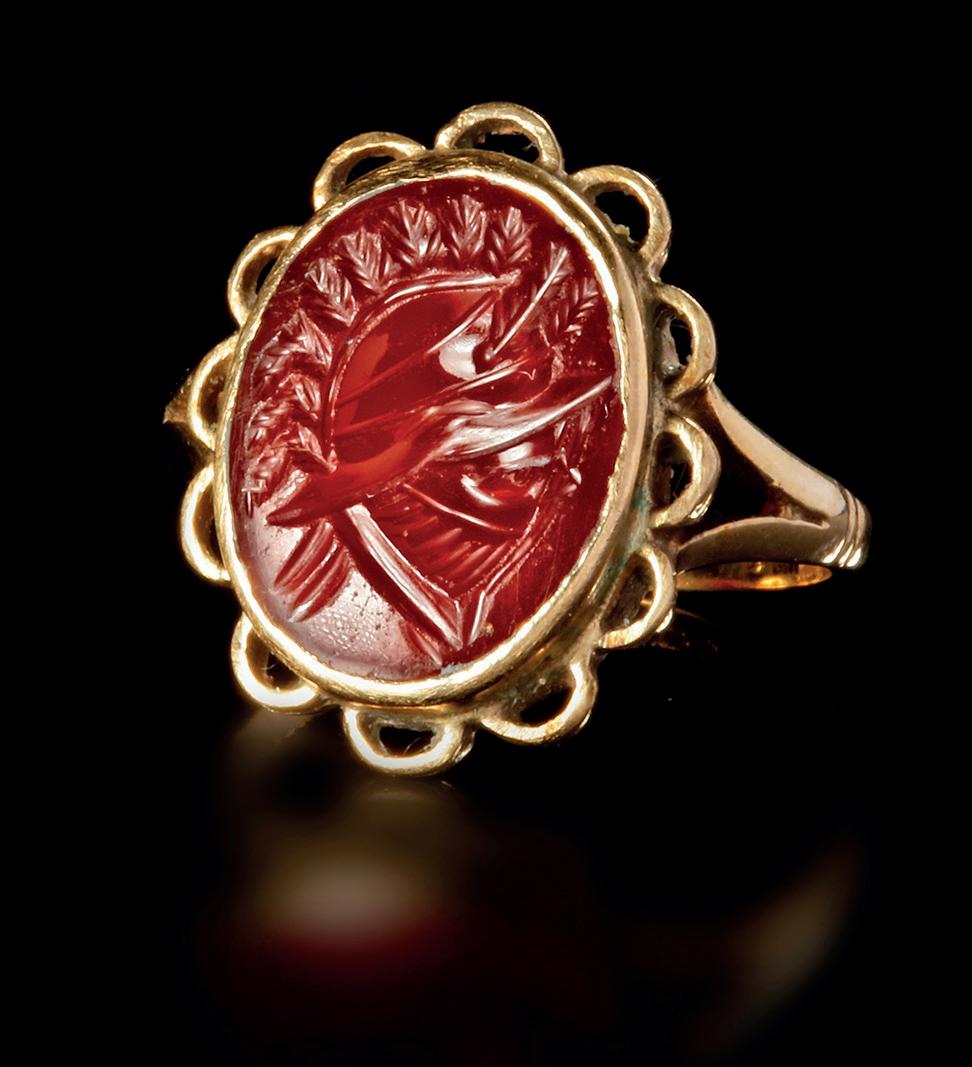
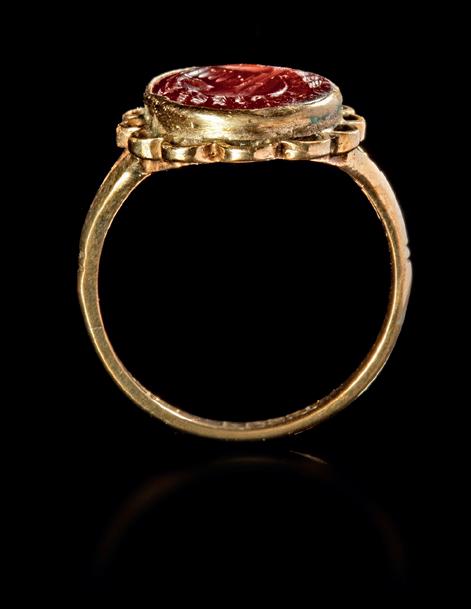
Lot 68
A ROMAN AGATE INTAGLIO RING
DEPICTING A MILITARY HELMET –1ST CENTURY A.D.
This elegant Roman ring,features a finely carved agate intaglio set within an ornate gold bezel of scalloped loops. The vivid red stone is engraved with a striking depiction of a Roman military helmet, rendered with precise detail and framed by laurel motifs symbolizing victory and honor. Worn as both personal adornment and a mark of status, the ring reflects Roman martial pride and artistic refinement.
Size: 17
Weight: 3.51 gr.
Estimate € 1500 - € 2500
BYZANTINE GOLD RING WITH GREEN BERYL INSET OF A PEACOCK 5TH–7TH CENTURY A.D.
This exquisite Byzantine gold ring showcases a lush green beryl intaglio intricately carved with the image of a regal peacock, crowned by a cross above its head. Symbolizing paradise, renewal, and eternal spring, the peacock in Christian iconography was a powerful emblem of immortality and resurrection. The gem’s rich hue and refined engraving are perfectly complemented by the warm glow of the finely worked gold setting. Likely worn as both a personal adornment and a spiritual token, this piece reflects the fusion of faith, symbolism, and luxurious craftsmanship that defined Byzantine art during the early medieval period.
Size: 18
Weight: 4.50 gr.
Estimate € 1500 - € 2000
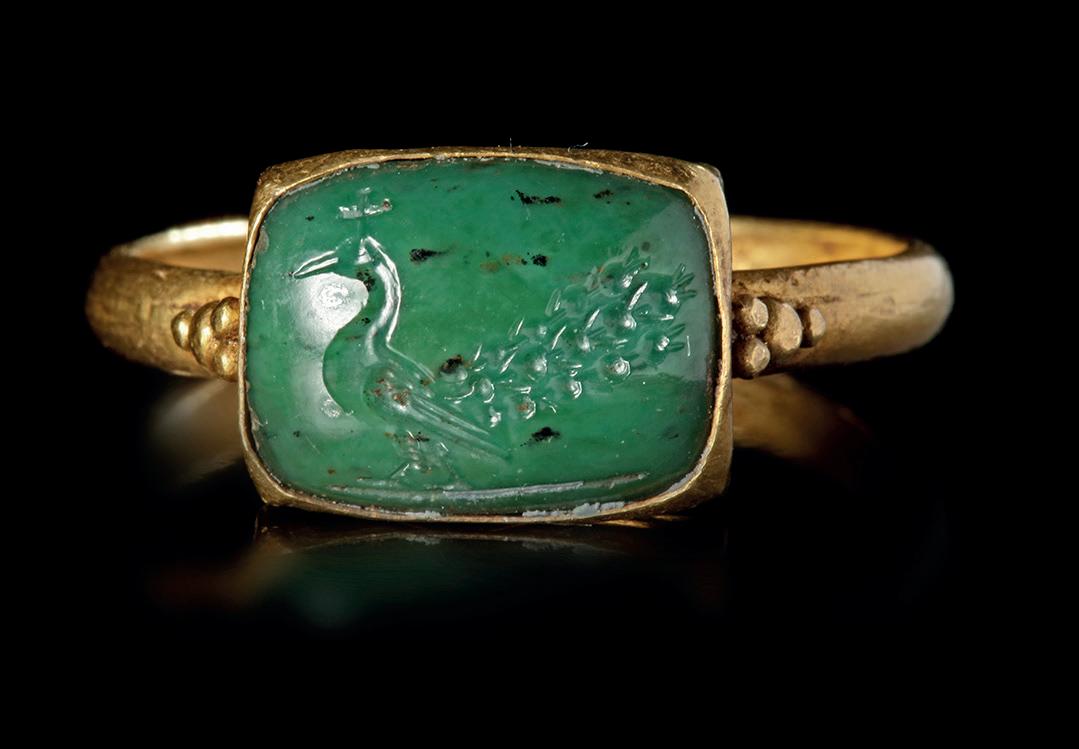


Lot 69
AN EASTERN GREEK BANDED AGATE SCARABOID OF A WALKING LION –5TH TO 4TH CENTURY B.C.
This striking scaraboid from Eastern Greece, carved from richly banded agate, features the proud and powerful image of a lion in mid-stride. Dated to the 5th–4th century B.C., the craftsmanship is superb—each detail from the lion’s textured mane to the poised muscular limbs is rendered with precision and grace. Framed within a finely incised border, the figure exudes majesty, embodying strength, authority, and royal protection in ancient Greek symbolism. 2.2 by 1.3 cm.
Weight: 6.96 gr.
Estimate € 2000 - € 3000
An amulet of a bee made from a variegated crystalline limestone. This finely carved amulet of a bee might well have been made for wearing as the wings close above the body allowing for a hole for suspension. The bee was a popular subject in antiquity as it represents hard work, fecundity and selflessness.
34 mm x10 mm x 22 mm
Estimate € 1200 - € 1500
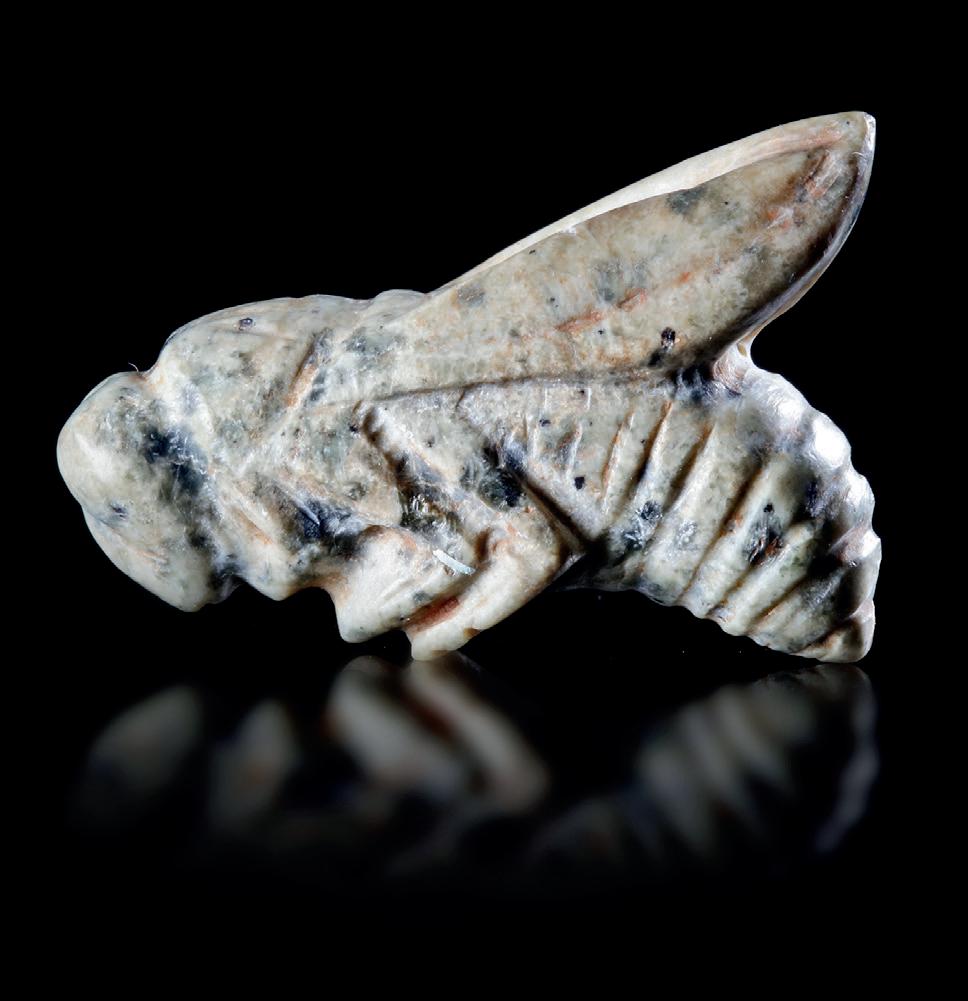

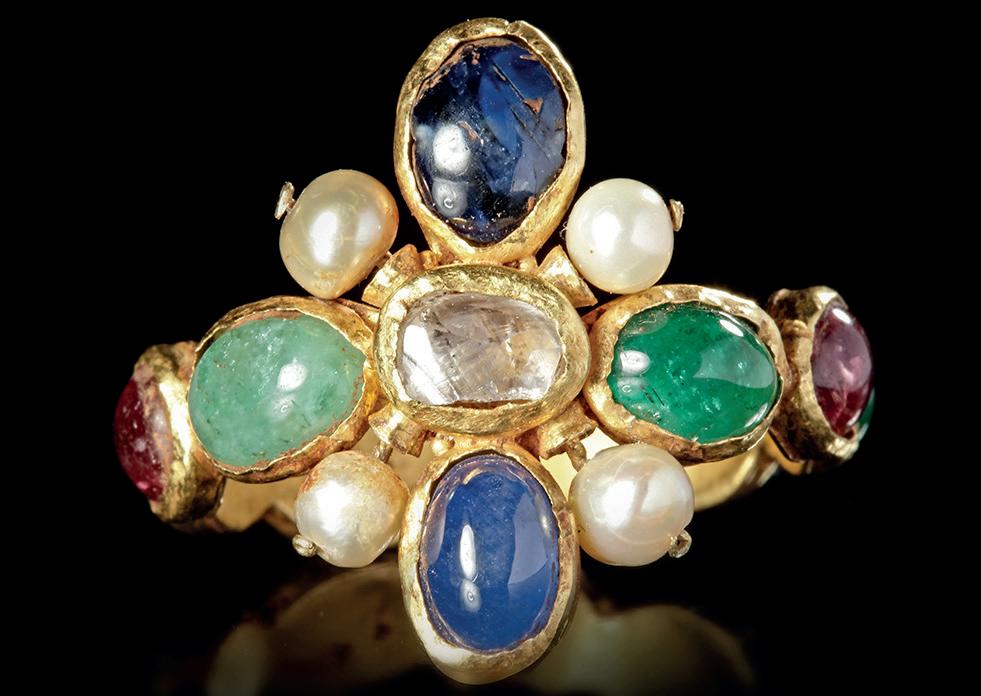
There are several ways to bid at Oriental Art Auctions:
Many clients prefer bidding live online. It’s easy to register with us online and you can watch the auction as it happens and place bids from the comfort of your computer. You can easily register on our website. After being approved you receive an email. Now you can subscribe for the auctions on our website and make bids or auto bids. Clients who wish to bid on line through our website during auction should register 24 hours in advance of a sale.
Simply register at the sale room, or on auction days at the registration and cash desk. You may need to provide identification. Once you have registered you will be handed a bidding number to use in the saleroom. When the bidding begins on your lot raise your number to bid. When the bidding stops the auctioneer will bring down the gavel and read out your number if you have won the lot.
If you are unable to attend the auction we can bid on your behalf. You can leave an absentee bid completing an absentee bid form and either hand it to a member of staff or email it to info@orientalartauctions.com. Please note that our bid department may contact you for further details.
Either way, the amount you enter on the form should be your maximum limit excluding buyer’s premium and applicable VAT. We will bid up to that limit for you, and remember you may end up paying less than your limit, depending on other bidding on the day.
All absentee bids must be received 24 hours in advance of the auction.
If you would like to bid by telephone, a member of staff will call you from the saleroom on the auction day, just before your lot(s) come up, and will then relay to you the events in the room, and bid on your behalf live at the auction when instructed to do so.
If you would like to bid by telephone please contact our team prior to the auction with your details of the lots you are interested in and your full name, mailing address, telephone number(s) and email.
Once our team have processed your bid request you will receive an email confirmation.
All telephone bids must be received 24 hours in advance of the auction.
Please note that Oriental Art Auctions cannot be held responsible for being unable to contact you by telephone. We advise you to remain in an area where mobile communication has good reception.
All items may be viewed for inspection in person at the sale room. Viewing dates will be published well in advance on the website. You can always make an appointment for viewing outside the viewing days.
Our auctions are available to view online. We make very high resolution images available online so you can check the item well online. For further information on a lot you may be able to view a condition report online (see below) or contact info@orientalartauctions. com
All lots carry an estimated price range, which indicates our opinion of value. If there is a reserve on the lot then it cannot be sold below that price. Reserves are never higher than the bottom estimate.
We highly recommend that potential bidders gather as much information as possible regarding a lot before placing a bid. Oriental Art Auctions provide as much possible information regarding condition and detailed photographs of each object online. If, however, you are unable to view a lot in person you may request a condition report and/or additional images of a lot by email info@orientalartauctions.com
We kindly request that you submit your wish for additional information as early as possible.
Lot descriptions and estimates are prepared in advance of the auction and may be subject to change. Any alterations will be published on the alteration sheet and be mentioned by the auctioneer before bidding of the items in question begin.
All purchases are subject to a buyer’s premium of 28% including VAT per lot. When you successfully bid on any lot, the price you pay will be the hammer price (the value you bid at the auction), plus the buyer’s premium.
The premium is subject to VAT at the standard rate, with the exception of lots marked in the catalogue with a hash (#) where VAT applies to both hammer price and buyer’s premium.
Credit card payments are subject to a 4% surcharge on the final total.
You may present these documents in person at our saleroom or, if registering for a telephone, internet or absentee bid, by email.We may, at our discretion, ask you to provide a bank reference and/or deposit as a condition of allowing you to bid.

Congratulations on your successful bidding, the next stage is payment.
There are number of ways to pay to make it as easy as possible for you. We accept cash, credit or debit card or bank transfer.
All items must be paid for before they can be collected.
Please find details in any email invoice we issue or upon request from our accounts department.
Cash payments can be made at the accounts desk during or after an auction. Please note that due to money laundering regulations we cannot accept cash payments above € 15.000
Payment can be made by credit or bank card. Please note we can accept Visa or MasterCard only, and there will be 4% surcharge
If you attend an auction in person and are successful in your bid, you are free to collect and remove your item there and then once payment has been cleared.
If you are not able to collect in person, Oriental Art Auctions provide in-house packing and shipping possibilities as well as providing quotes for external shippers.
Please contact info@orientalartauctions.com and we will provide you with the various possibilities.
As you may be aware several countries prohibit the importation of property containing materials from endangered species, such as rhino horn, ivory, coral and tortoiseshell. If you are interested in bidding on a lot containing these materials and you wish to export please make sure you are familiar with all relevant customs regulations prior to bidding.
It is the buyer’s sole responsibility to obtain any relevant export or import license.
Please be aware that lots marked with the symbol Y may be subject to CITES regulations when exporting outside the EU.
For further information on buying at Oriental Art Auctions please see our Conditions of Sale.
Notice to all bidders
As we wish to avoid unpaid bids in our auctions, please note the followingpoints before bidding. Bidders who have Chinese nationality must register using their name as stated on their Chinese resident’s identity card and Chinese passport, as a condition of participating in any auction. This rule is stipulated to prevent identity theft. If a bidder has entered a bid using a false identity, the company reserves the right to cancel any existing or future bid made by that bidder. Please carefully inspect and investigate the age and quality of original lots by yourself or have them inspected by your agents, in order to avoid any confusion or misunderstanding between the company and bidders. The company has received legal advice from Chinese law firms, to the effect that anybidders who violate relevant rules or provide fake identity, phone numbers or proof of address, shall bear all liabilityand relevant costs, including lawyers’ fees, litigation fees, arbitration fees, notarial fees, translation fees, travel fees and communication fees. In some circumstances, the company or the seller may apply to prevent the bidder from entering the country where the company is based or prevent them from departing from China. Bidders are required to followt hese rules and the company’s terms and conditions.
We are happy to value any items brought in to the saleroom. Should you have a number of items, please contact us and ask for an onsite valuation.
Once you have decided to sell your items at Oriental Art Auctions, you will receive a receipt detailing in short the items and any applicable reserves and conditions. The items will then be inspected again and processed in our system. Well in advance of the sale, you will receive a detailed receipt with descriptions via email and/or post.
You will receive an advised estimate of each item offered for sale, and we advise that the items are sold the auctioneer’s discretion. This discretionary value would equal a selling price of 10% below the low estimate. Alternatively a fixed reserve price below which we will not sell can be agreed upon when consigning your items. A reserve can never exceed the lower estimate.
You will receive notification of the lot numbers of your property usually about two weeks before the sale. You are of course welcome to come to the view or attend the auction if you wish.
Sale results are sent out within 48 hours of the auction and settlement is usually made six weeks after the sale, subject to normal business conditions. We can only pay out if the buyer paid for the items.


The present document comprises the Terms & Conditions of Consignment between you and Oriental Art Auctions and is applicable to the present and to each subsequent consignment terminating upon expiry at the end of the calendar year or upon the issue of a new version made available to you. Please read this document carefully, in view of the fact that rights and obligations arise as a result of this Agreement.
1.1 The present Agreement containing the General Terms & Conditions of Business is applicable to all parts of the relationship between Oriental Art Auctions B.V., hereinafter referred to as ‘Oriental Art Auctions” and the Consignor/Seller, hereinafter referred to as “the Consignor”, which include a particular purchase, sale, intermediary services, appraisals, evaluations, estimates, cataloguing, and custody, unless expressly agreed otherwise.
1.2 Any departure from the present General Conditions ls only possible if and insofar as expressly agreed in writing by Oriental Art Auctions.
2. COMMISSION CONTRACT
2.1 The Consignor hereby instructs Oriental Art Auctions to examine, appraise and sell at auction the movable property brought in by Consignor and taken delivery of by a representative of Oriental Art Auctions (hereinafter also referred to as: ‘the Items’).
2.2 Oriental Art Auctions are hereby authorized by the Consignor to sell the Items via Oriental Art Auctions under the auction conditions to be set by Oriental Art Auctions, irrespective of whether said authorisation regards all or, alternatively merely a few pieces. Consignor and Oriental Art Auctions may mutually agree upon setting a minimum price (reserve) for each consigned Item.
2.3 Taking delivery of Items, however, does not obligate Oriental Art Auctions to sell or to offer said items for sale at auction. ln the event that Oriental Art Auctions is not willing to enter the Items into auction, the Consignor will be informed by Oriental Art Auctions within four weeks subsequent to any such decision.
3.1 The Consignor shall provide proof of identity at the request of Oriental Art Auctions.
3.2 The Consignor warrants that in his/her capacity as true owner or by means of proper authorisation he is authorised to offer the Items for sale at auction and hereby indemnifies and holds Oriental Art Auctions harmless against any and all claims from a third party in relation thereto.
3.3 The Consignor at the request of Oriental Art Auctions is obliged to provide Oriental Art Auctions with information on and substantiated proof of provenance and origin of the Items. The Consignor is liable for any loss/damage in case of information which is inaccurate or misleading and/or in case of any other circumstances attributable to the Consignor and hereby indemnifies and holds Oriental Art Auctions harmless against any and all claims from a third party in relation thereto.
3.4 The Consignor duly declares that sale at auction of the Items is not obstructed by any national or international statutory provisions.
3.5 The Consignor is not allowed to bid on any Items brought in by him unless otherwise agreed in writing with Oriental Art Auctions.
3.6 The rights and obligations by virtue of the present General Terms and Conditions belong exclusively to the Consignor and cannot be transferred by Consignor to a third party.
4. THE RIGHTS OF ORIENTAL ART AUCTIONS
4.1 The inclusion of Items in an auction sale or the exclusion thereof, similarly any (oral) announcement in respect of an Item in the Sale Catalogue or in a brochure, is at the sole discretion of the Oriental Art Auctions, who reserve the right to consult or rely on any expert without accepting any responsibility in connection therewith.
4.2 Oriental Art Auctions reserve the right to determine in which of their sales an Item shall be put up for auction.
4.3 In the event that Oriental Art Auctions are instructed to clear the complete contents of a dwelling or warehouse, they reserve the right to exclude Items from said clearance and also to remove or dispose of any such Items which in their opinion are not suitable for auction or if possible, to convert said Items into cash by other means.
4.4 Consignor duly declares that Oriental Art Auctions are authorized to photograph, illustrate or otherwise make visual representations of all the Items offered for sale and to copy or cause said Items to be copied in any way whatsoever, both prior and subsequent to the sale, and shall observe any statutory regulations applicable thereto. Oriental Art Auctions retain the copyright in all such visual representations for use at their discretion.
14, OTHER RIGHTS AND OBLIGATIONS ON THE PART OF THE CONSIGNOR/NATURAL PERSON (NOT ACTING IN THE COURSE OF HIS/HER TRADE/PROFESSION)/LONG DISTANCE SERVICES
14.1 In the event that an agreement is entered into between Oriental Art Auctions and the Consignor/natural person who is not acting in the course of his/her trade or profession, under which, up to and including the conclusion of the Agreement, use can only be made of one or more techniques for long-distance communication within the context of the auction system for long distance services maintained by Oriental Art Auctions. in case of the above, the following shall apply.
14.2 During the duration of 7 working days to be calculated from the day upon which the Agreement is concluded, the Consignor/ natural person is entitled to cancel the Agreement free of charge and without giving reasons. Under certain circumstances the period can be extended to three months subsequent to the conclusion of the agreement. Any such termination must occur in writing (per e-mail or written letter).
14.3 The Consignor/natural person cannot assert the abovementioned right. in the event that with his/her consent Oriental Art Auctions has commenced performance of the Agreement prior to the expiry of the term mentioned above.
14.4 In deviation from the provisions set out in Article 7:46101 the Dutch Civil Code pertaining to an occurrence of default, the statutory provisions set out in Articles 6:81-83 01 the Dutch Civil Code shall apply instead.
15.1 Nullification, annulment or the non-bindingness of one of the provisions set out in the present Agreement containing General Conditions 01 Business shall not affect the validity of the remaining provisions. In the event that one or more provisions is null and void, annulled or nonbinding, Consigner and Oriental Art Auctions shall agree one or more provisions to replace the above which are valid and which correspond as far as possible in content and purport to the provisions that are null and void, annulled or nonbinding.
15.2 Objects which, even without prior knowledge of the owner, are deemed to be cultural heritage, and objects which are made with materials which do not have the necessary CITES certificate, (Ivory, Coral, Rhinoceros horn etc.) are excluded from our Auctions. This also counts for objects which may be considered plundered artworks by the authorities. Possible confiscations and legal consequences are the sole responsibility and expense of the consignor.
15.3 The present Conditions of Business are governed exclusively by the Laws of the Netherlands.
15.4 All disputes pertaining to, arising from or in connection with any agreement entered into between Oriental Art Auctions and the Consignor or in connection with the formation of any such agreement shall be submitted to the exclusive jurisdiction of the competent court in Zwolle, except for the right of Oriental Art Auctions to choose to have the dispute adjudicated by the competent court located in the district of the Consignor.

